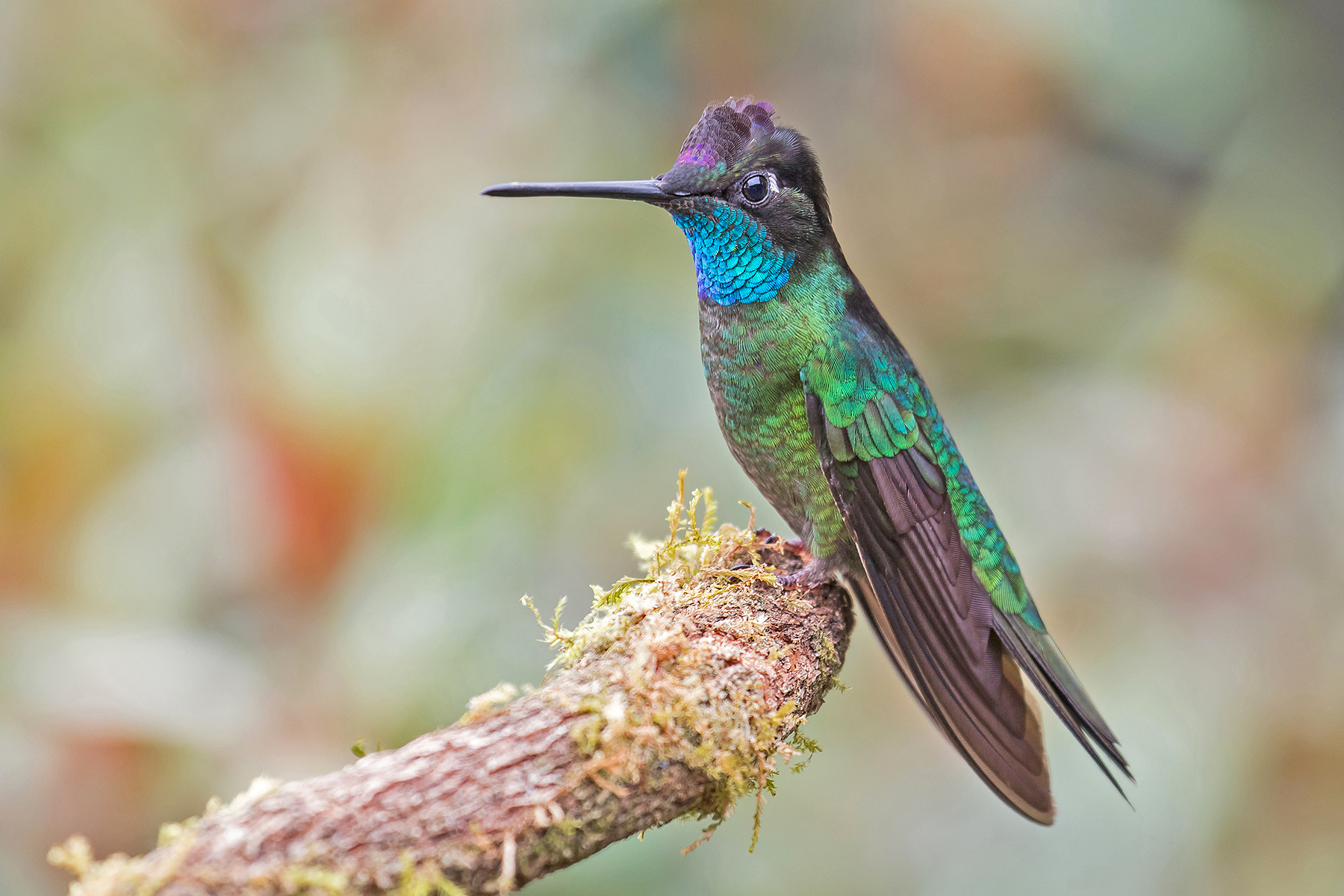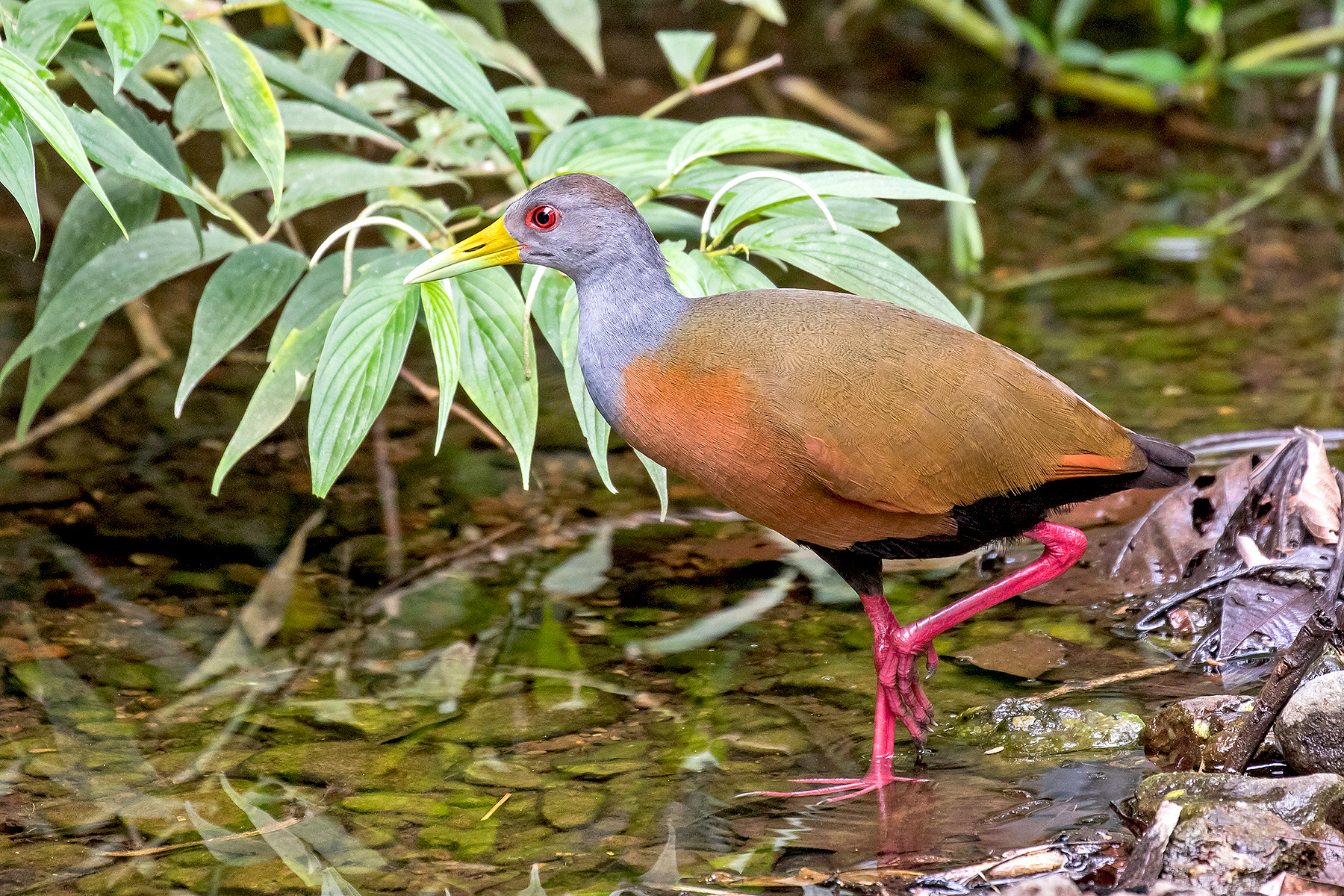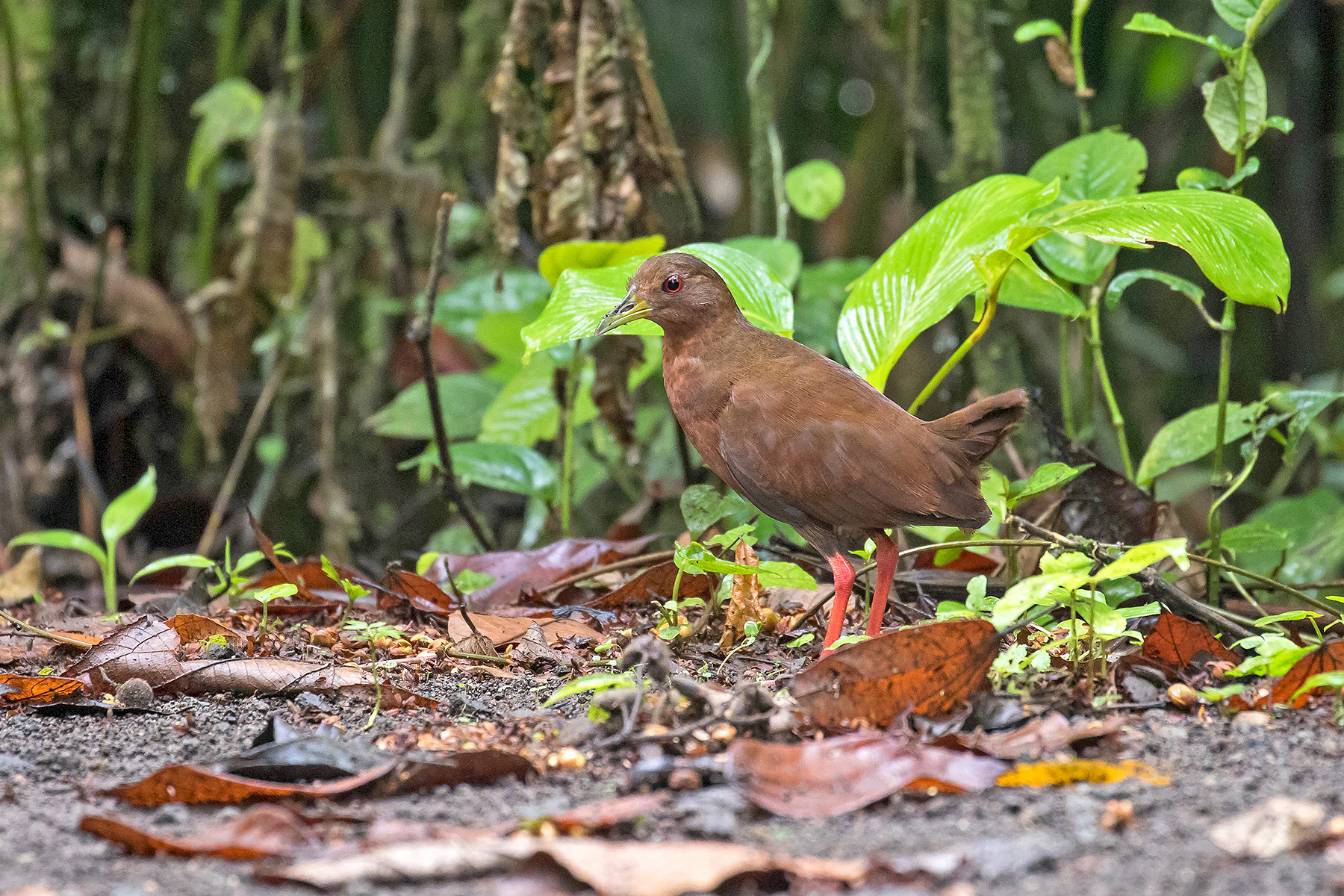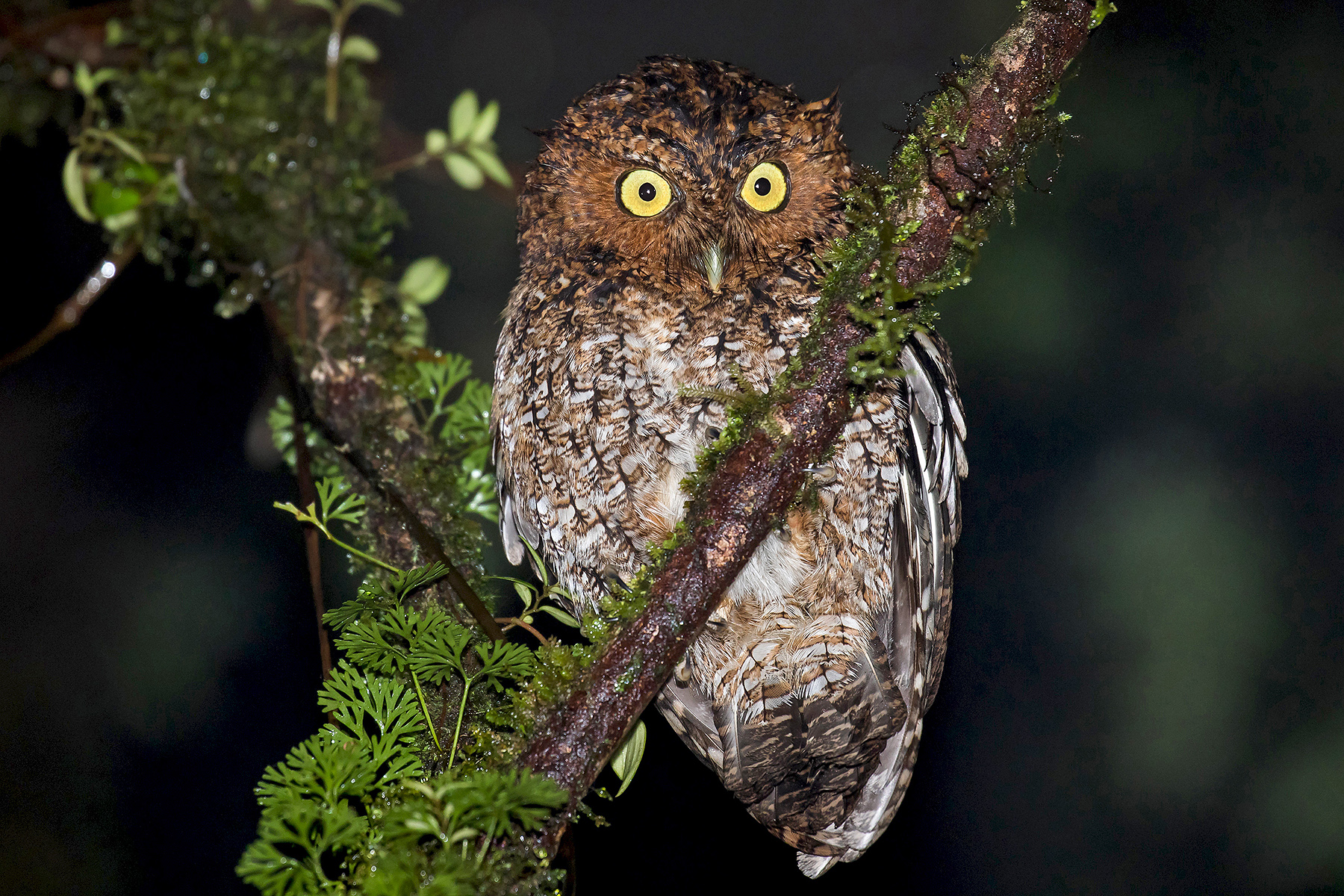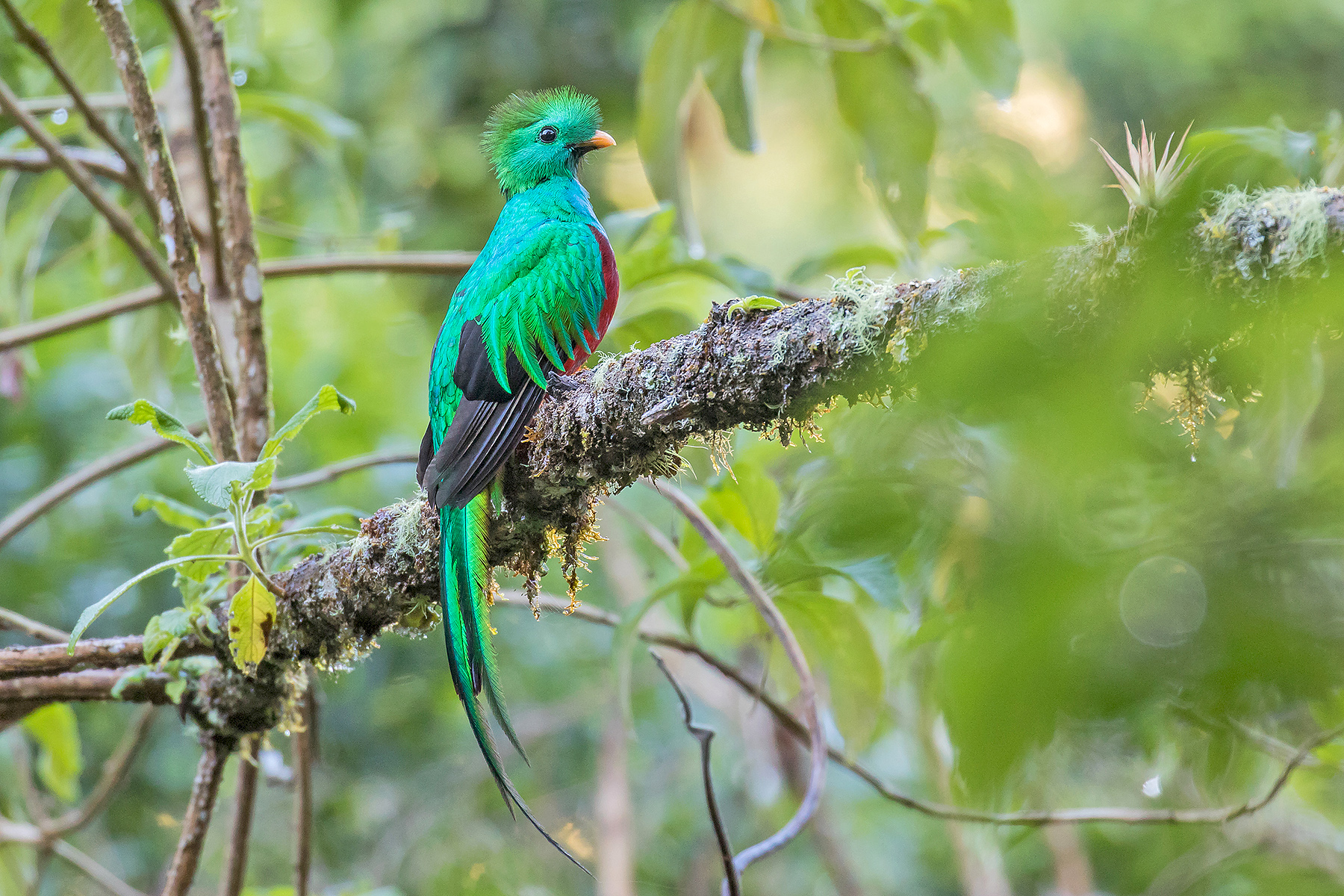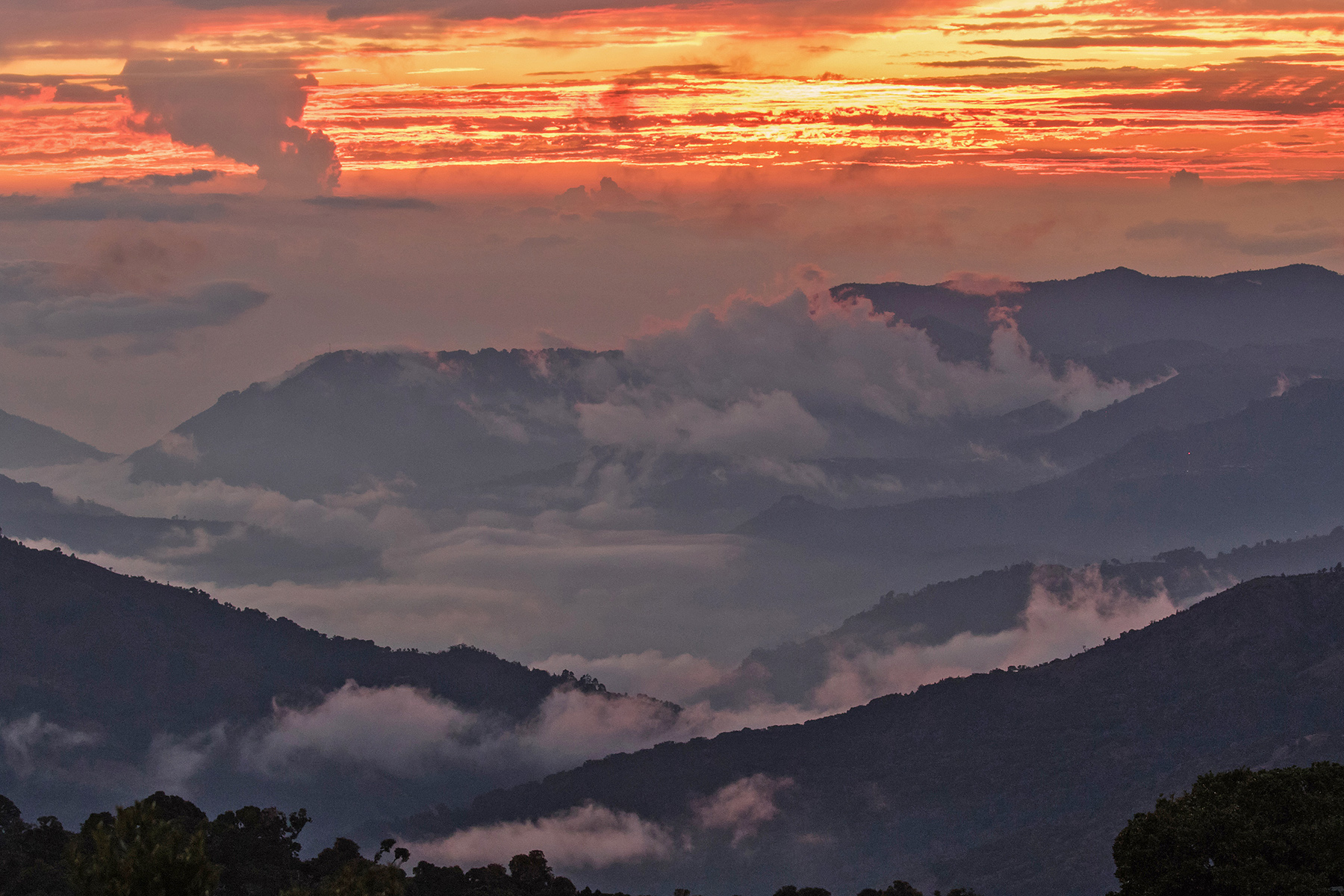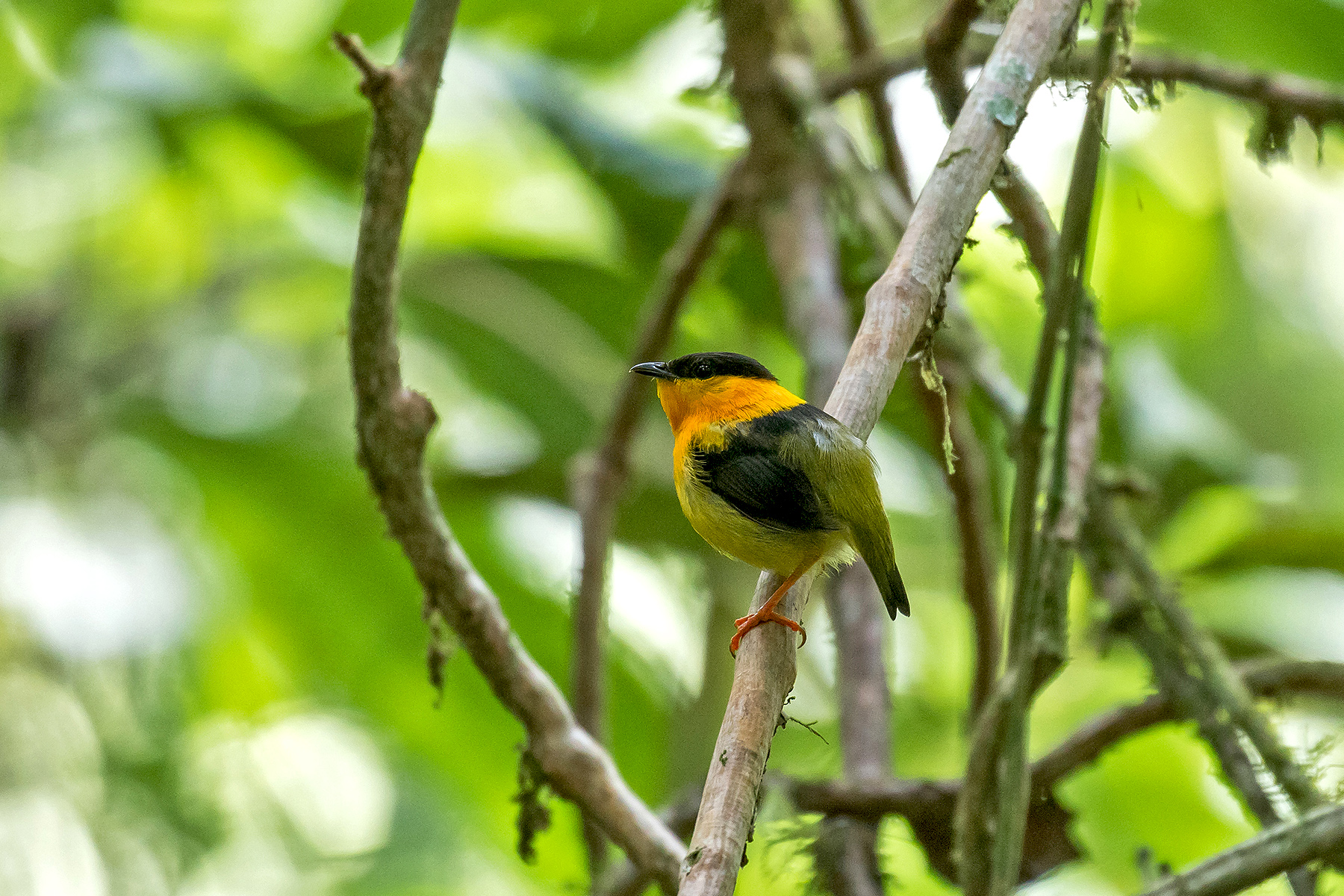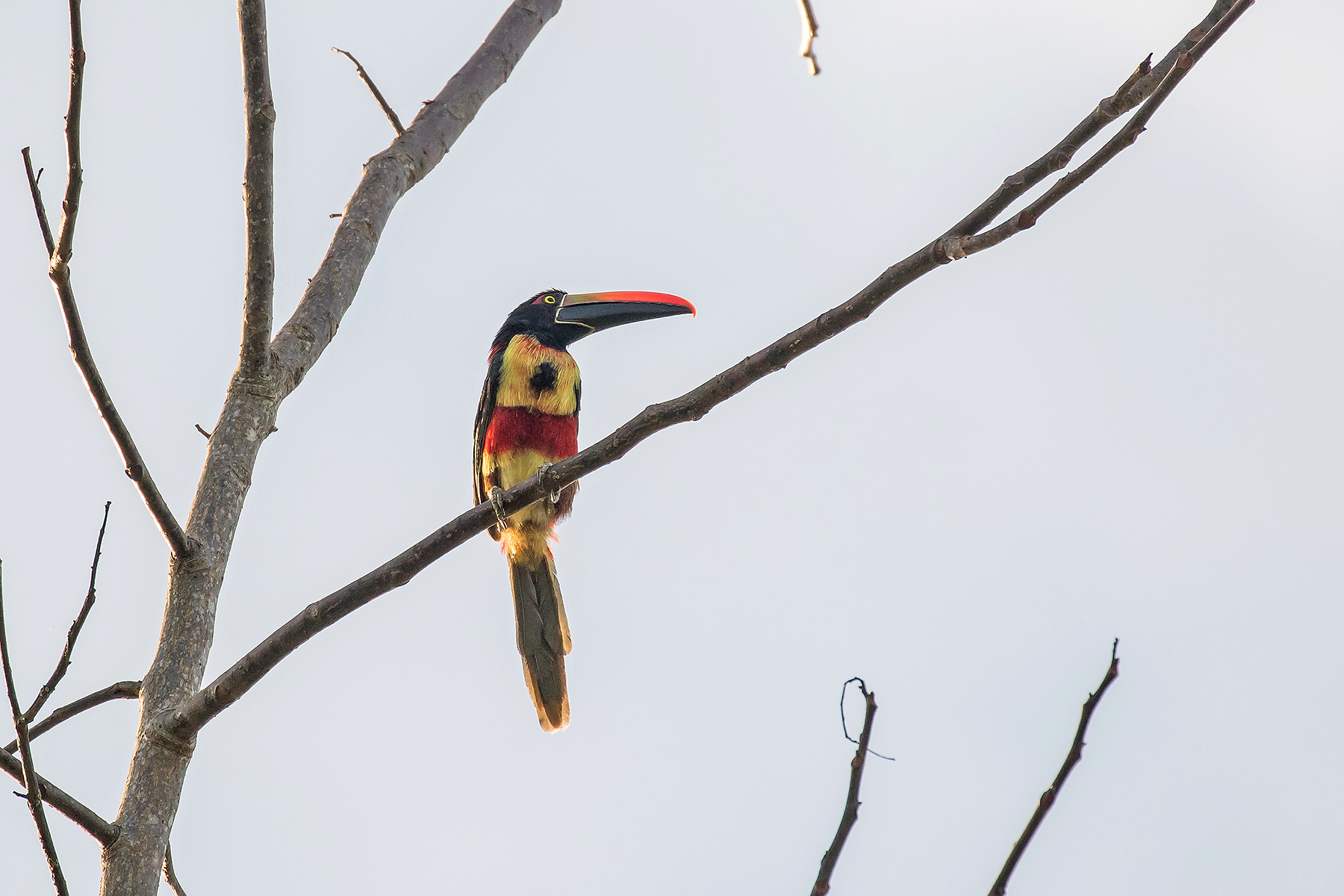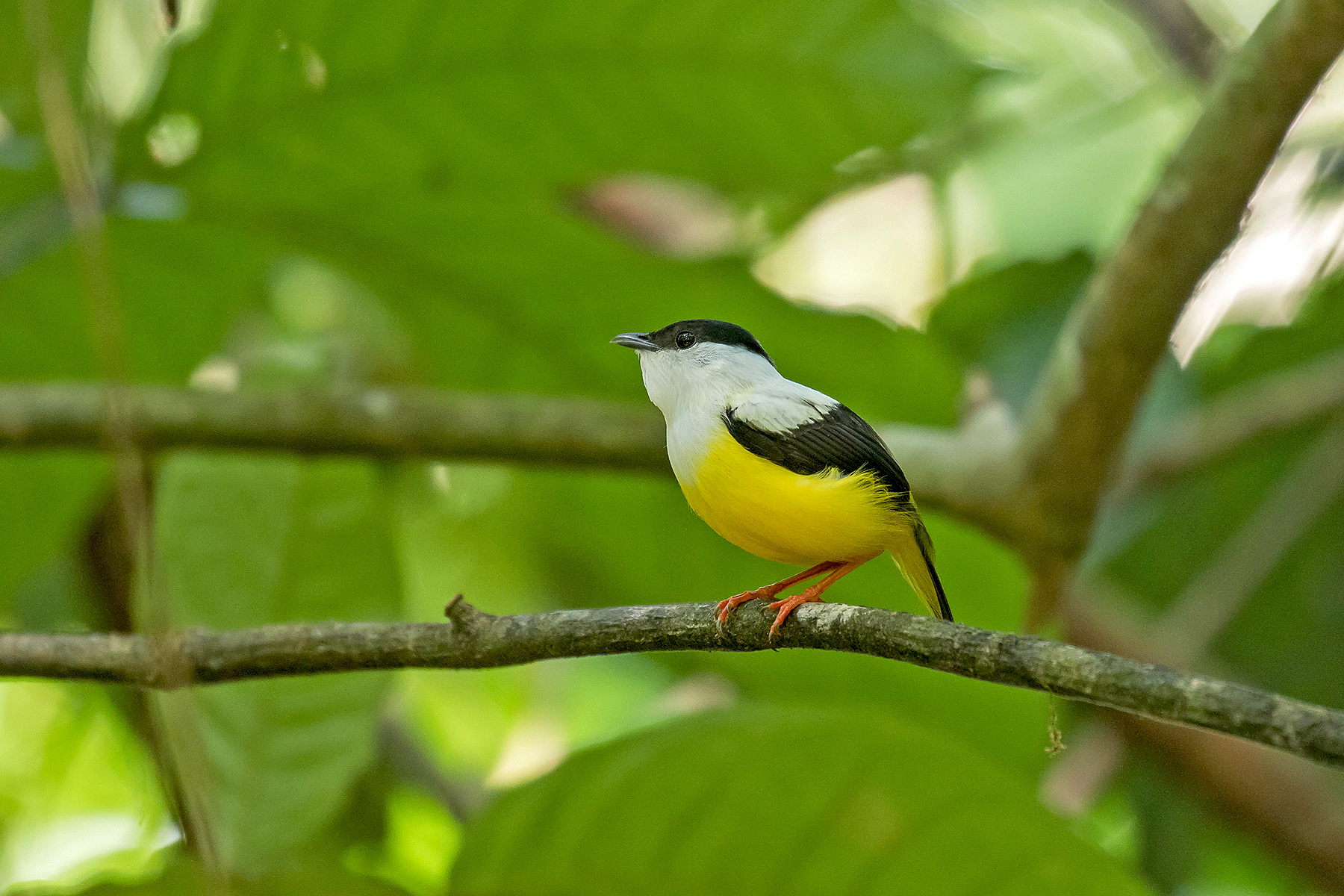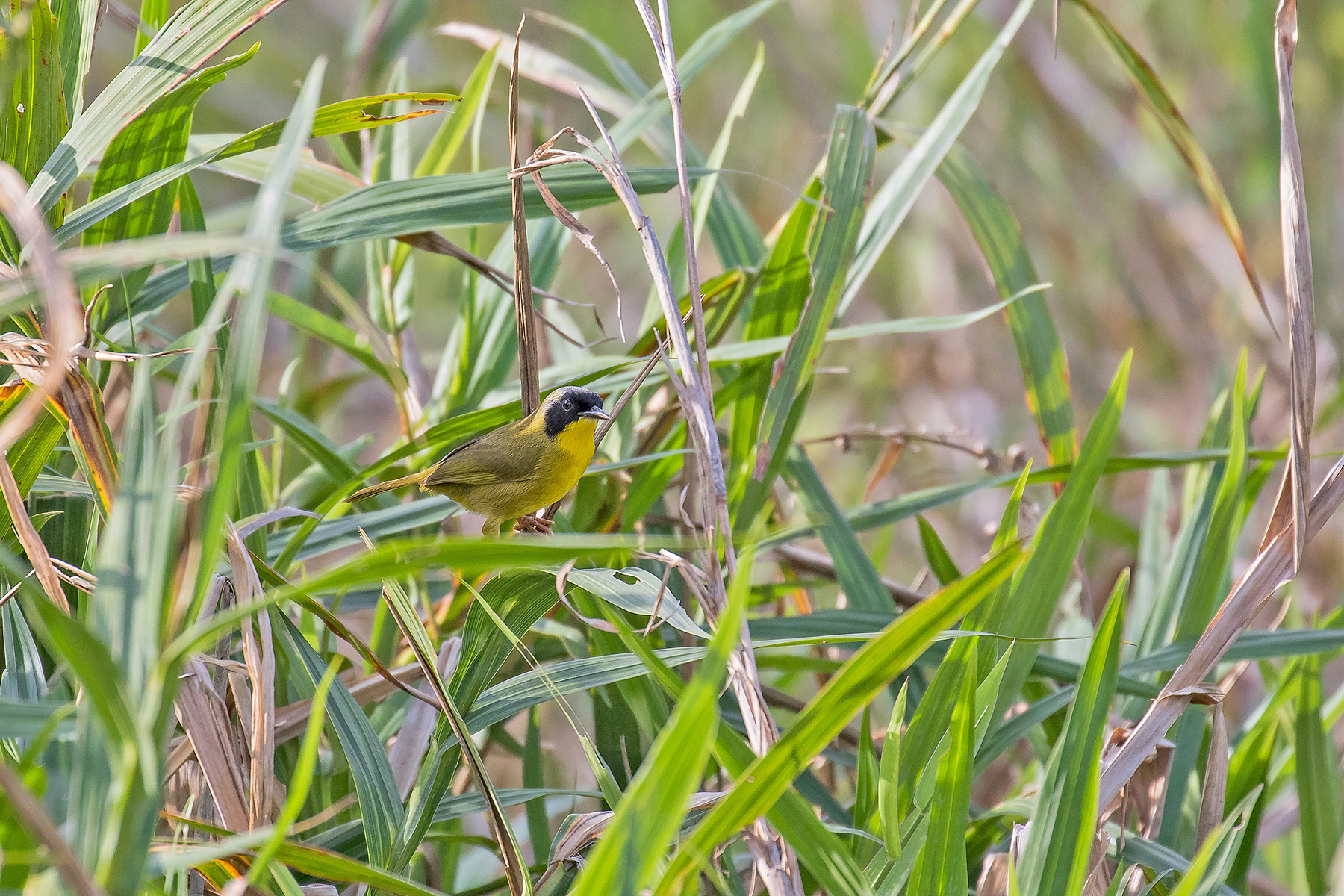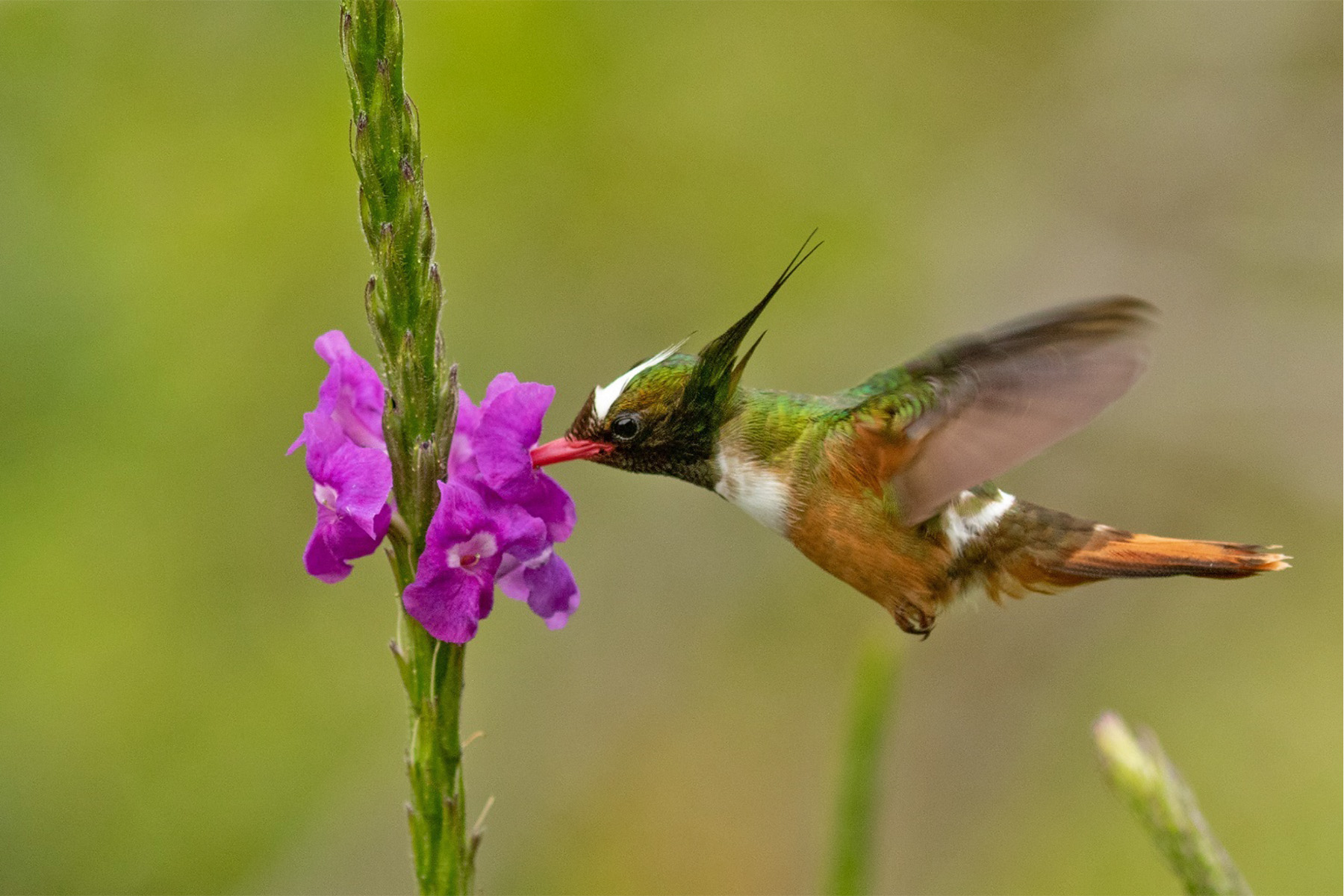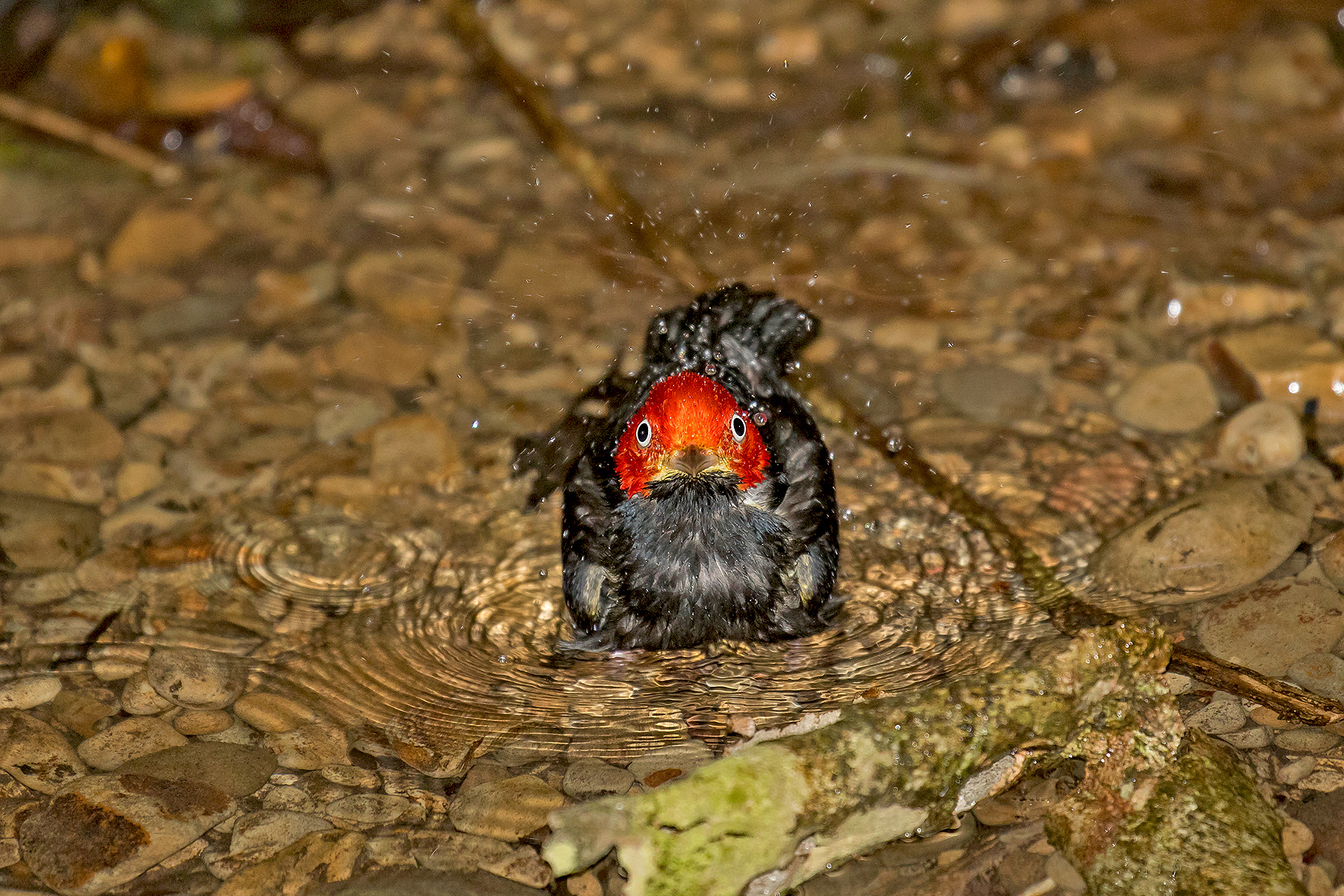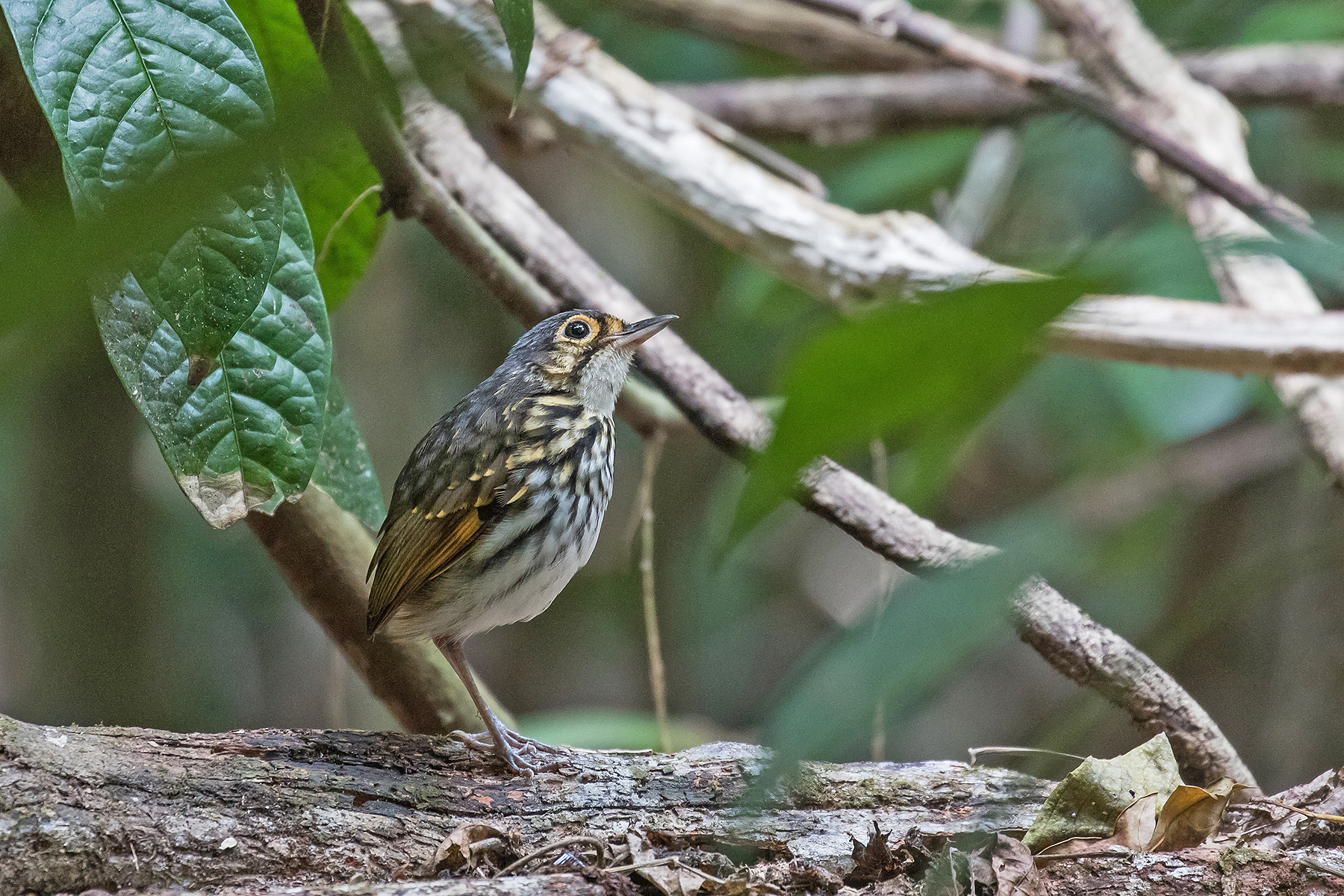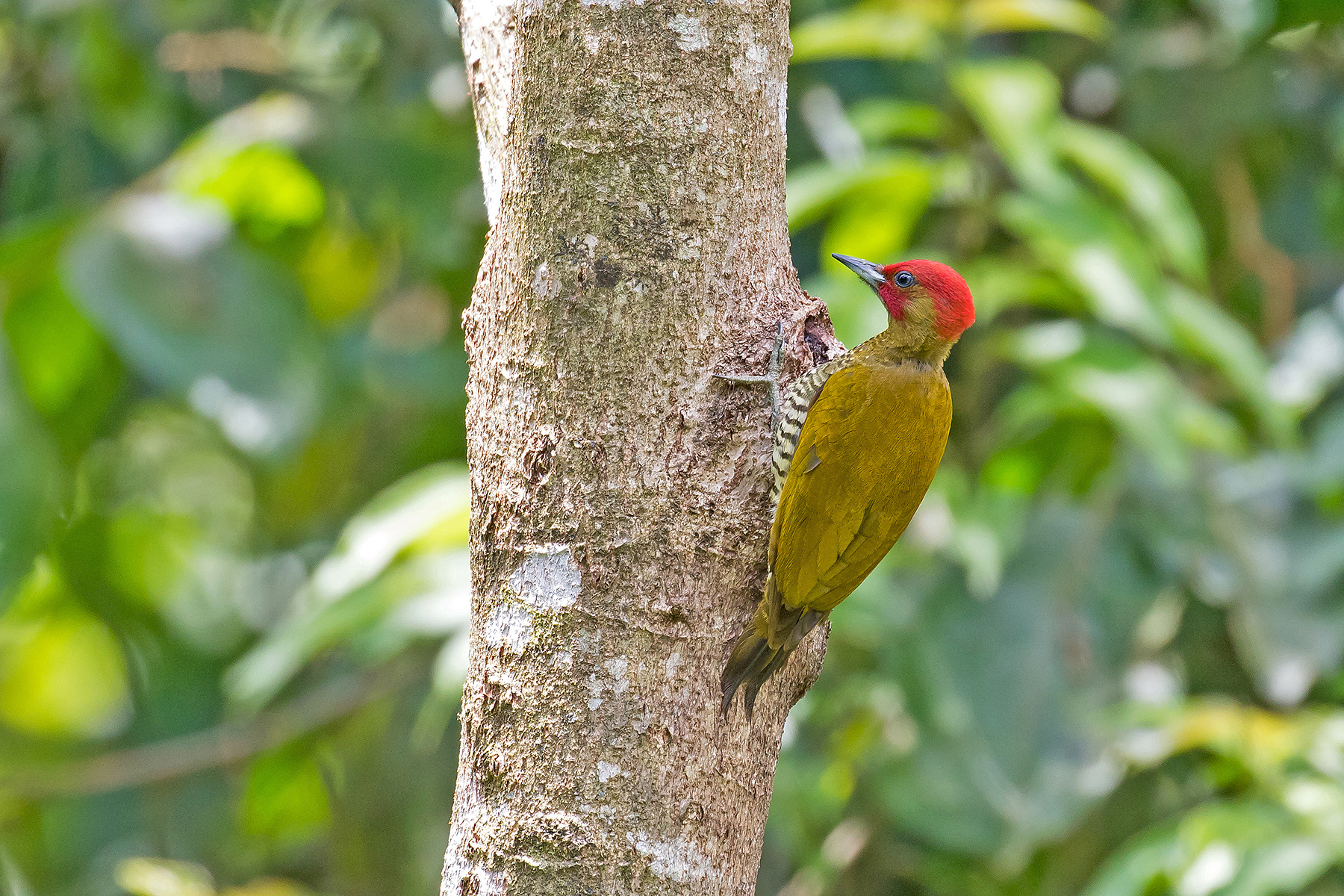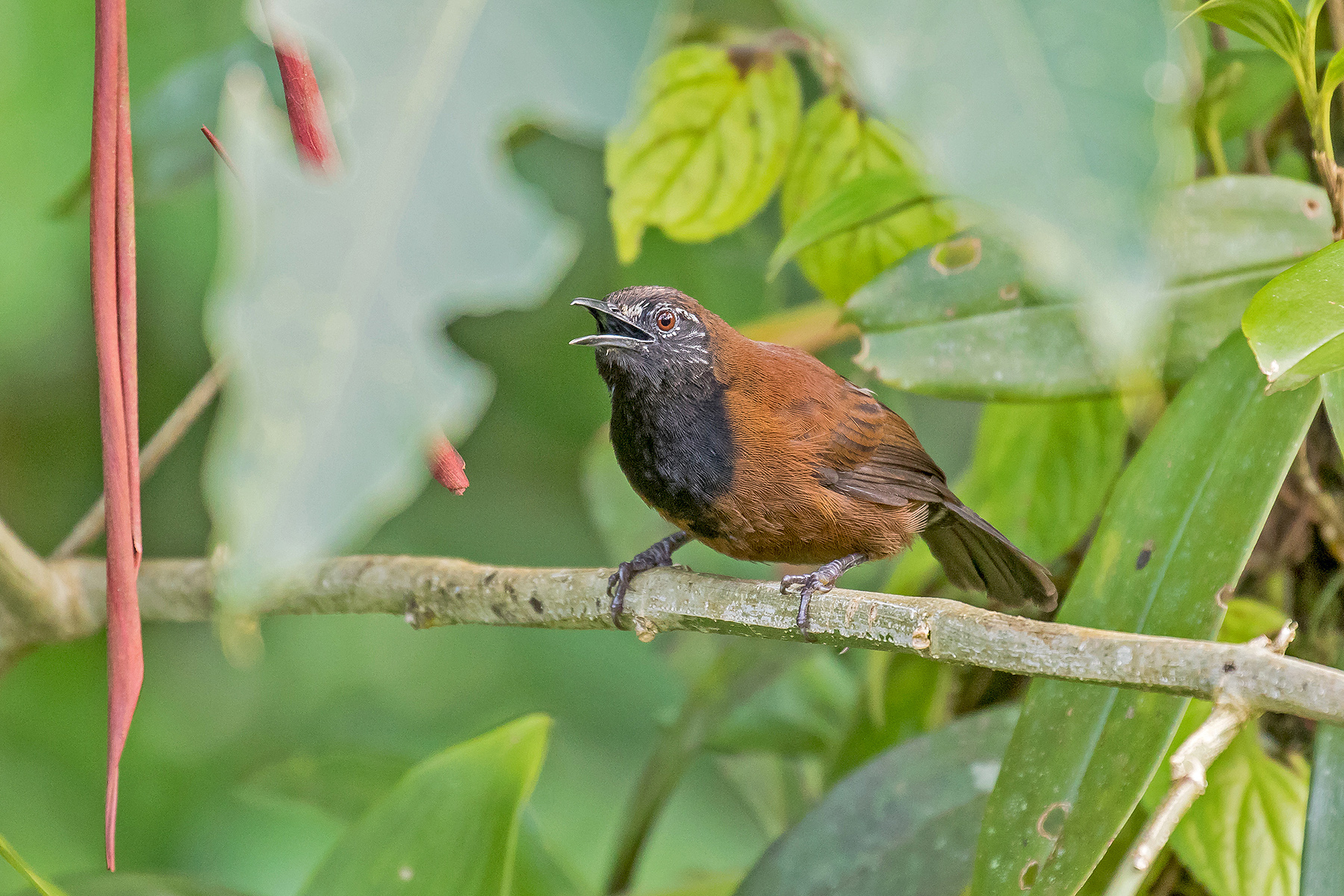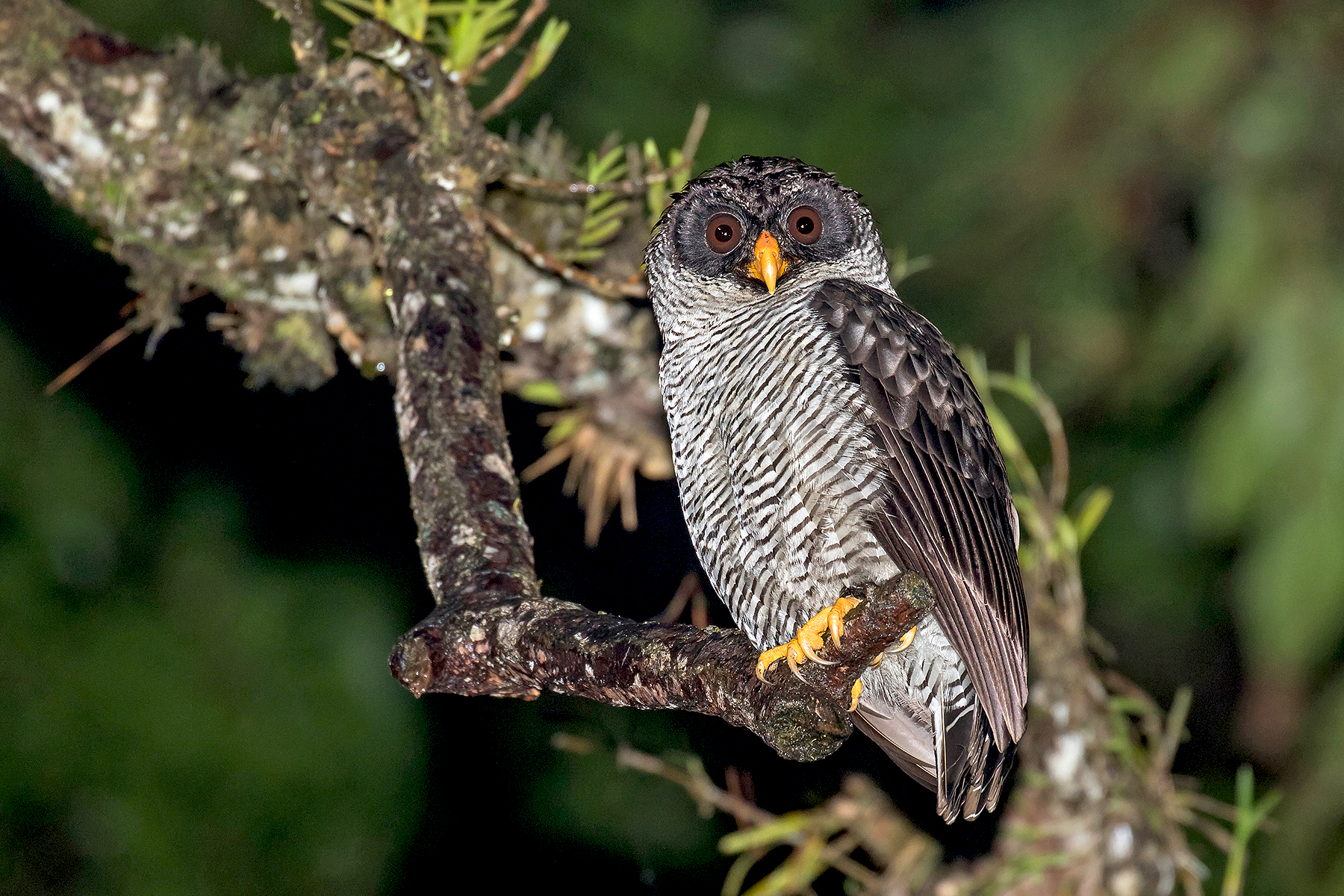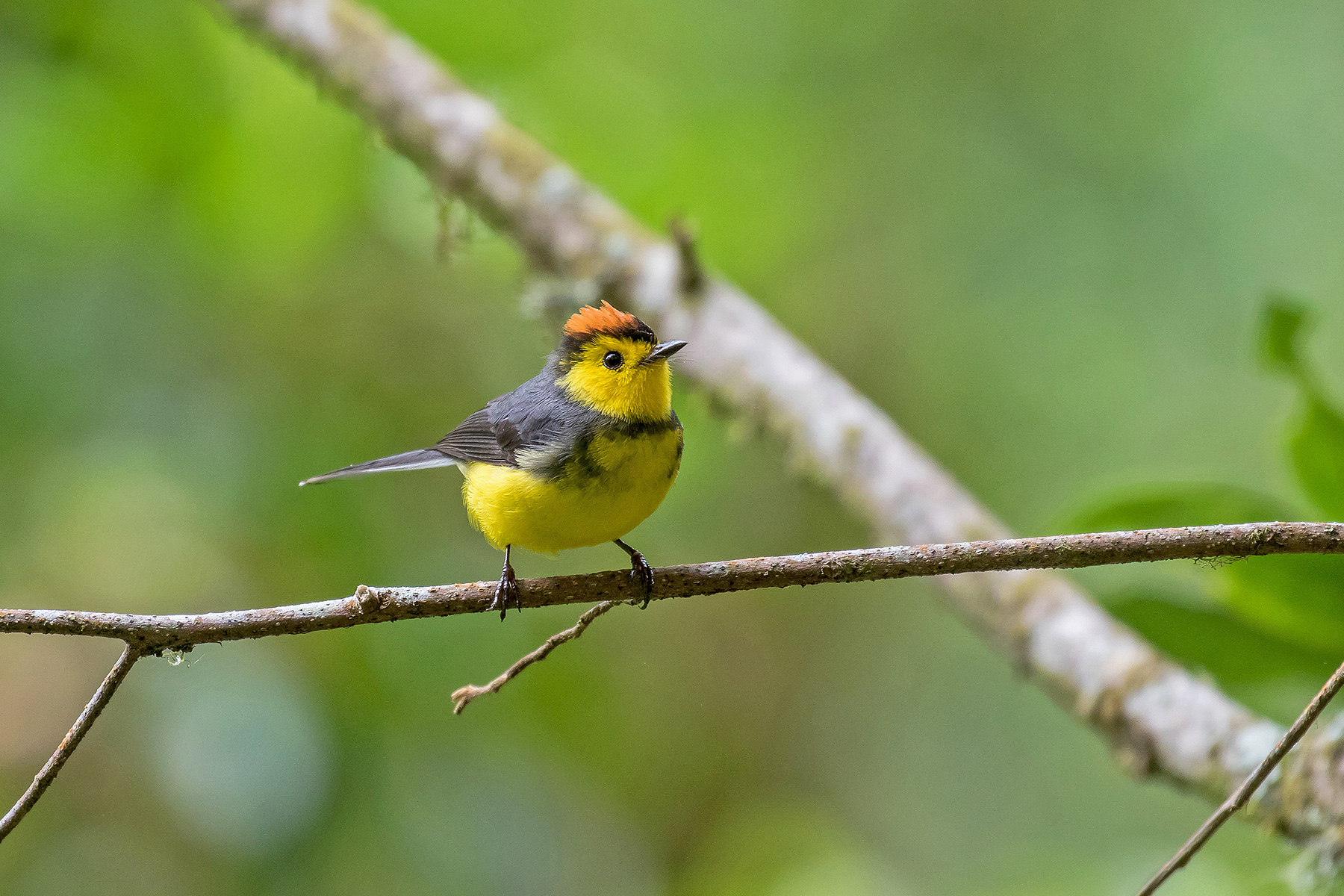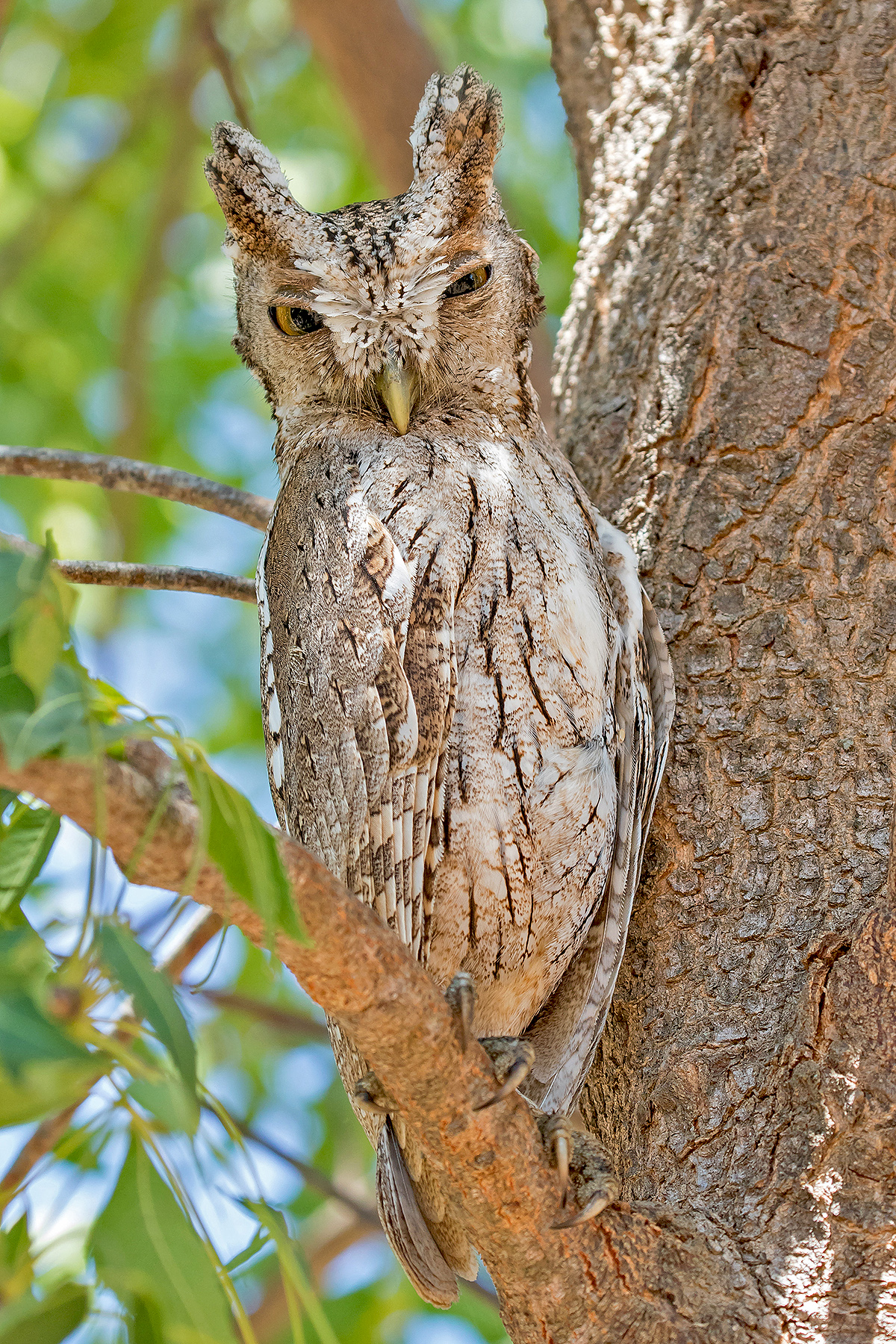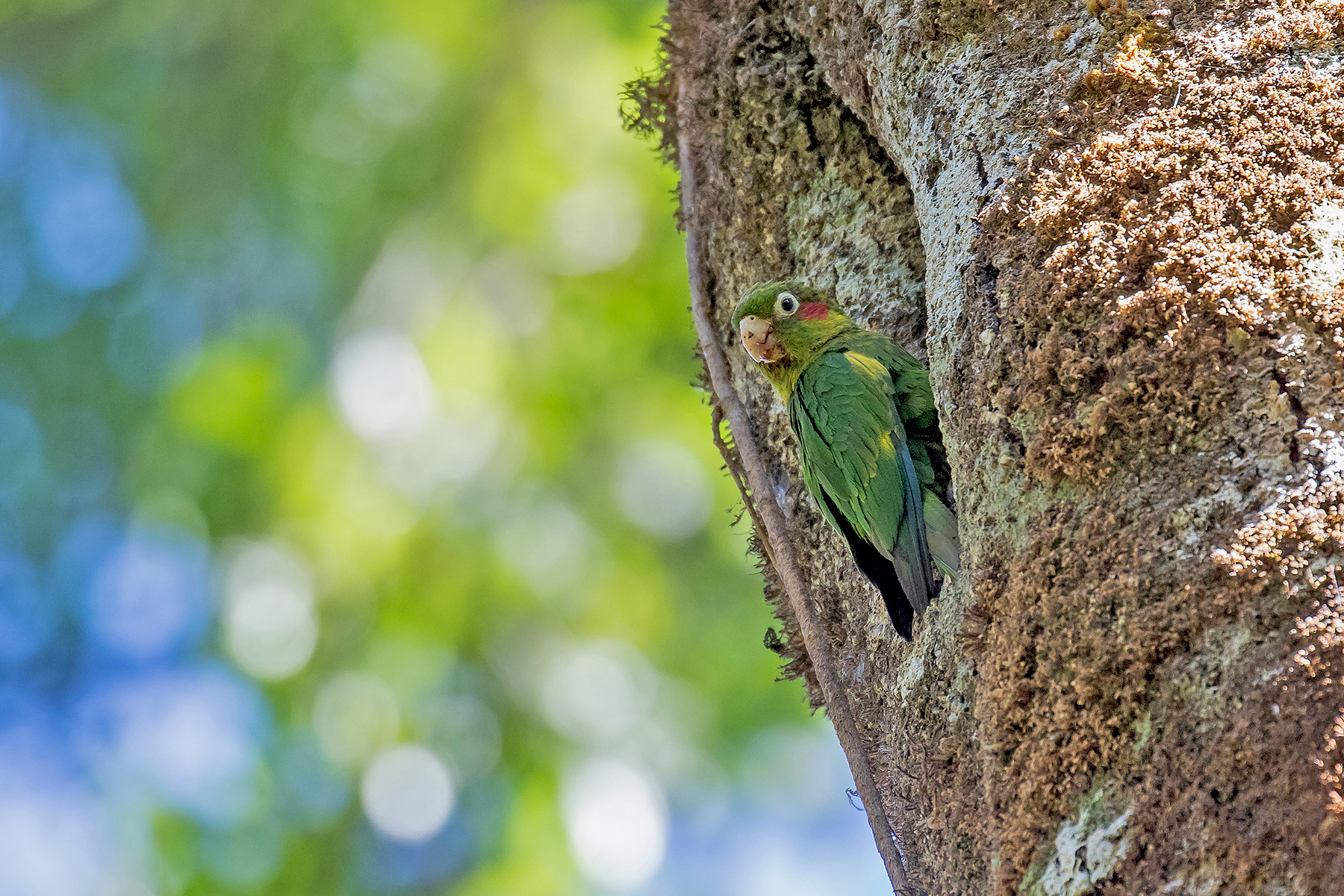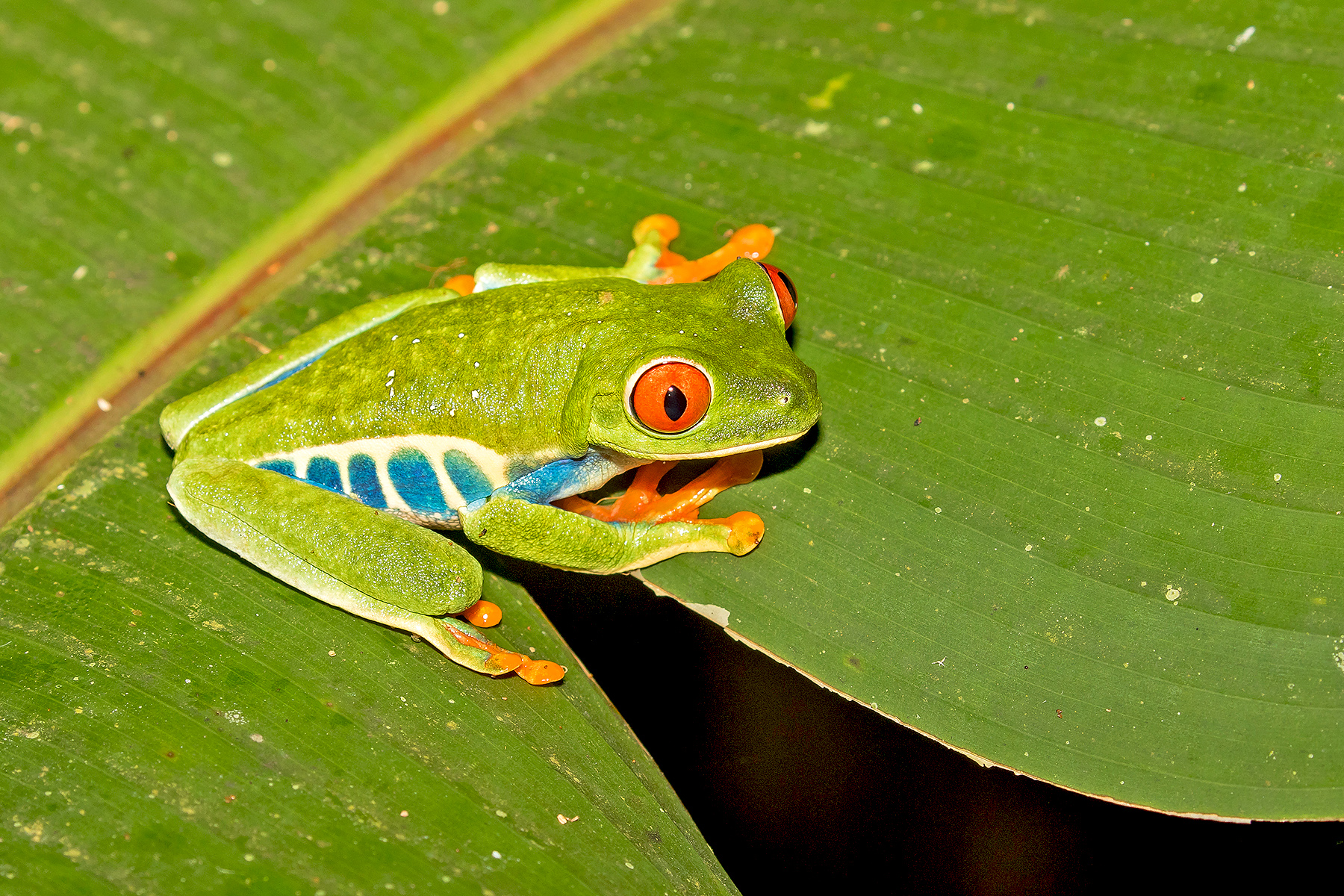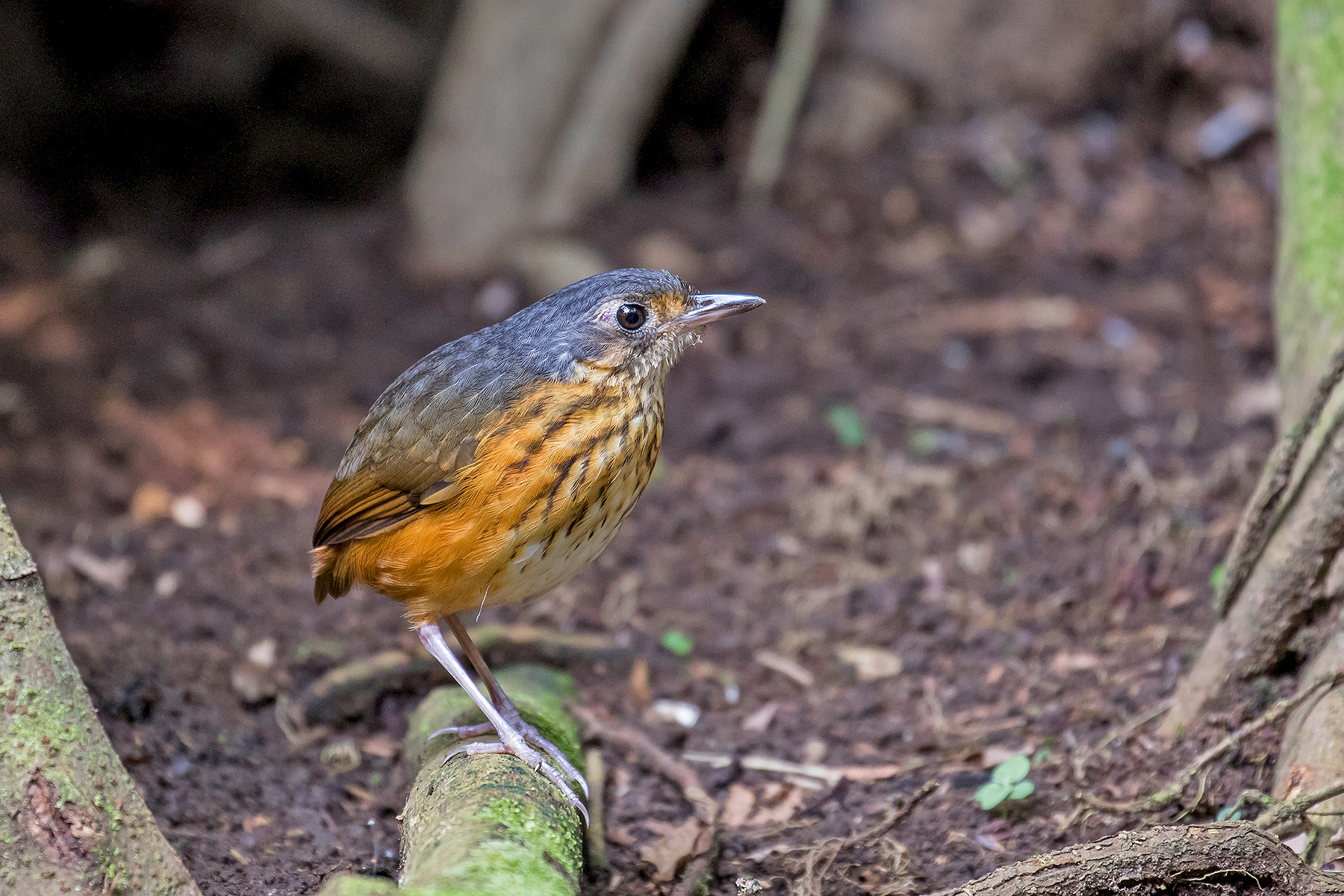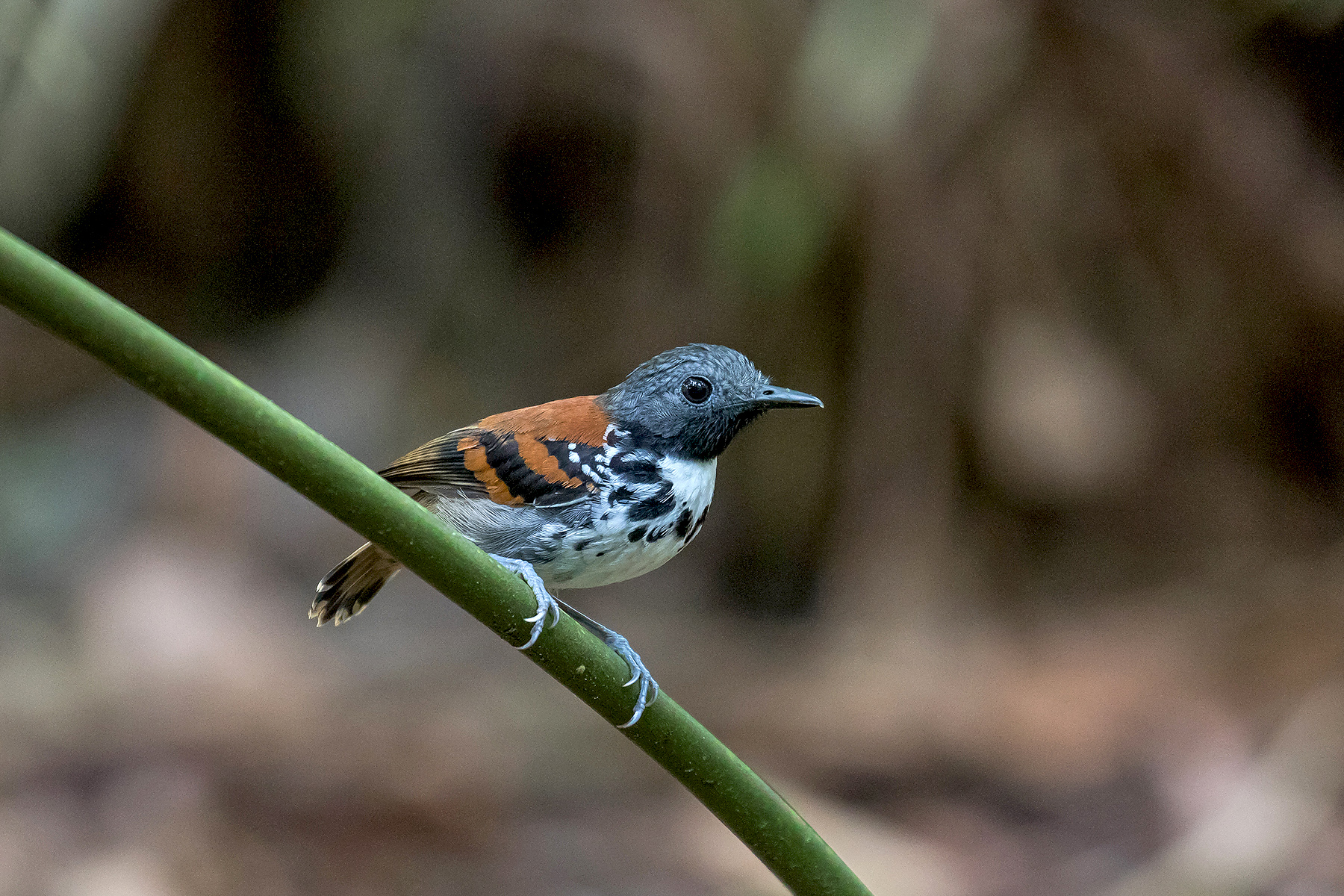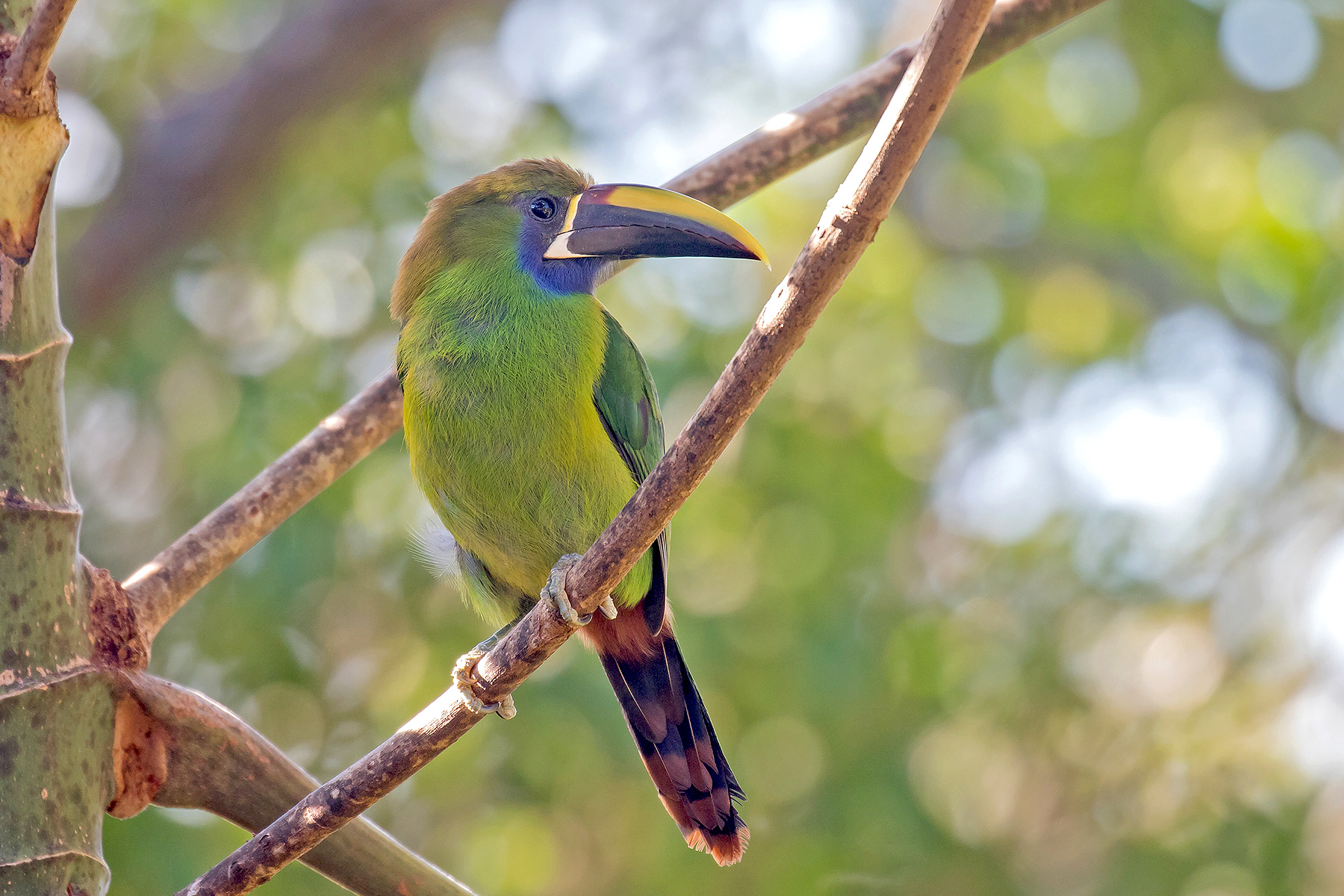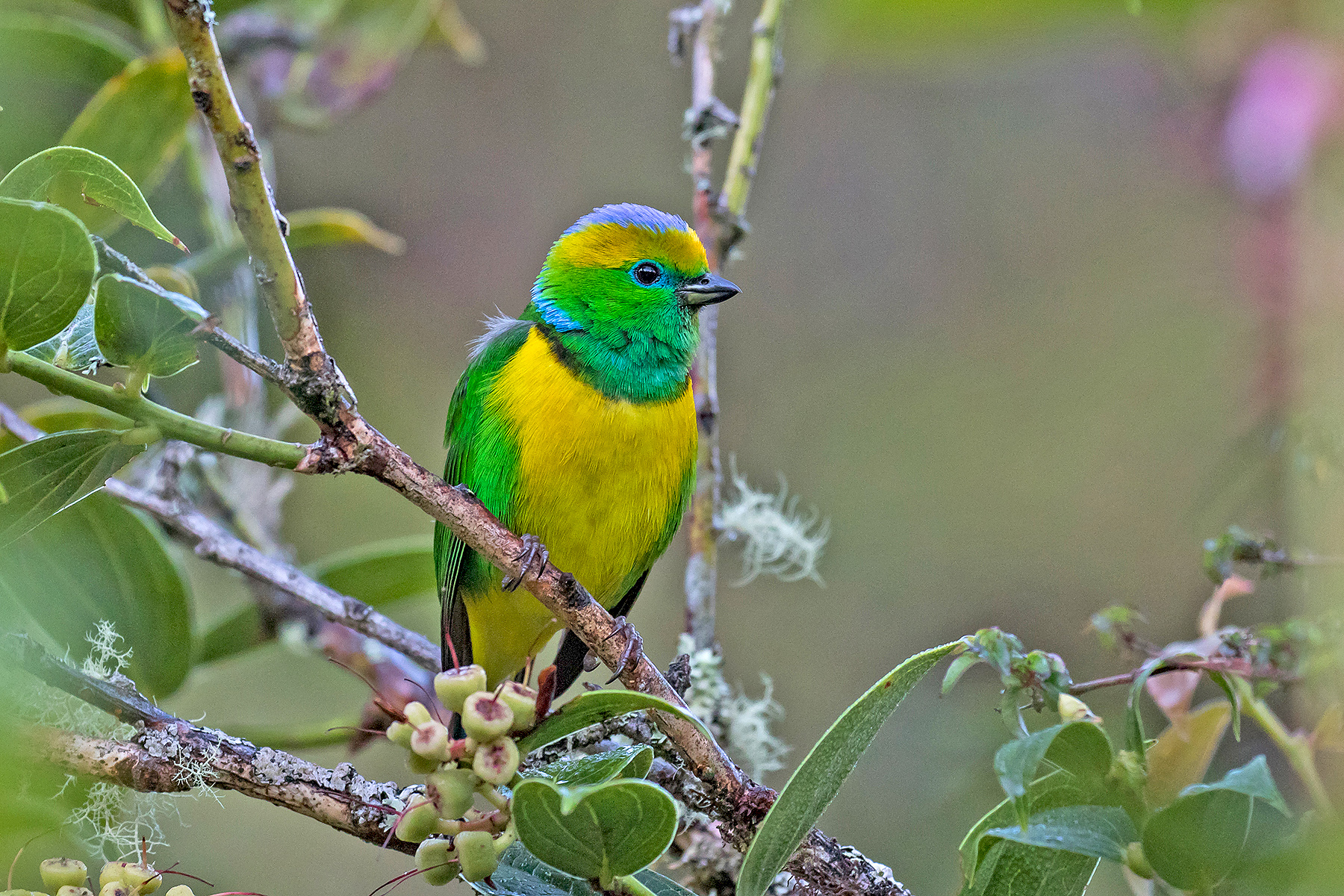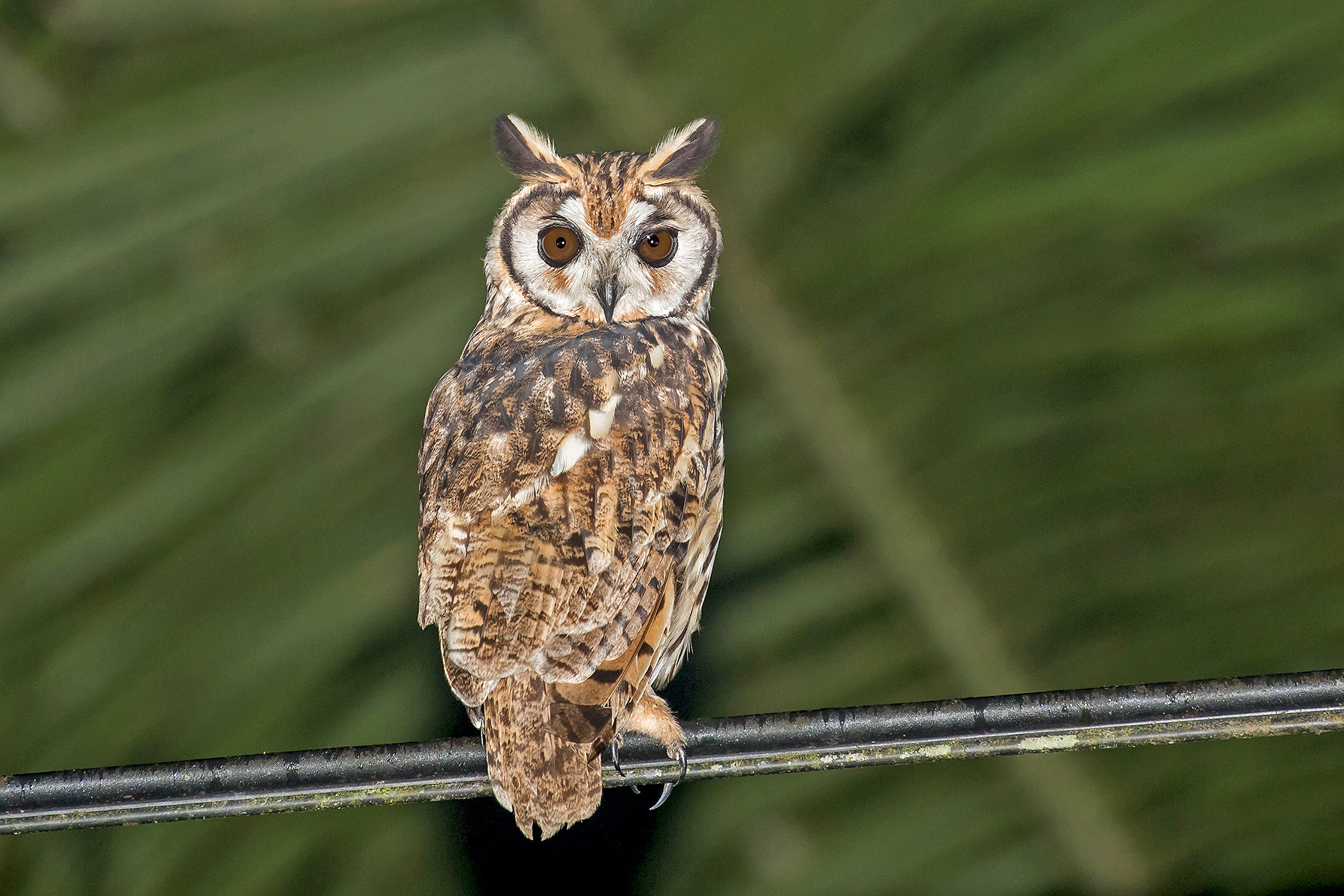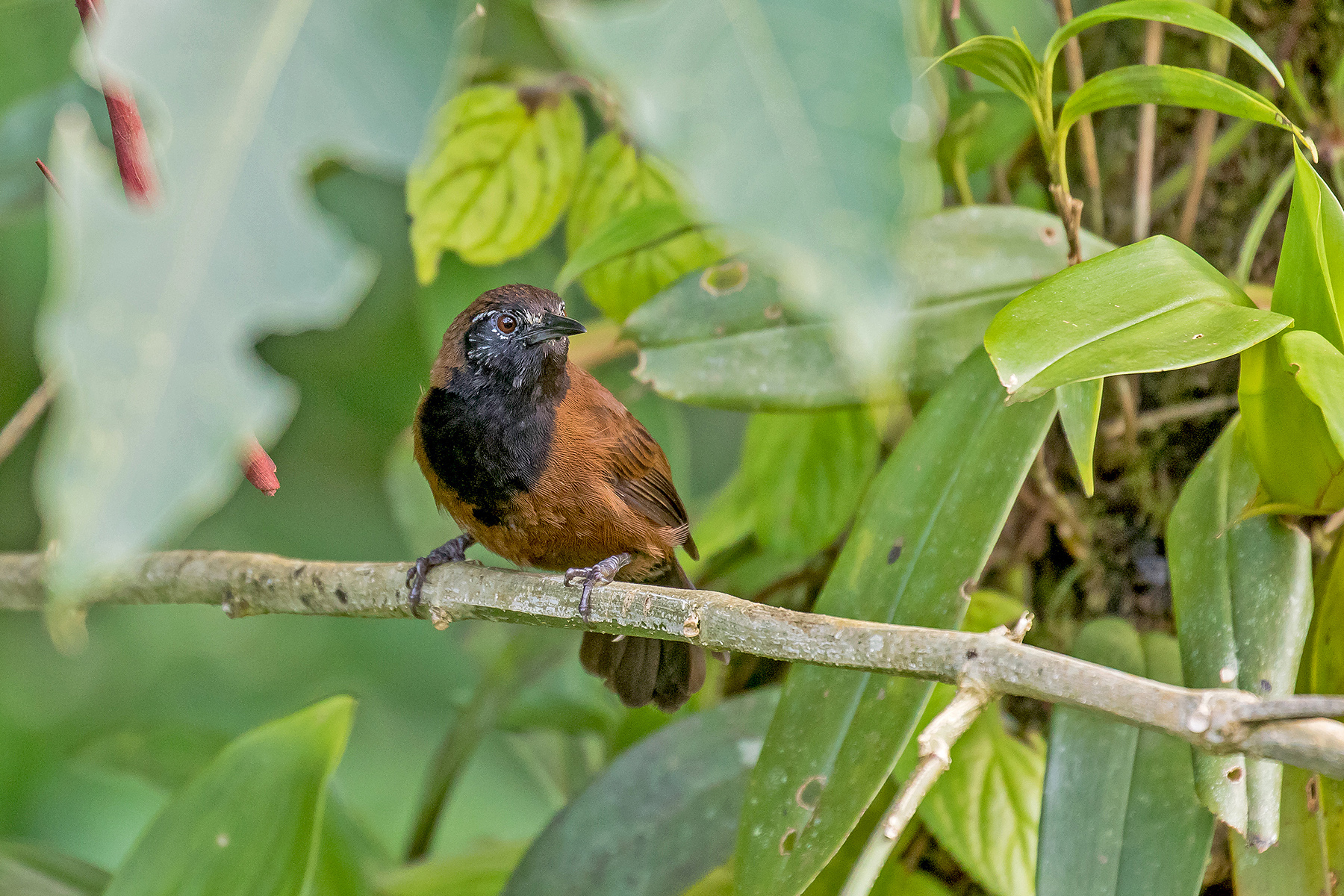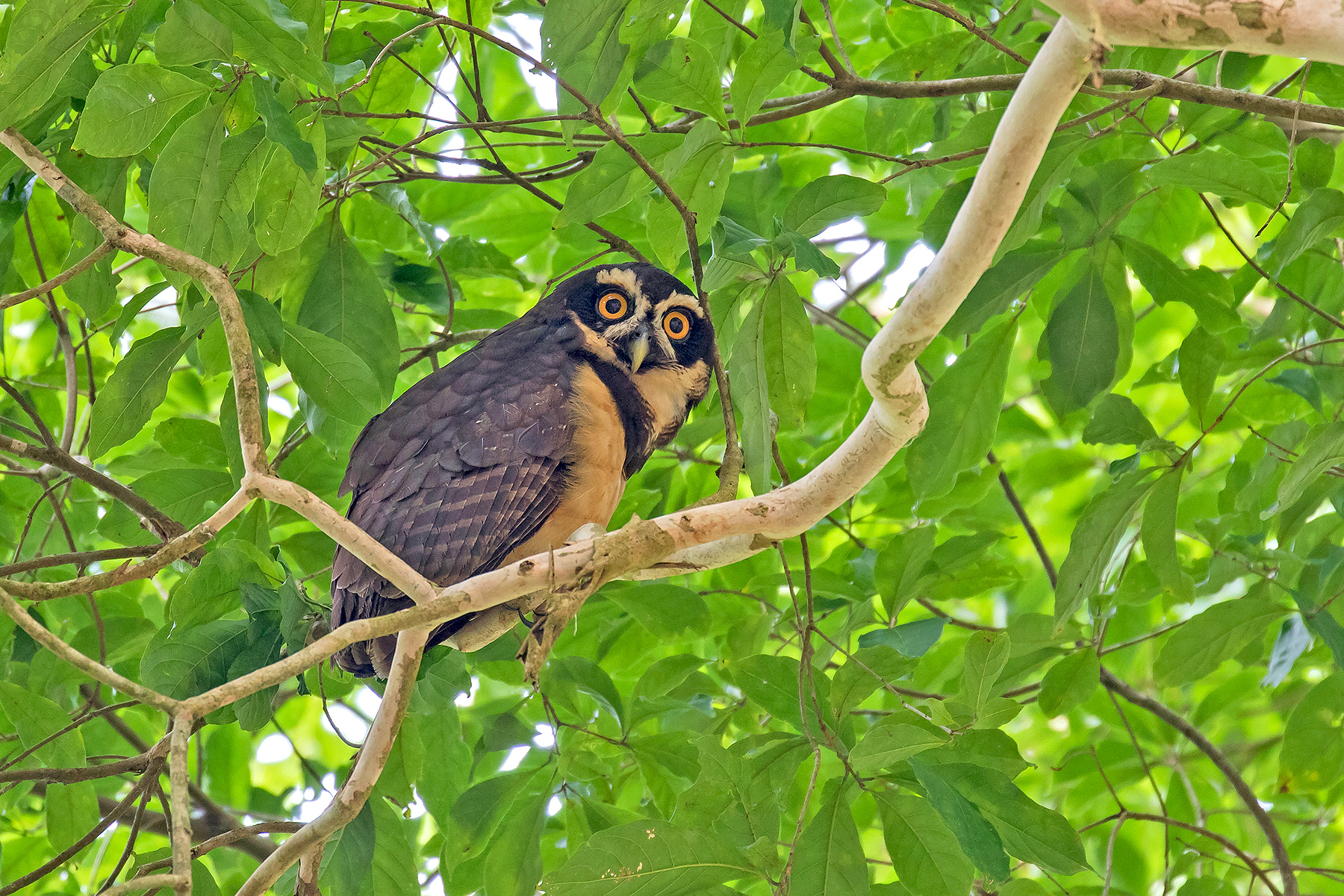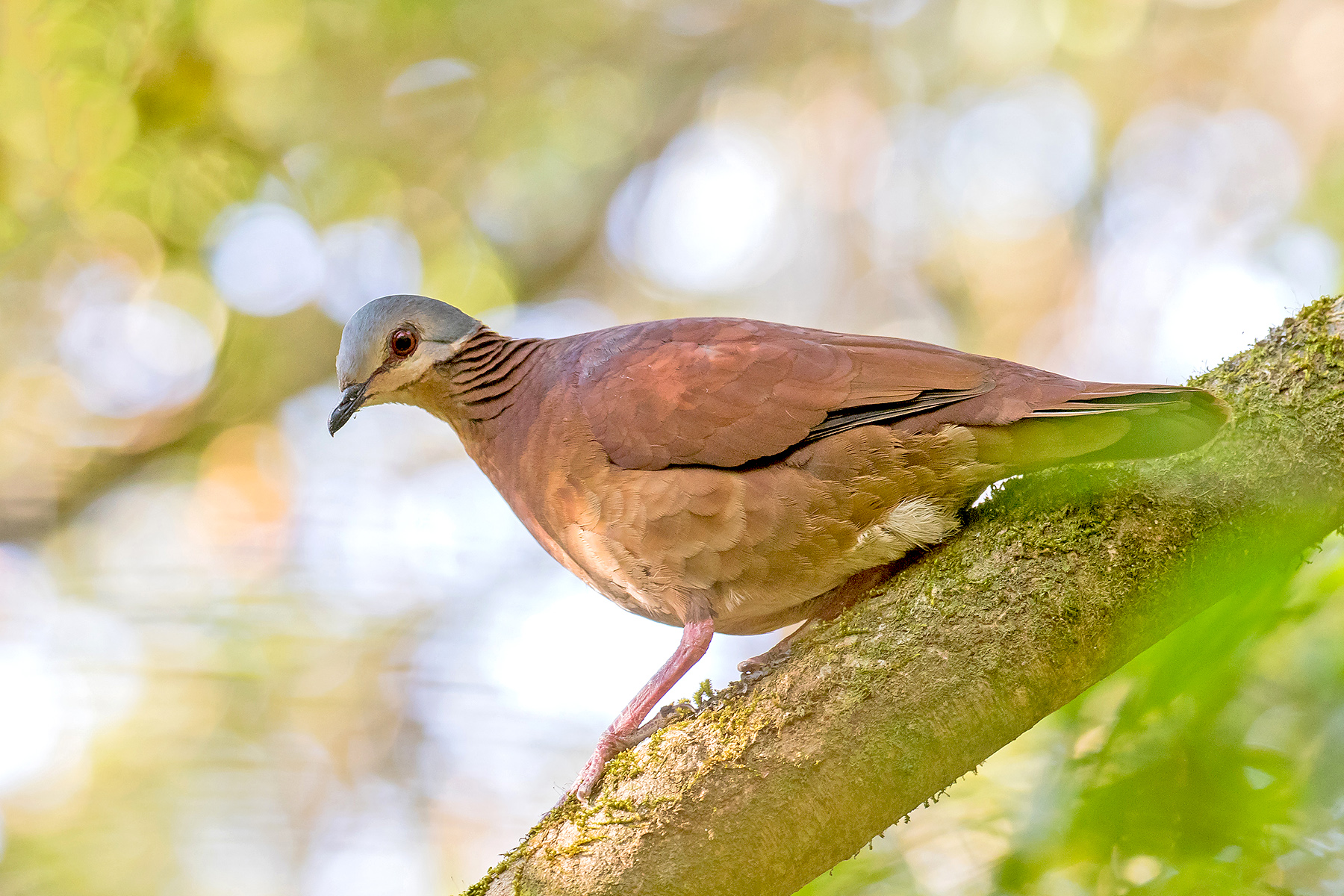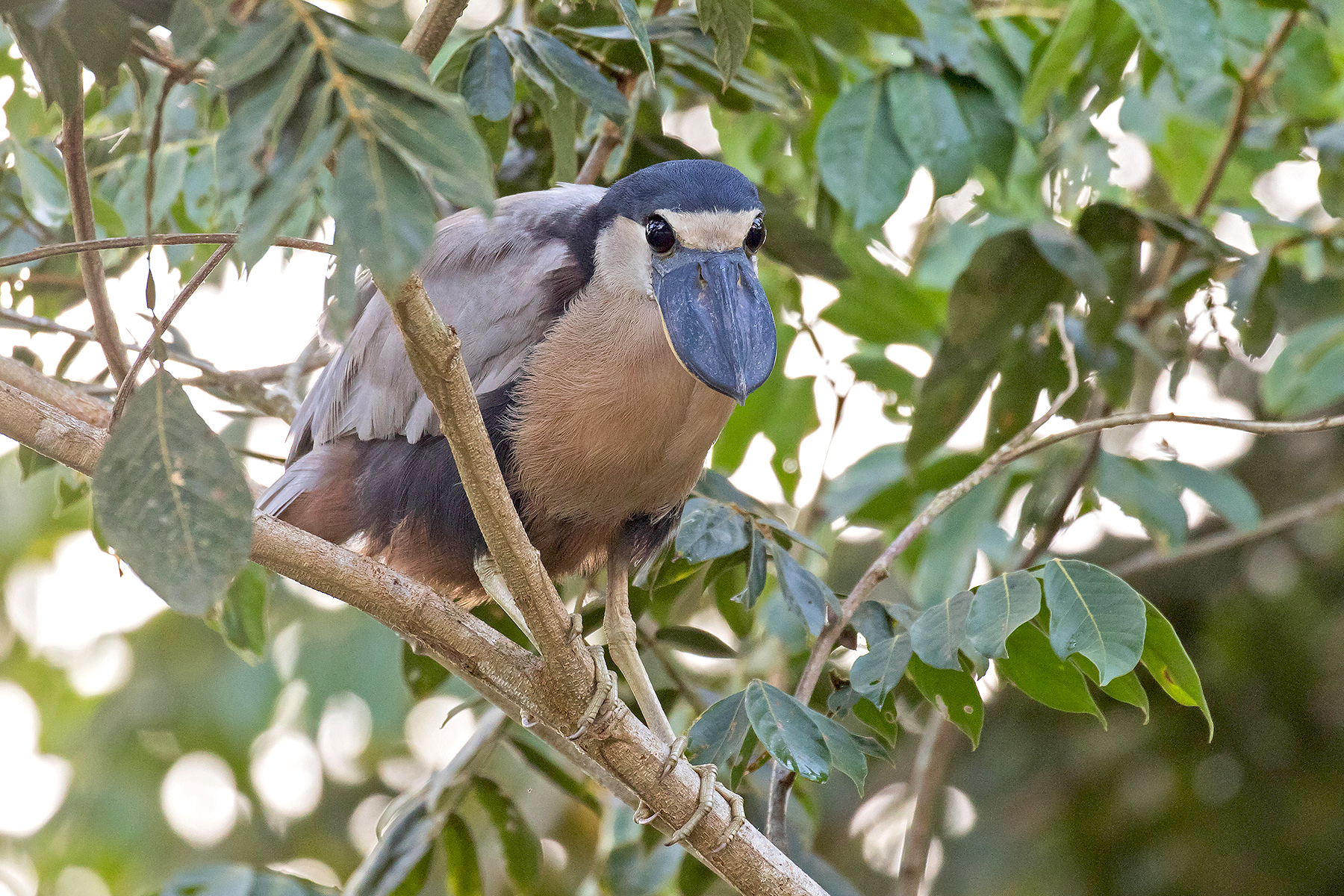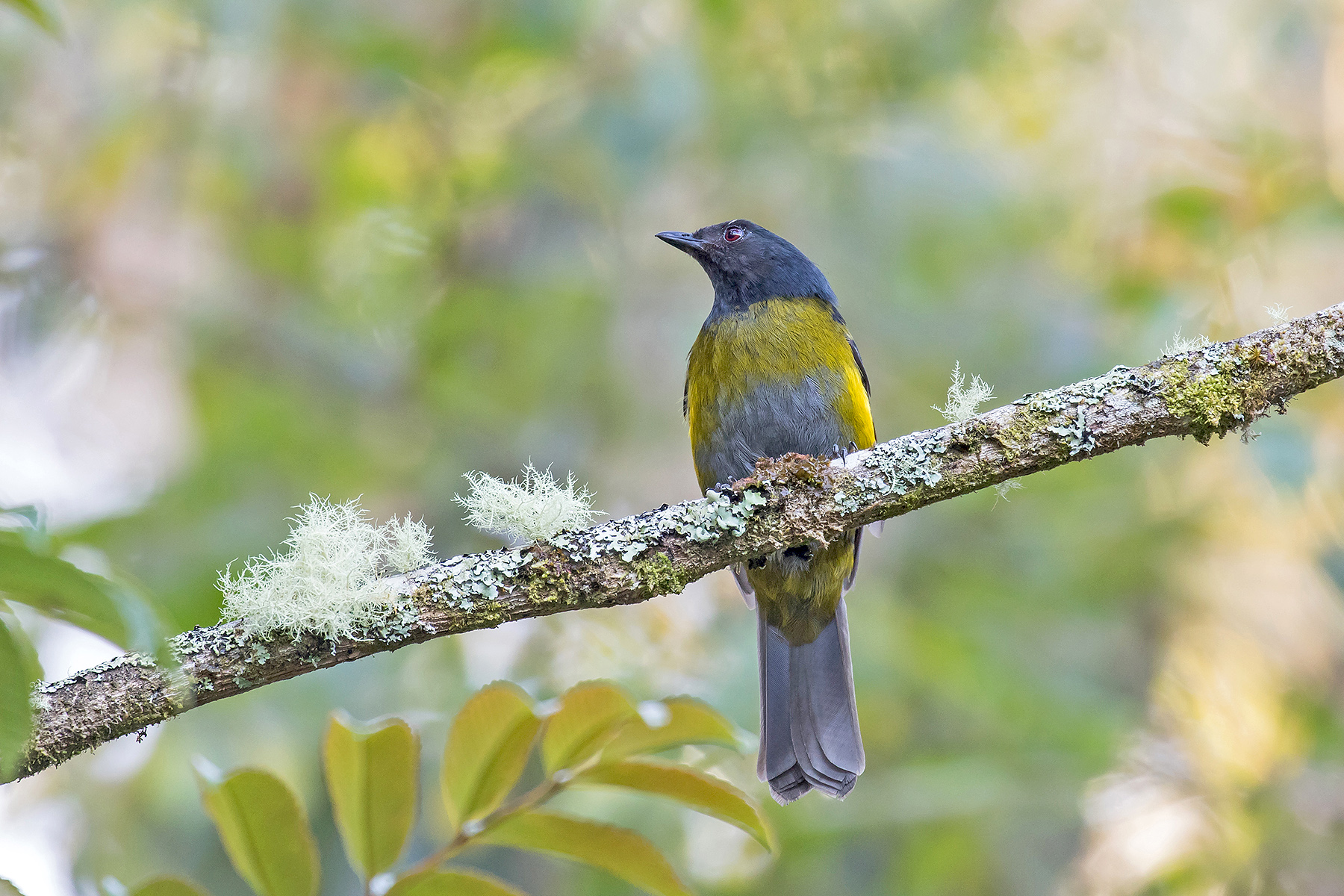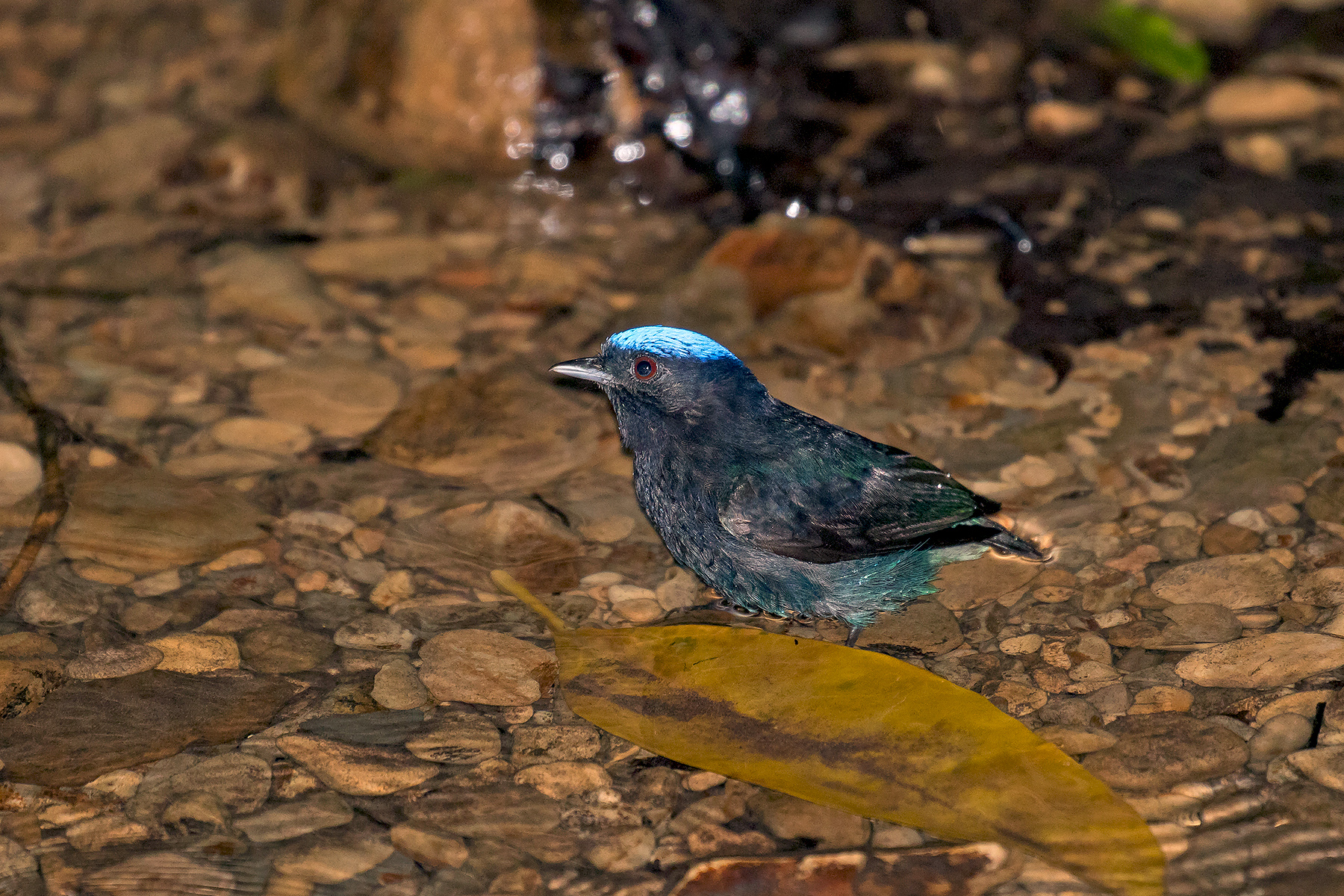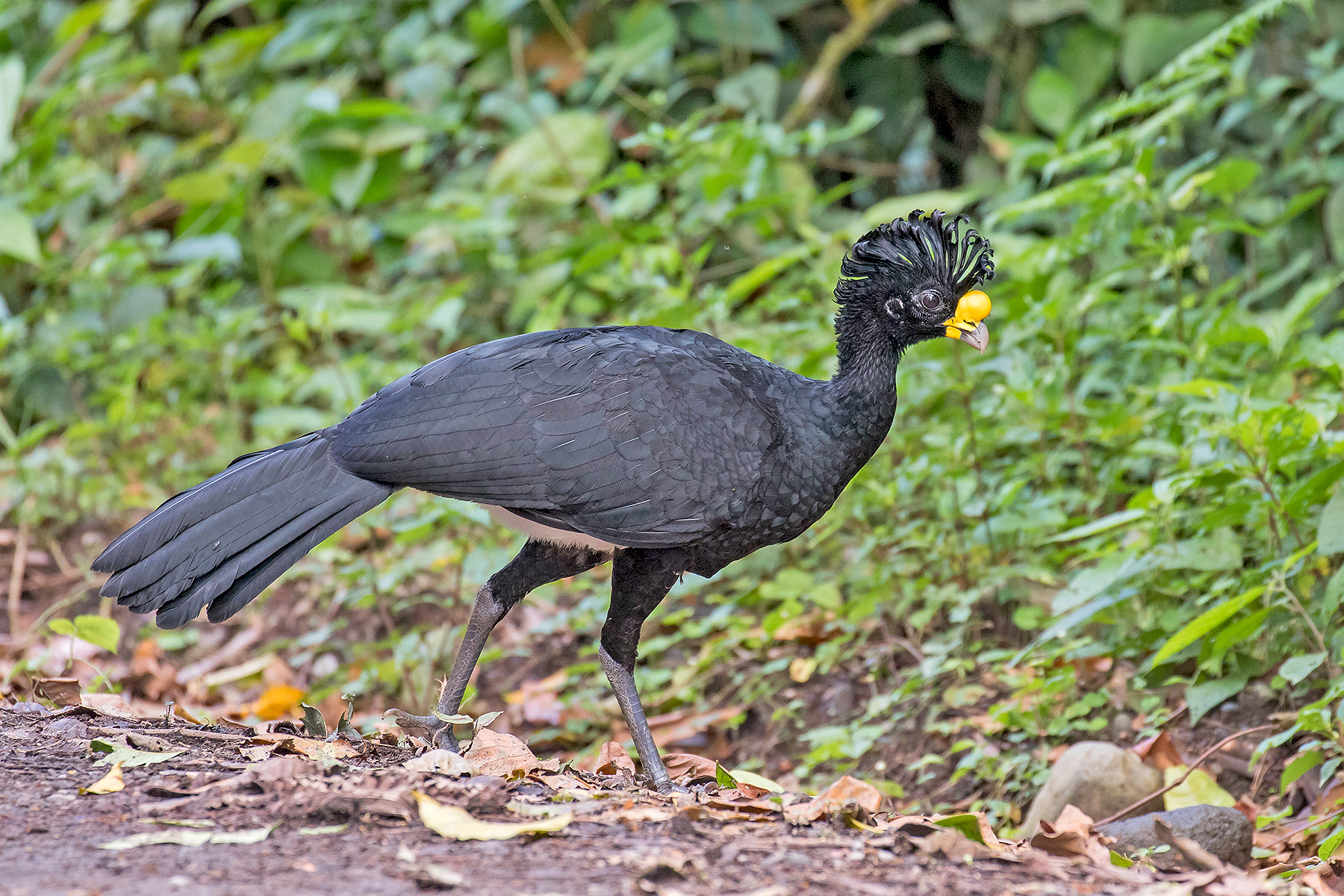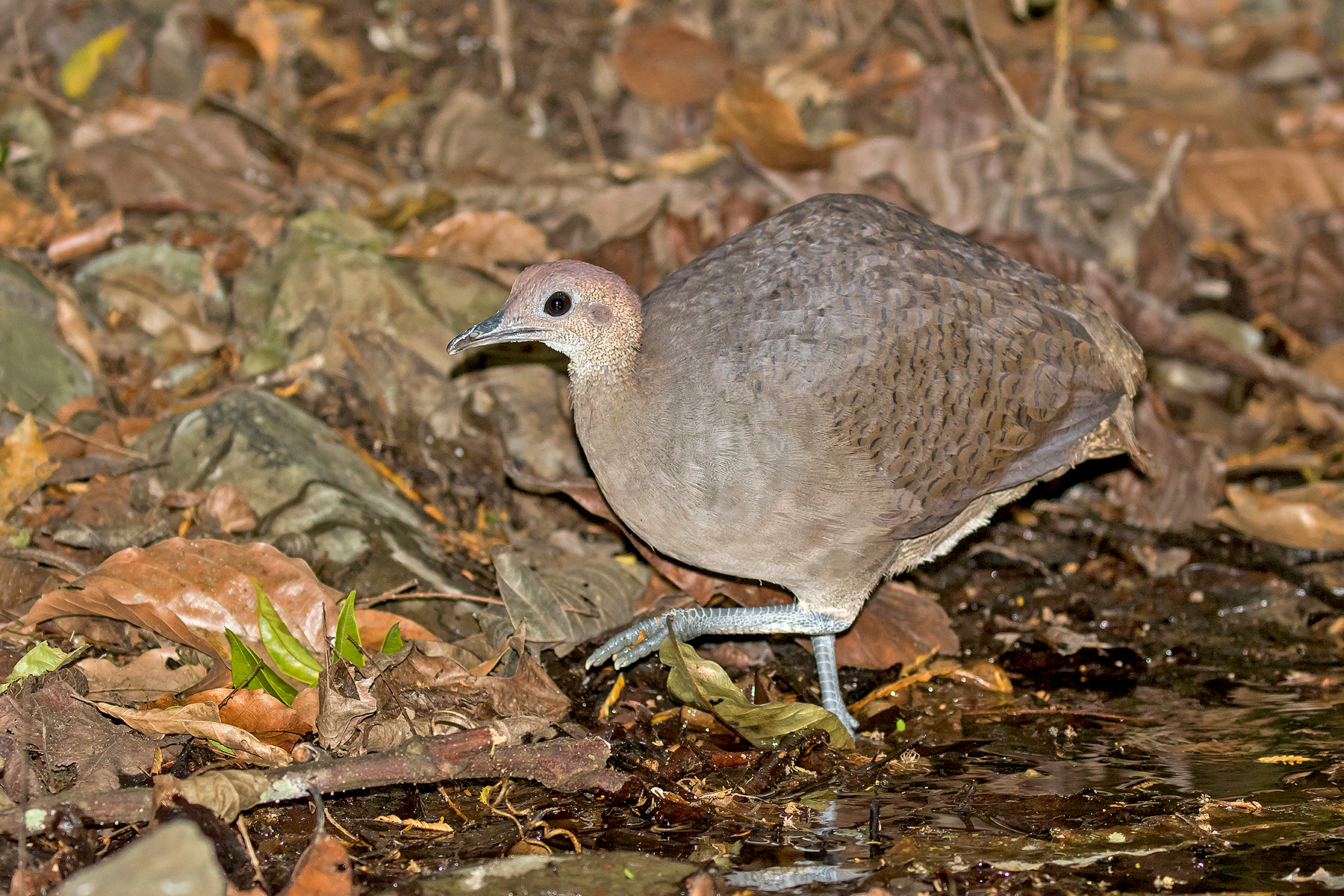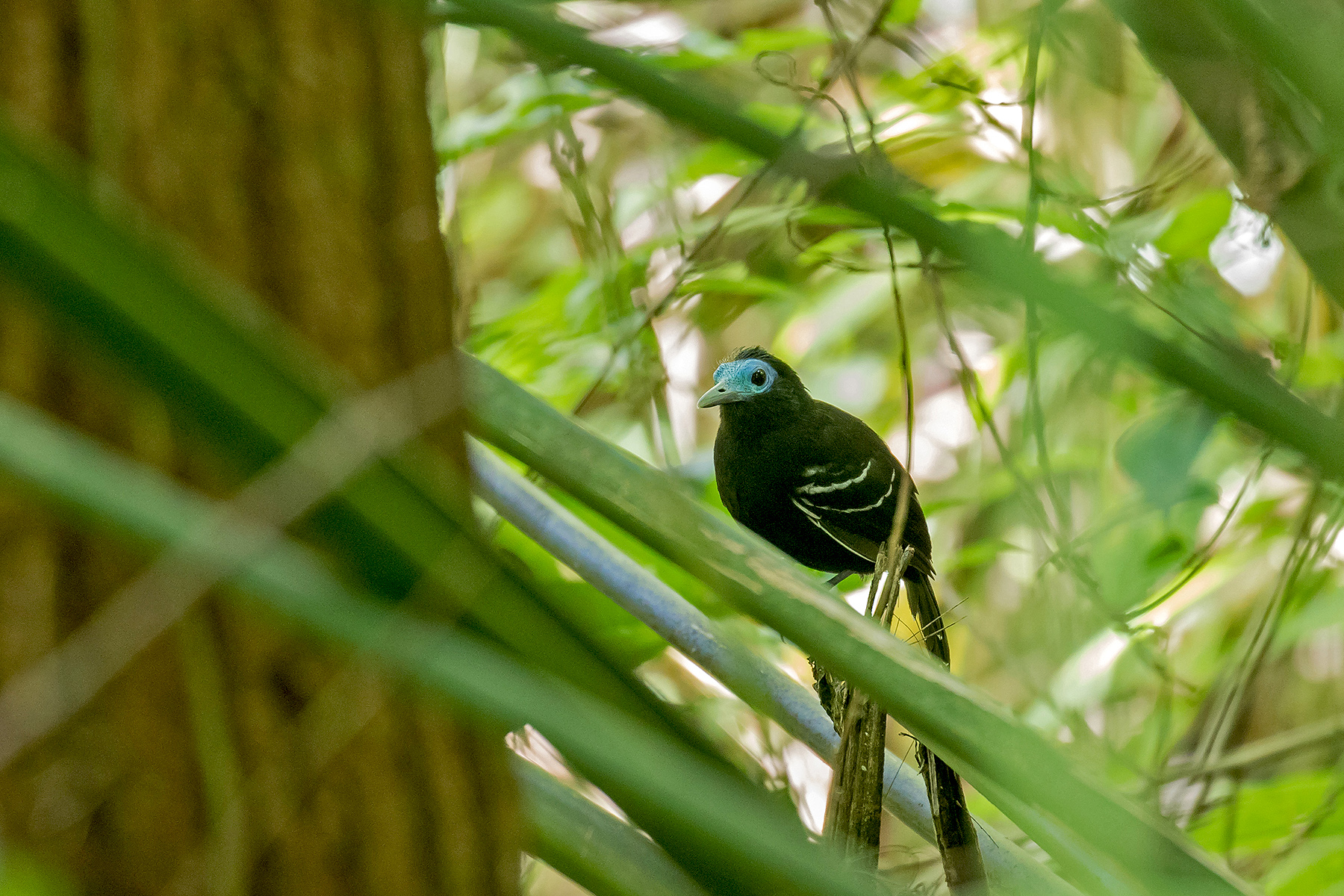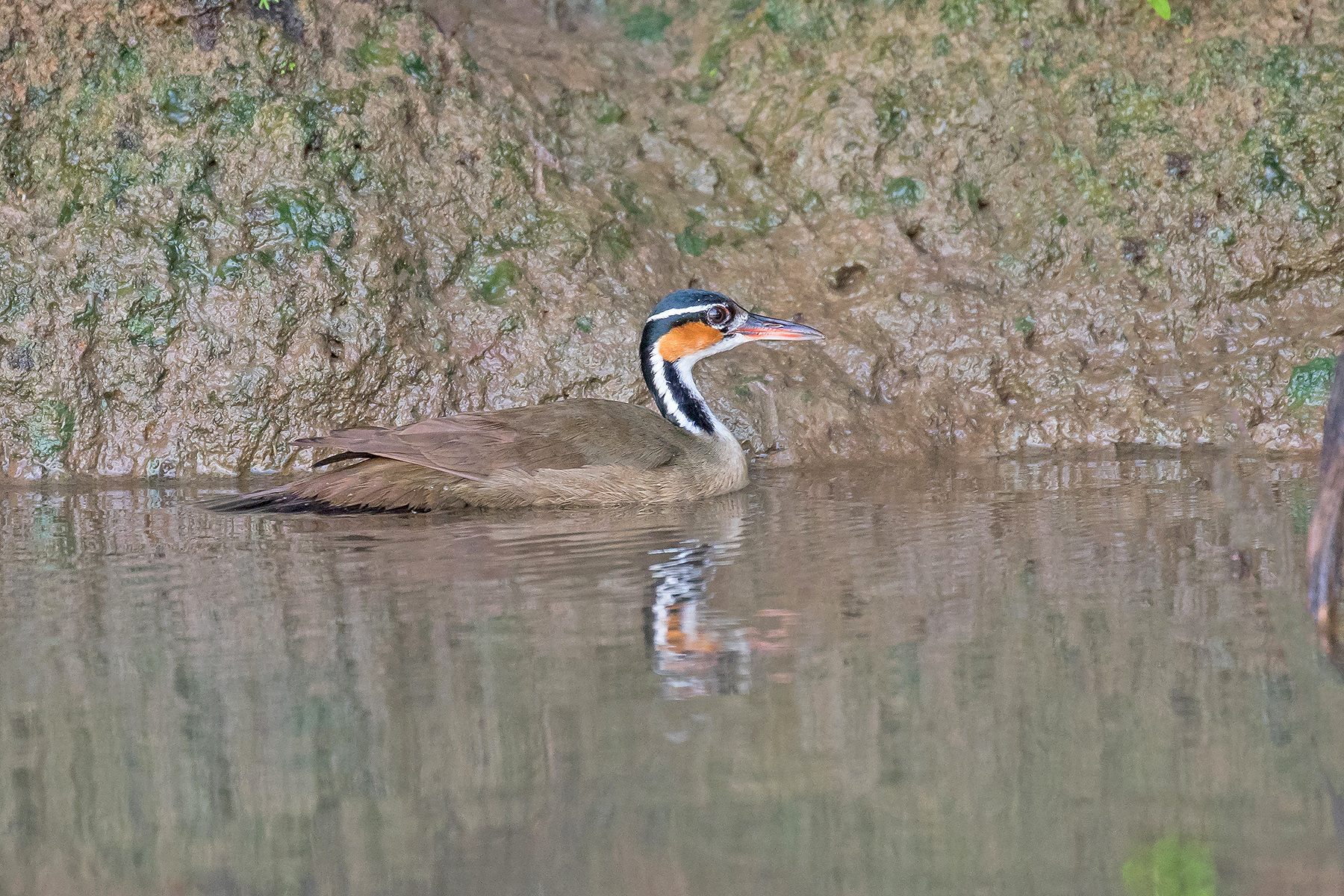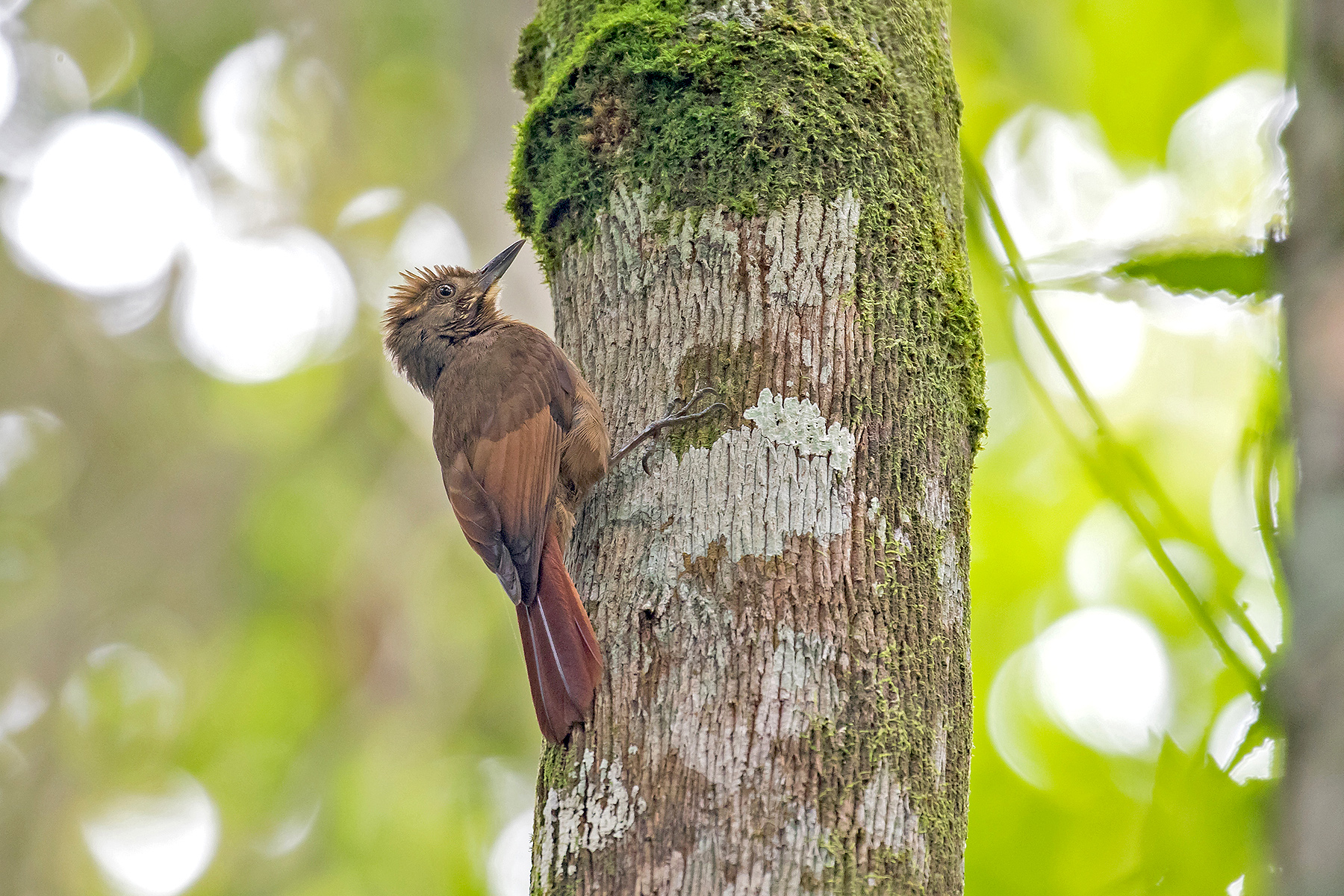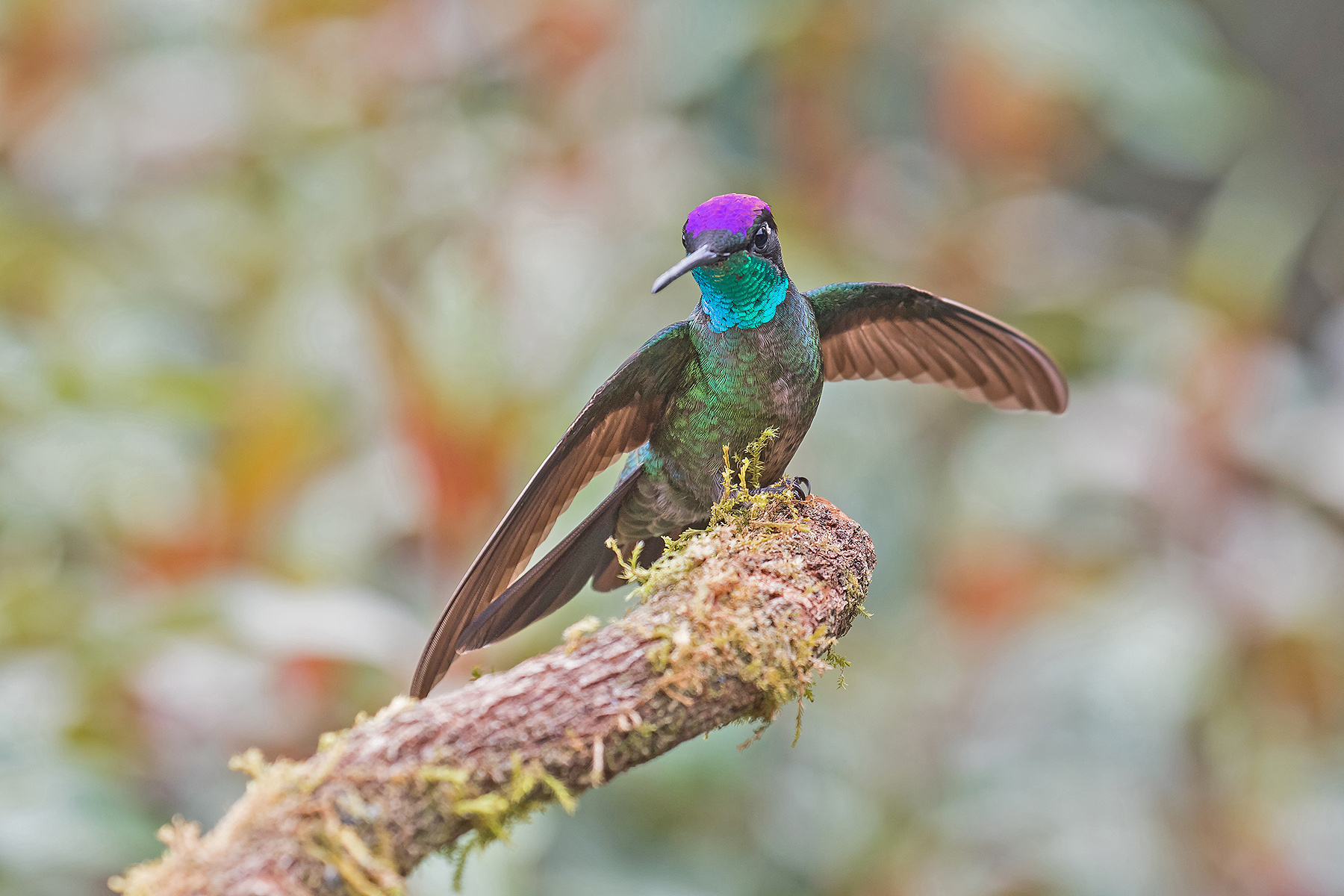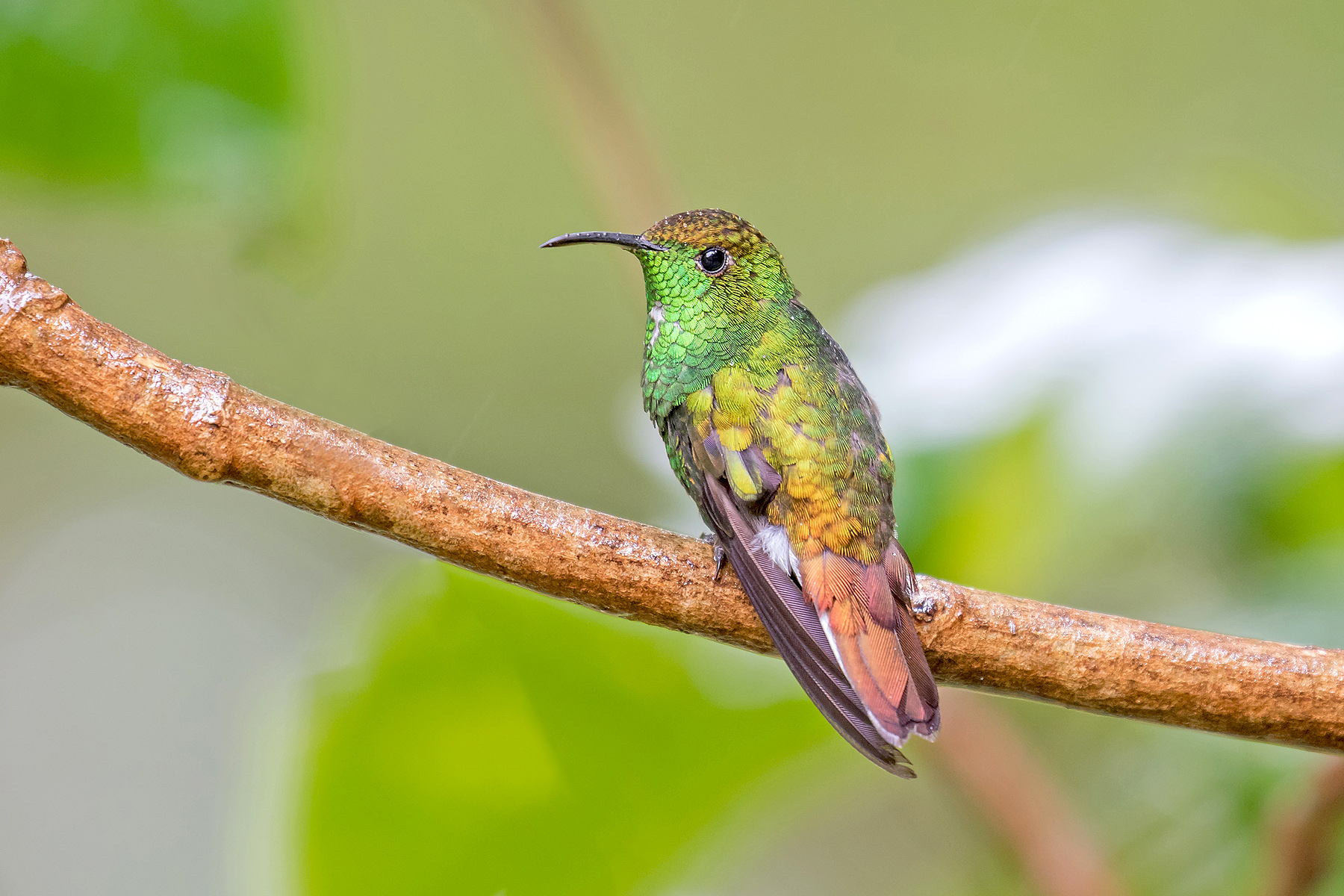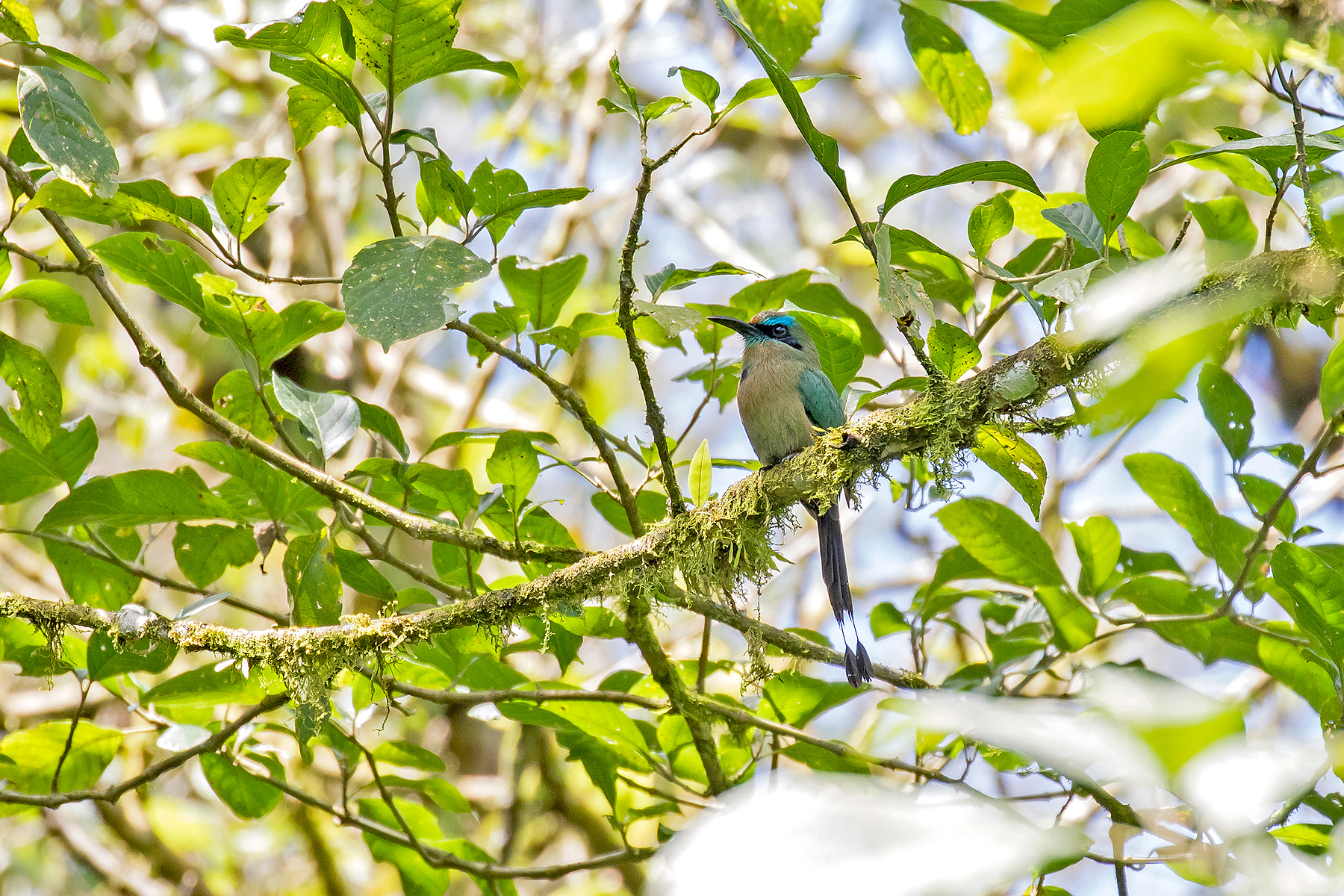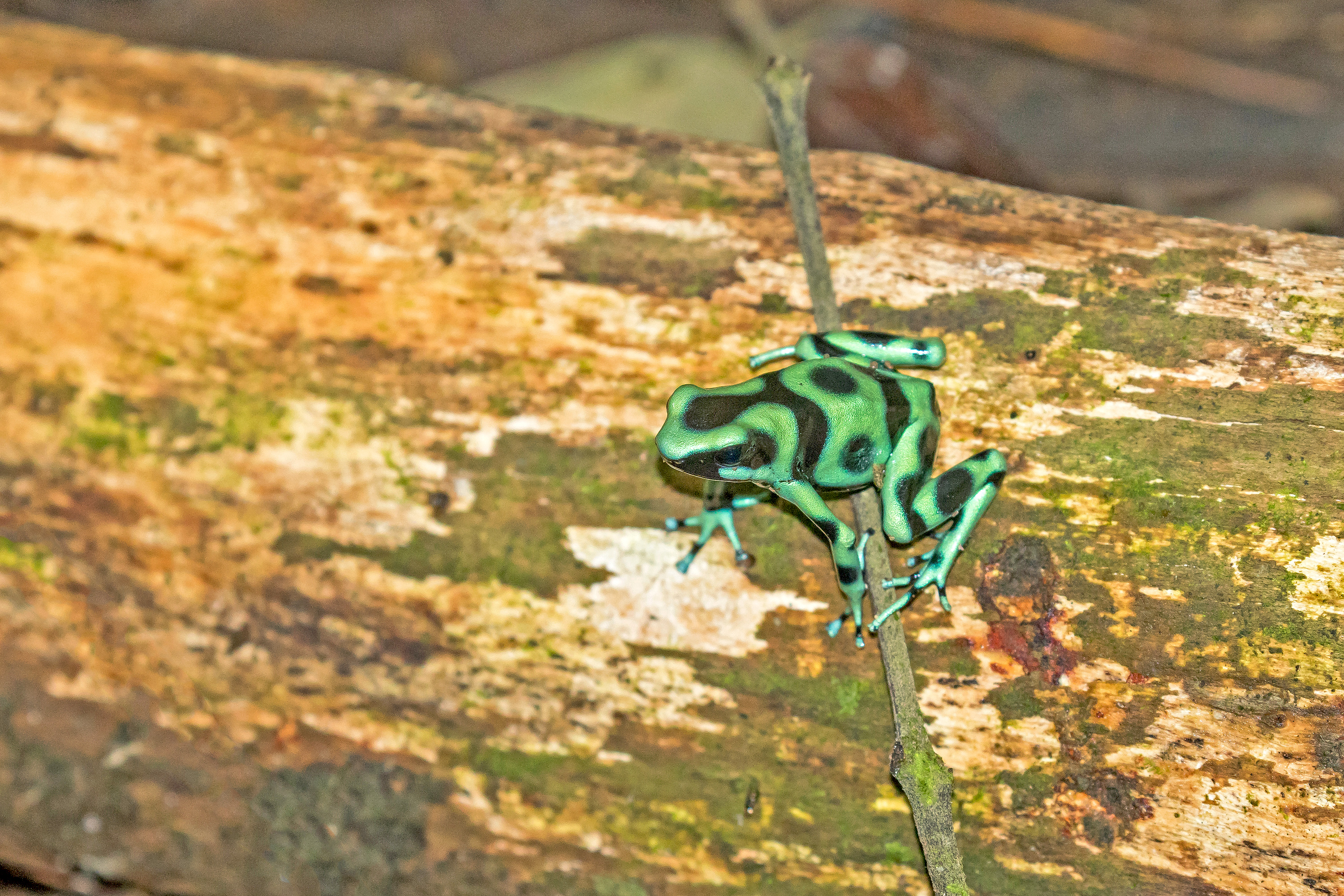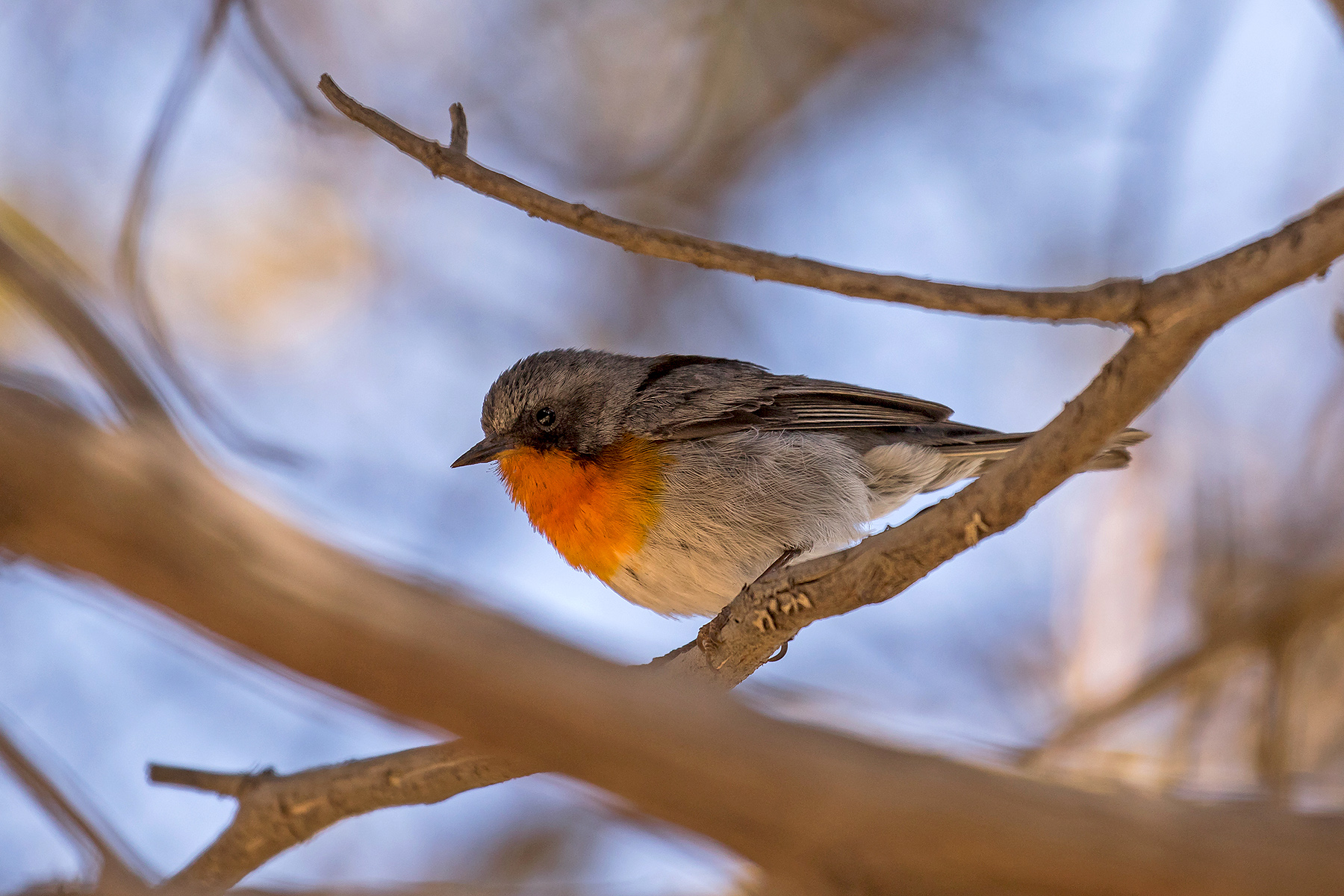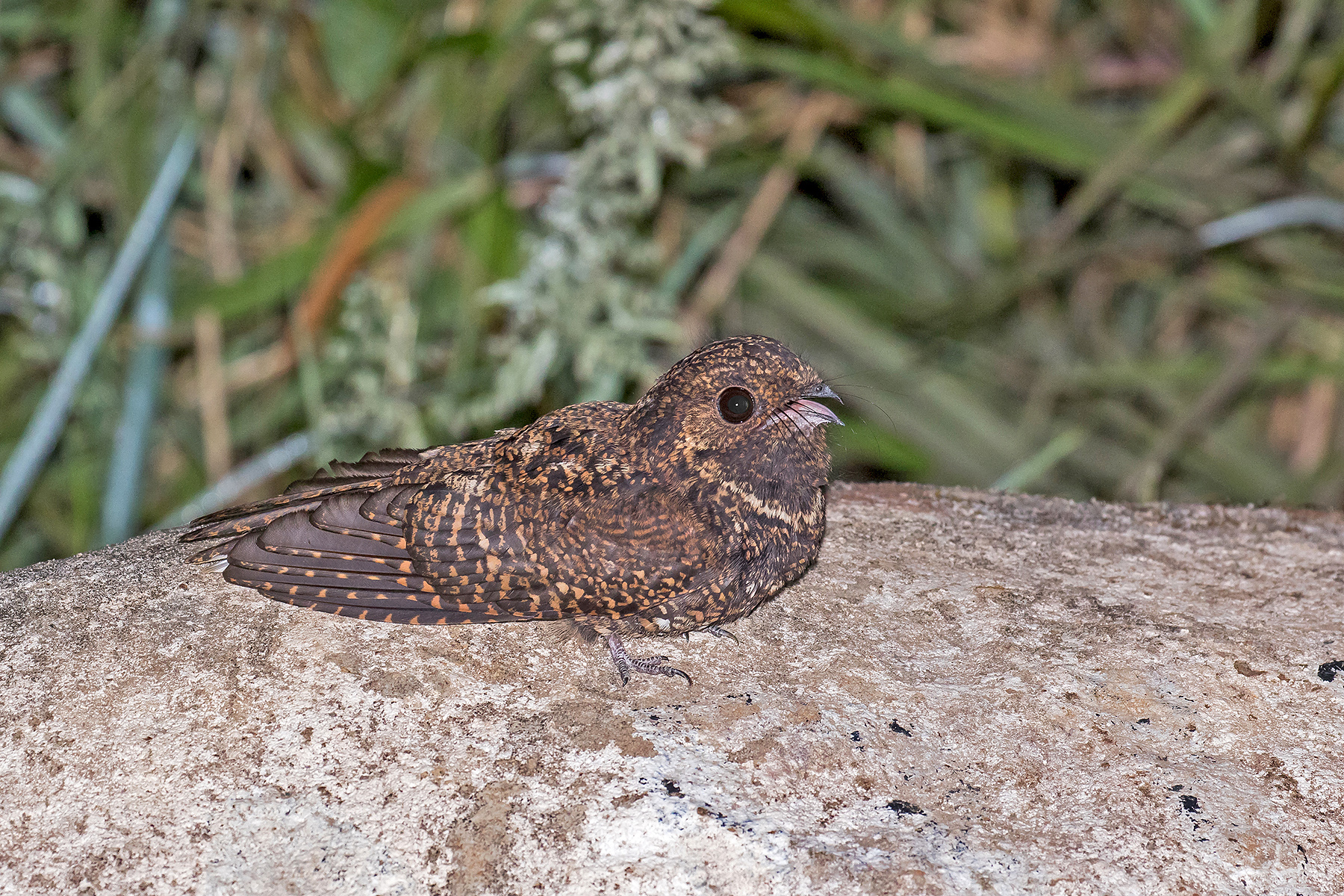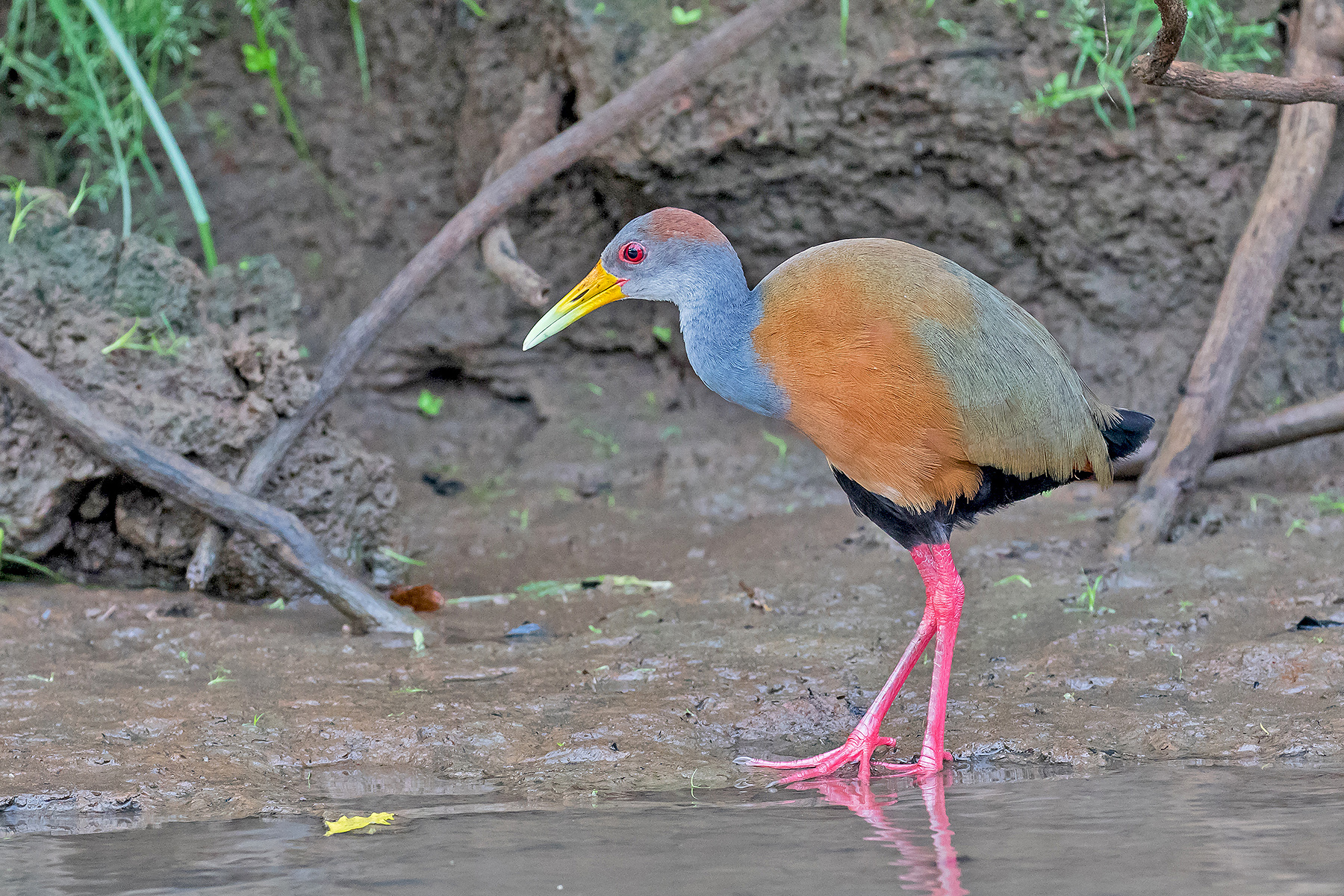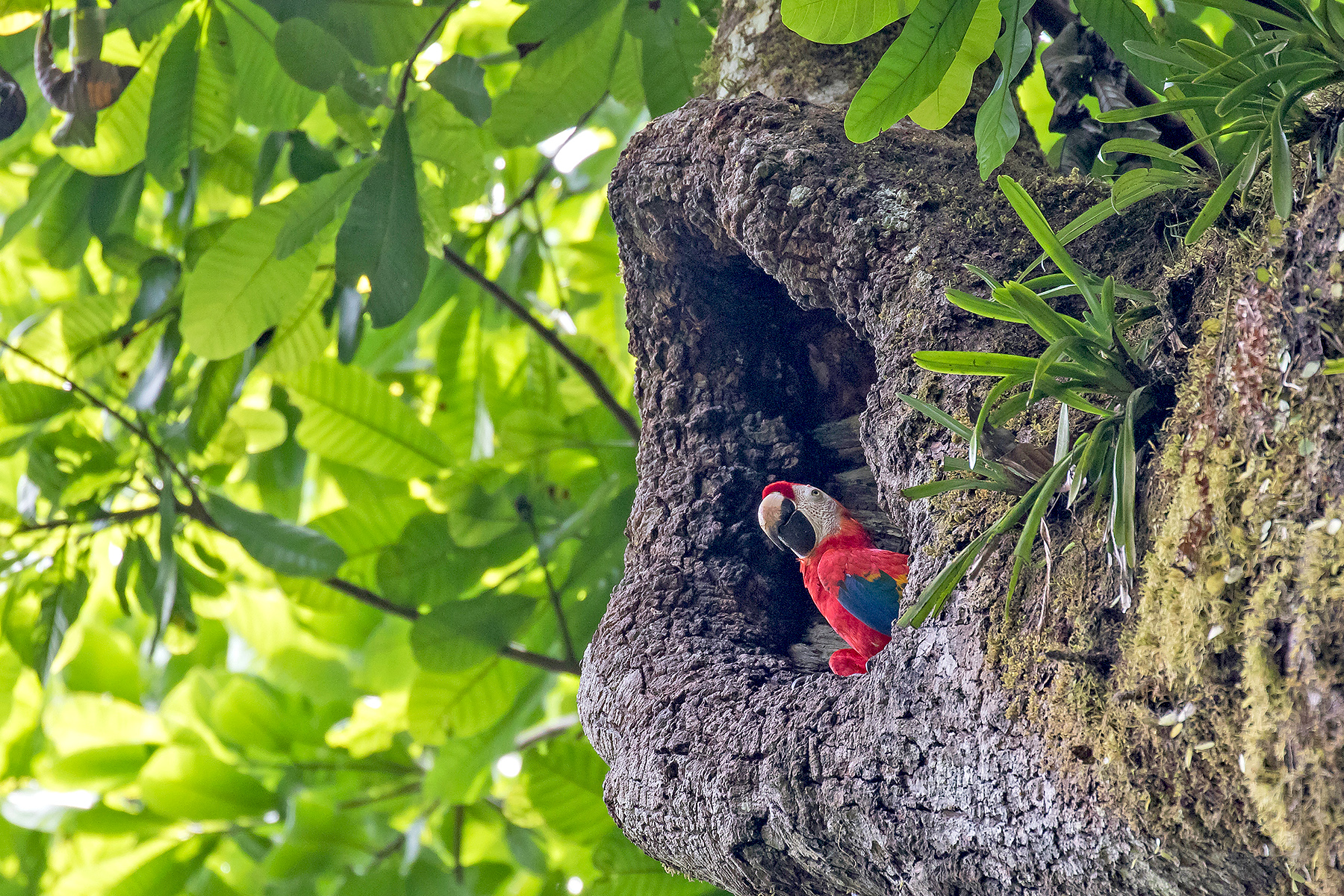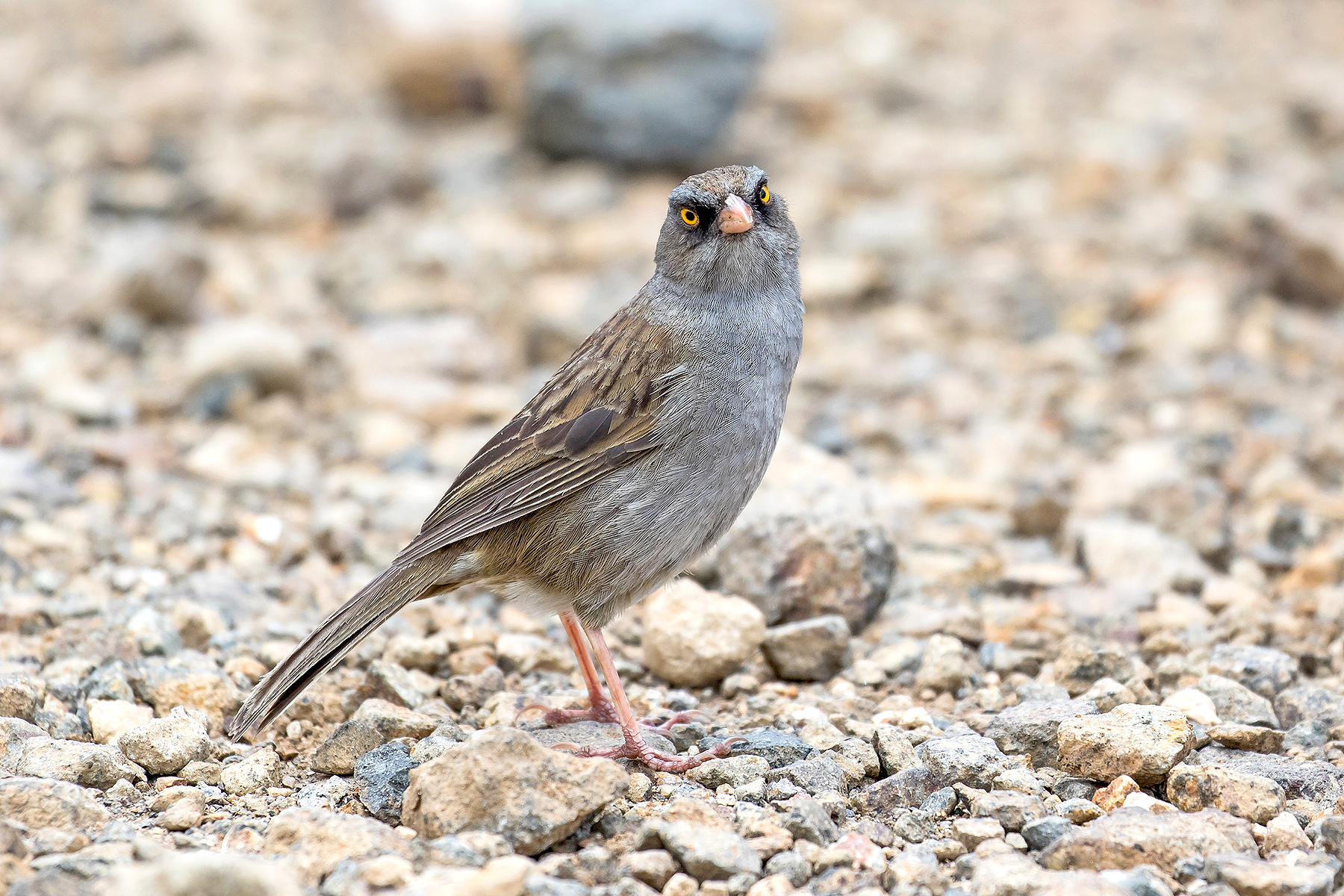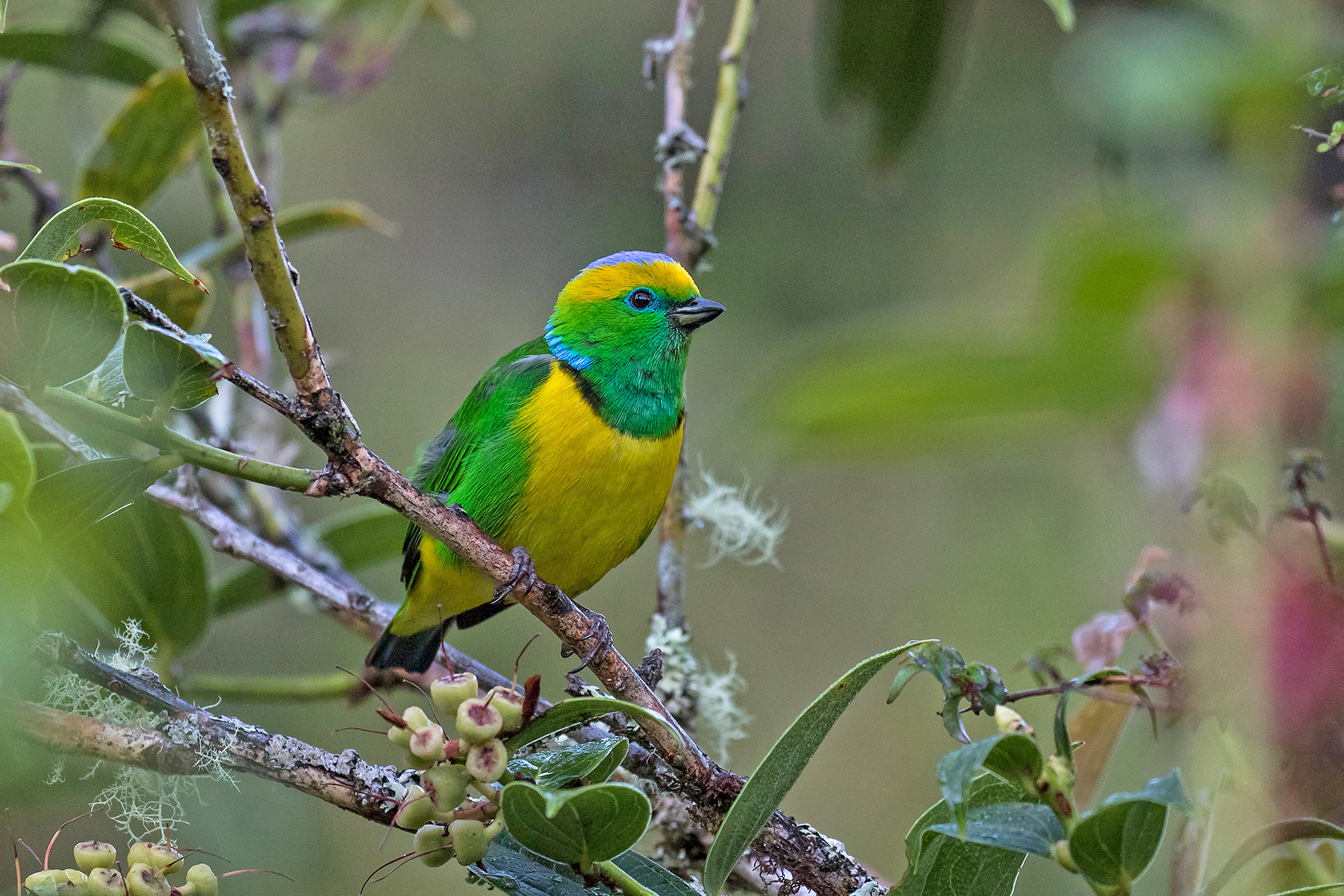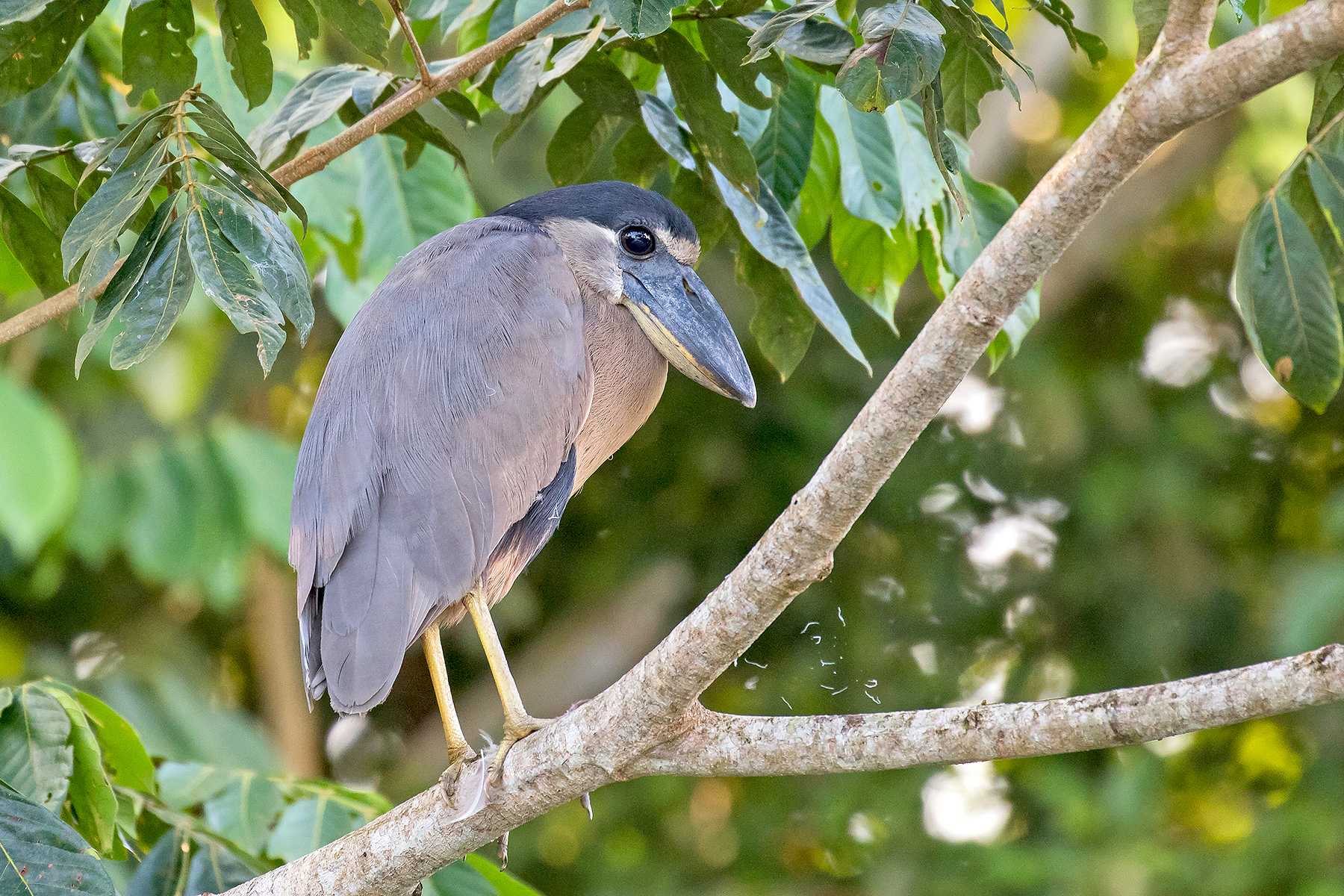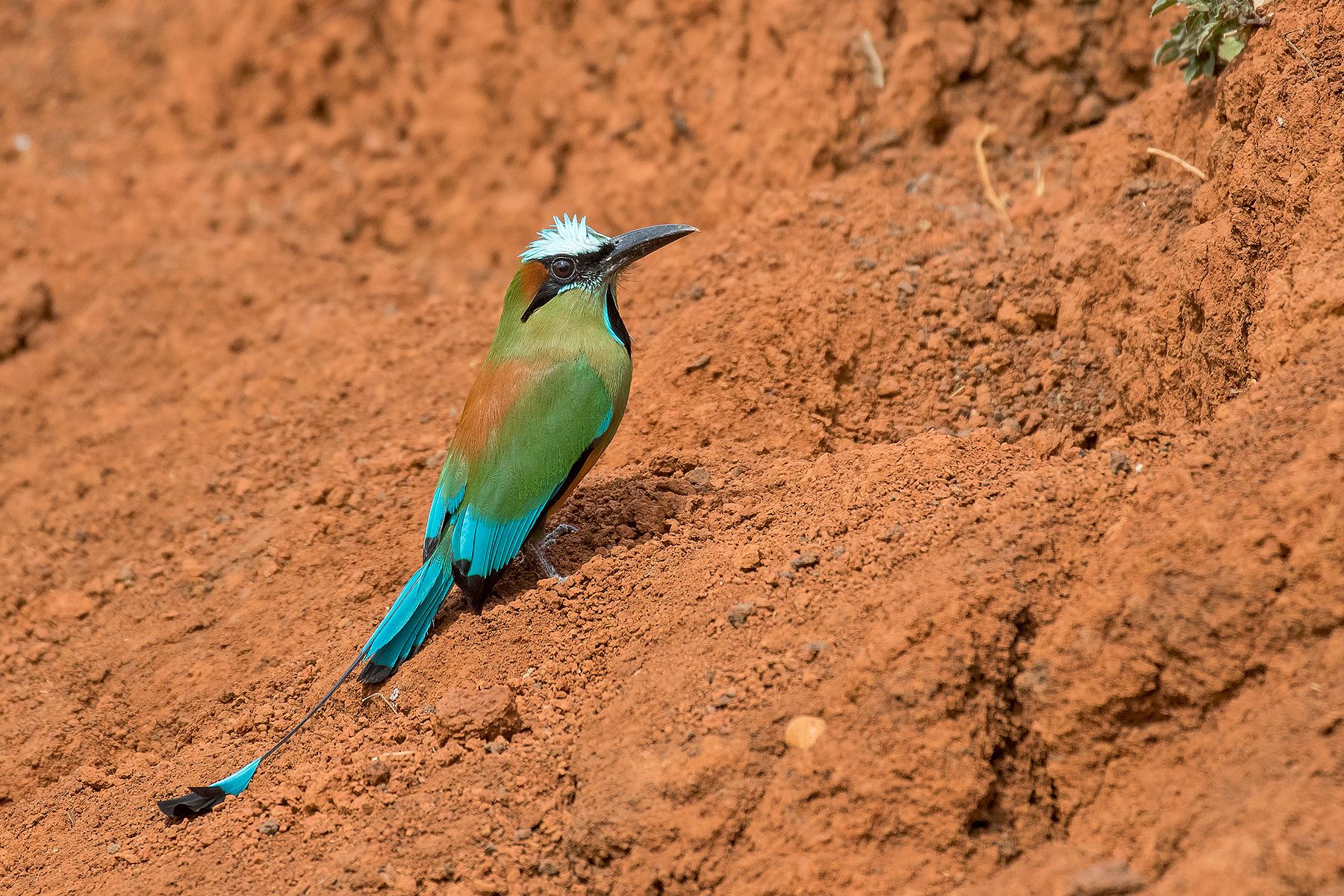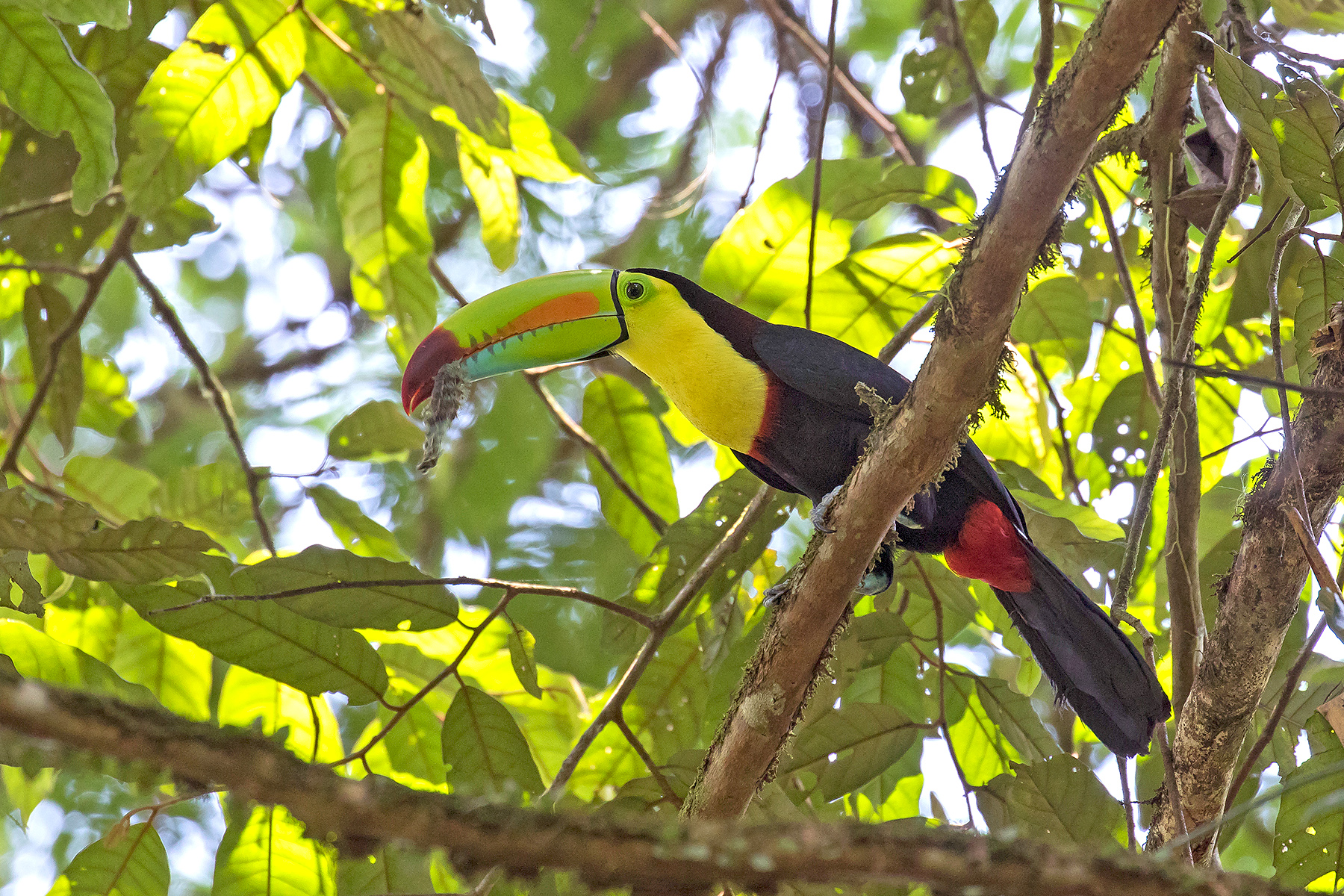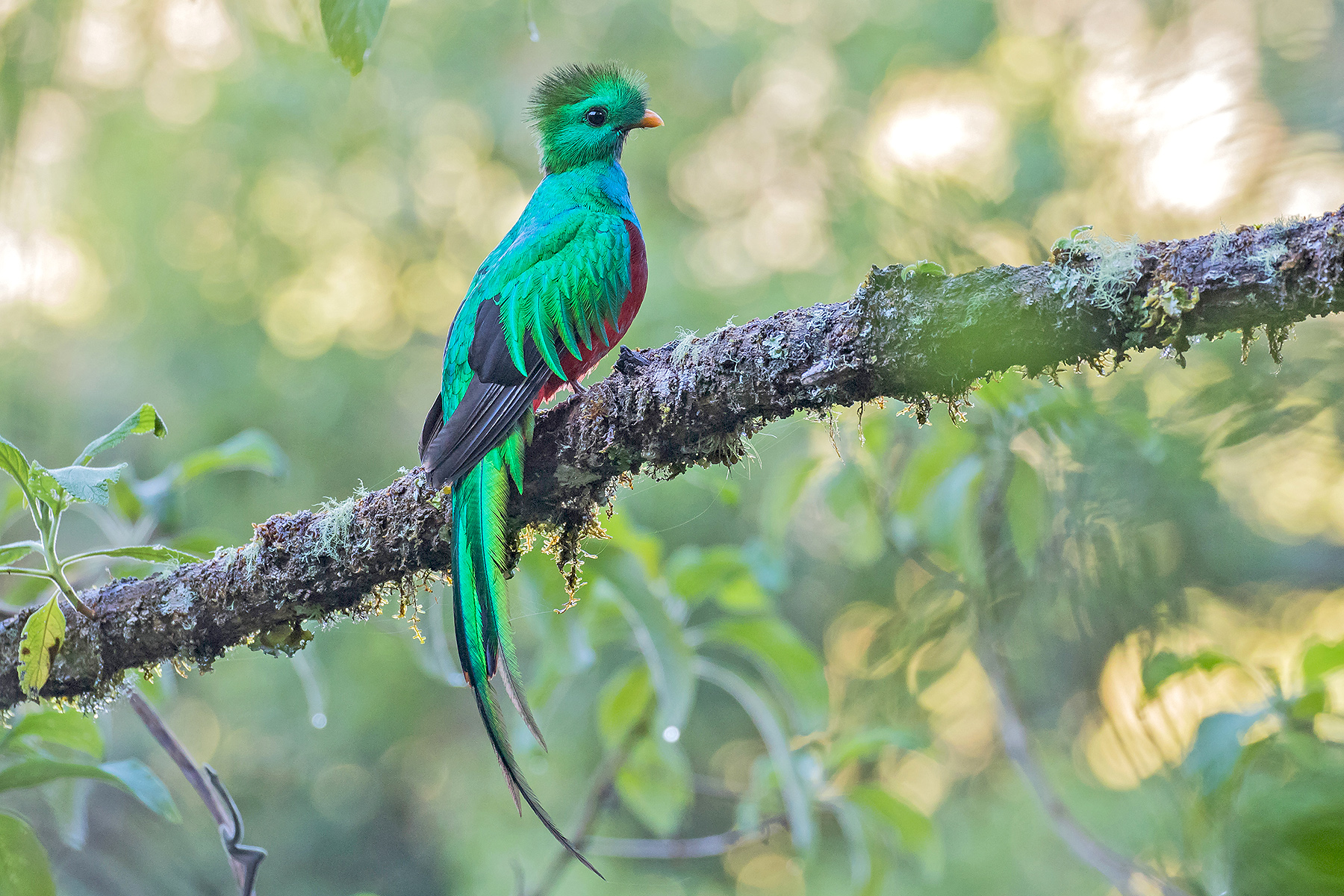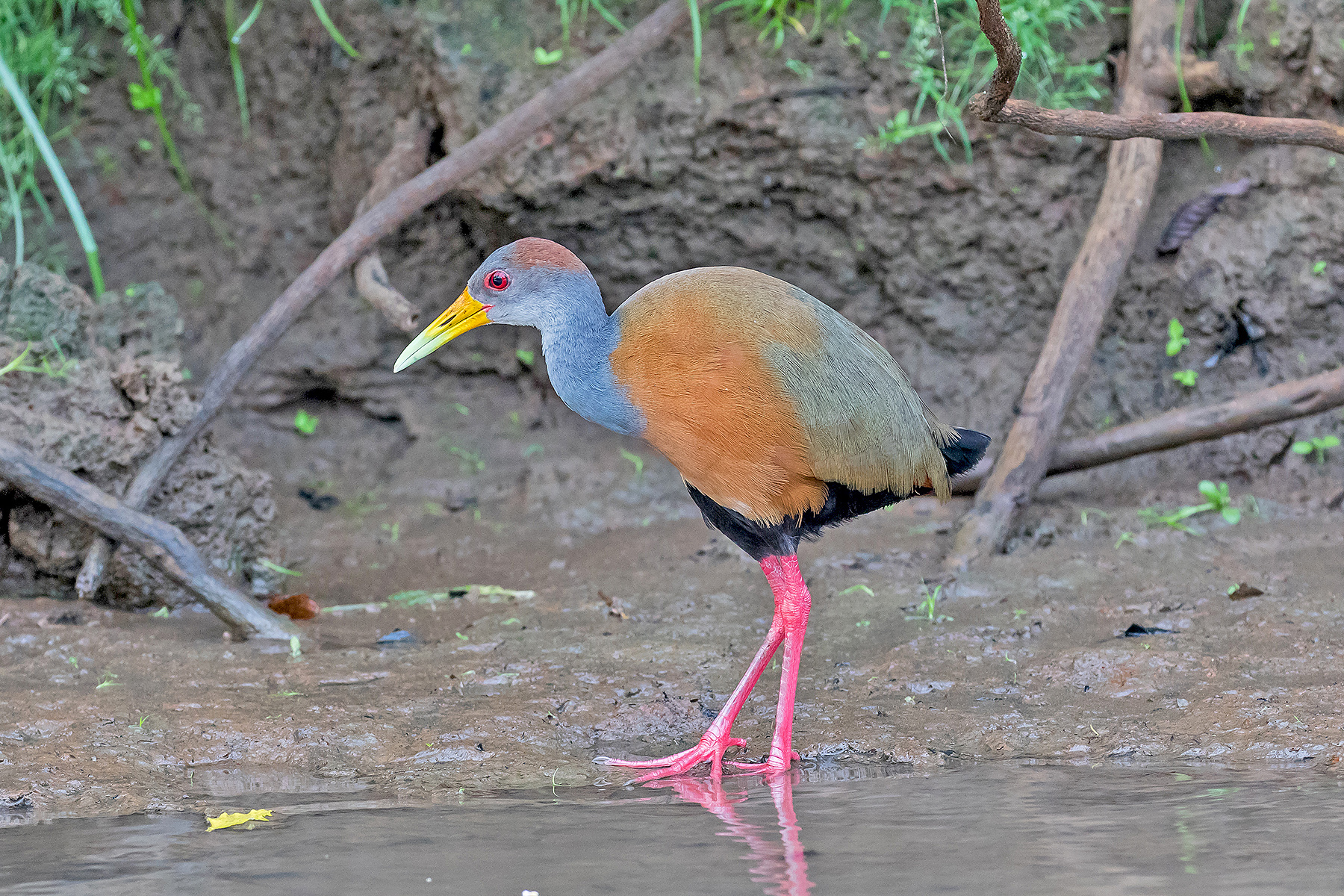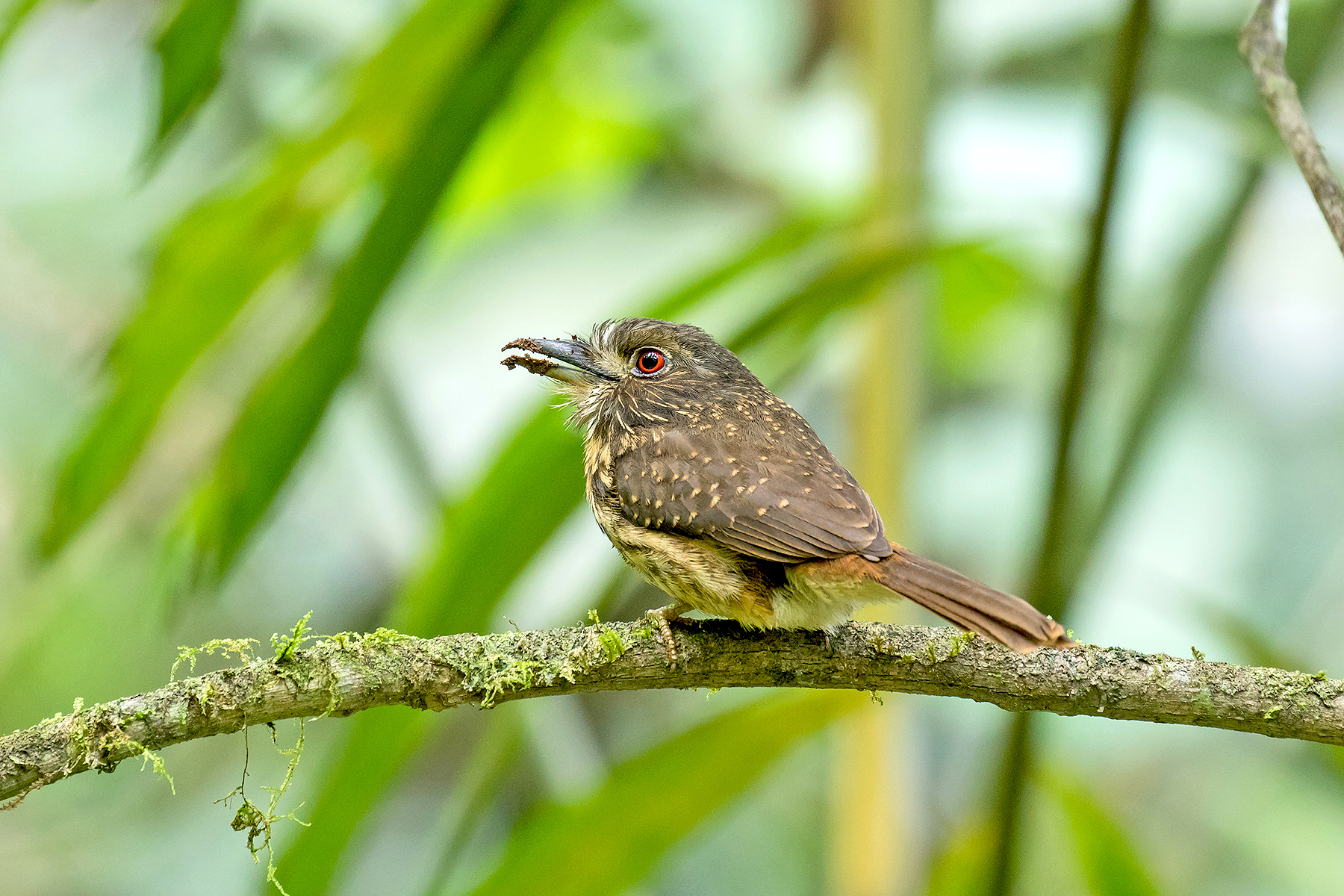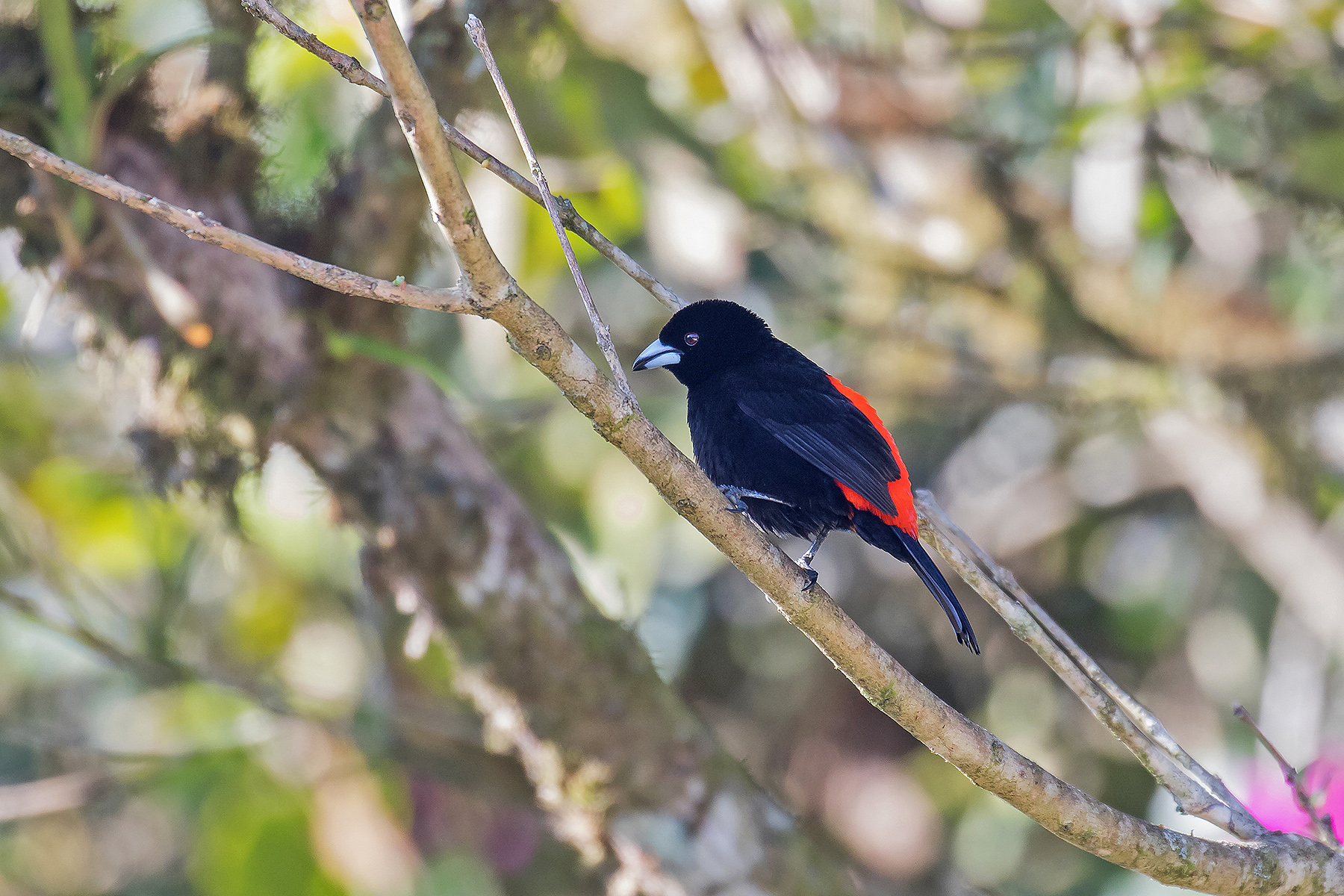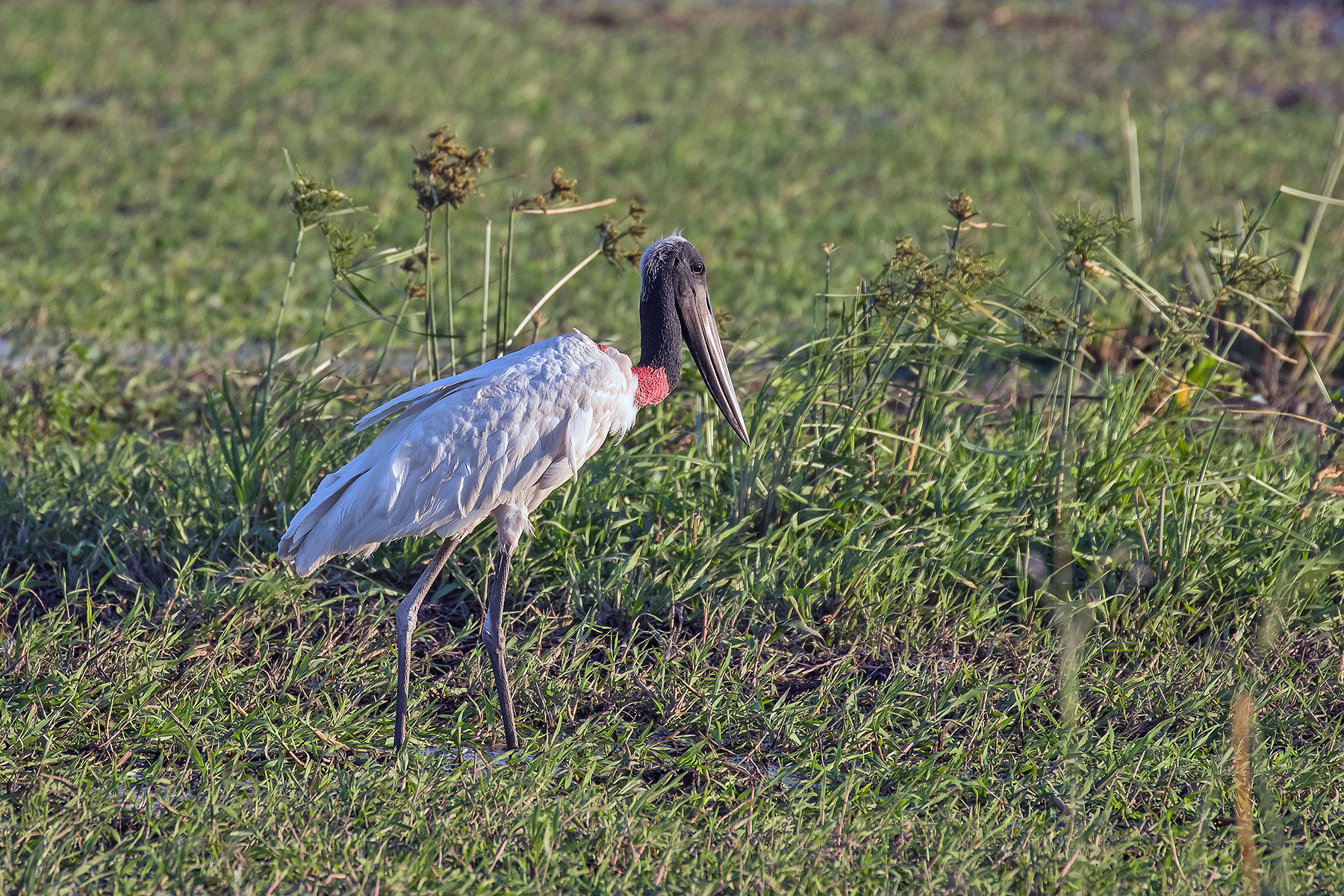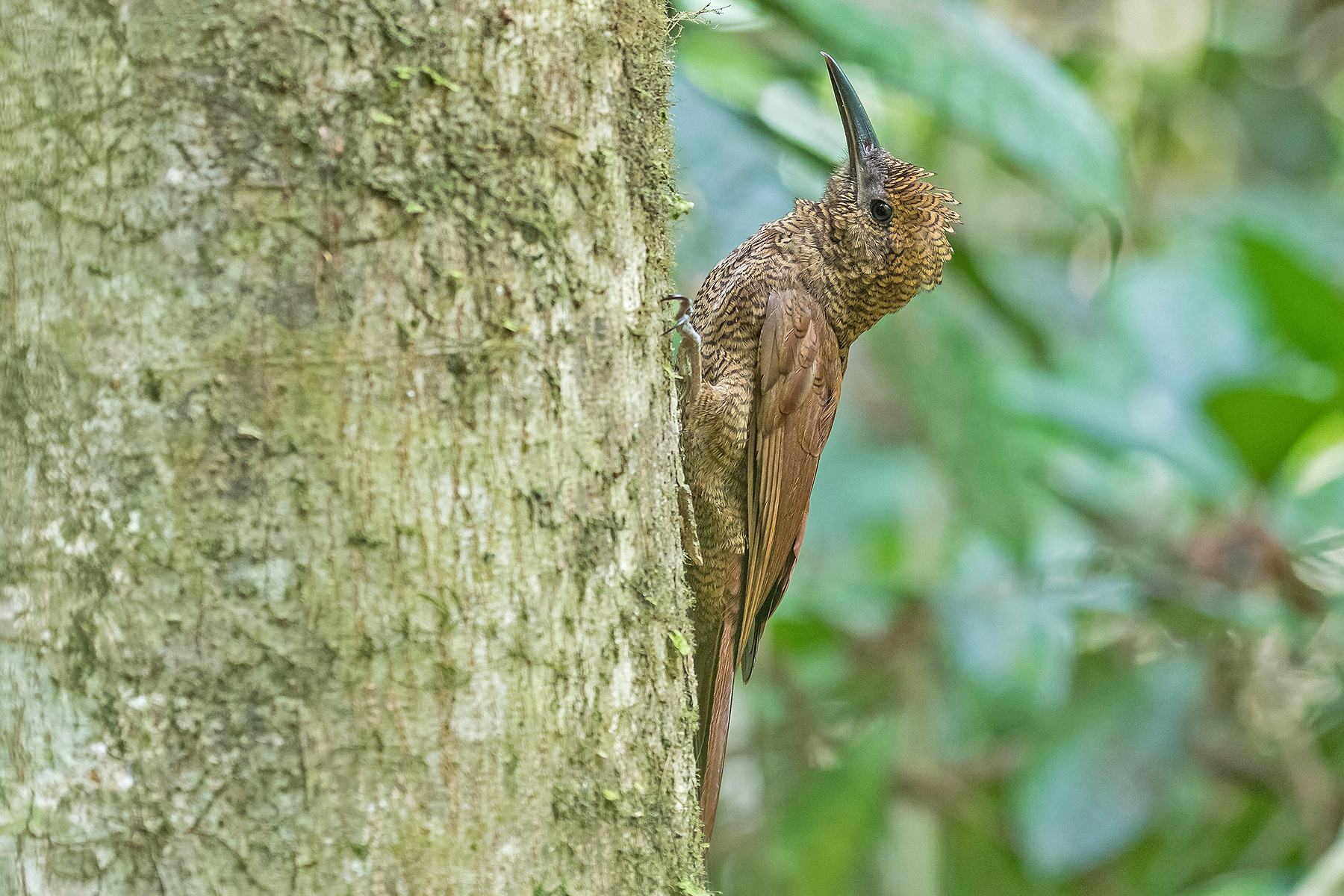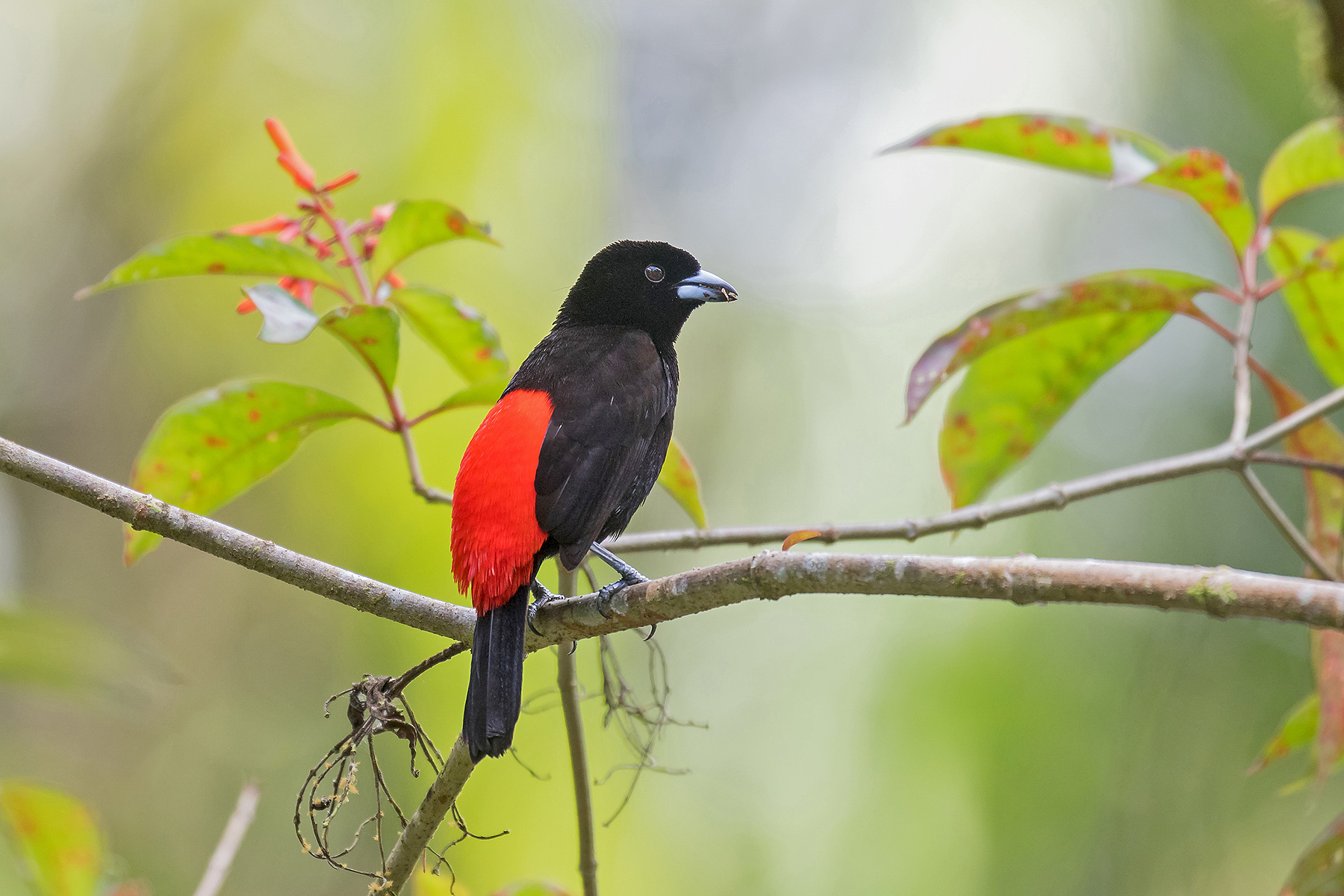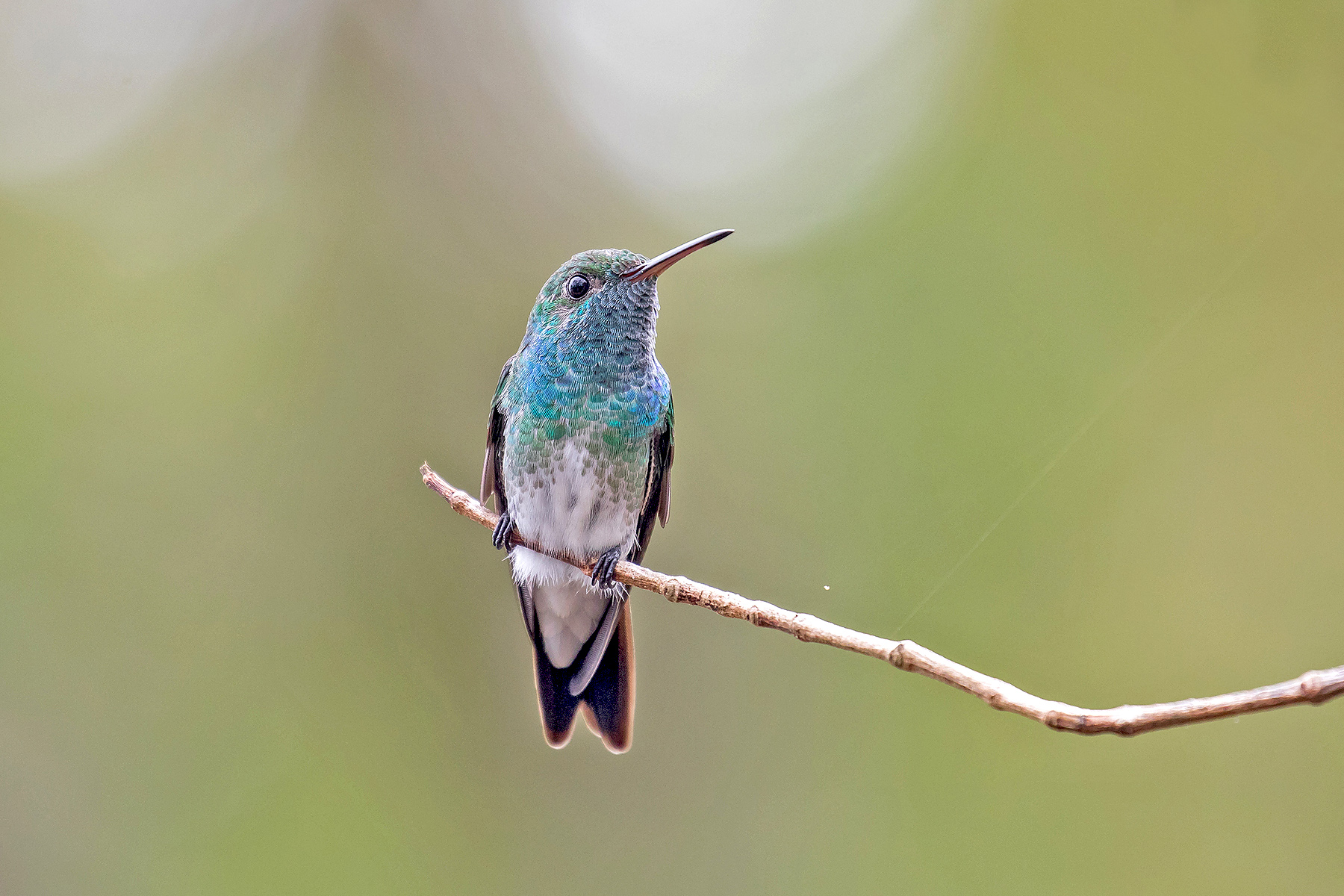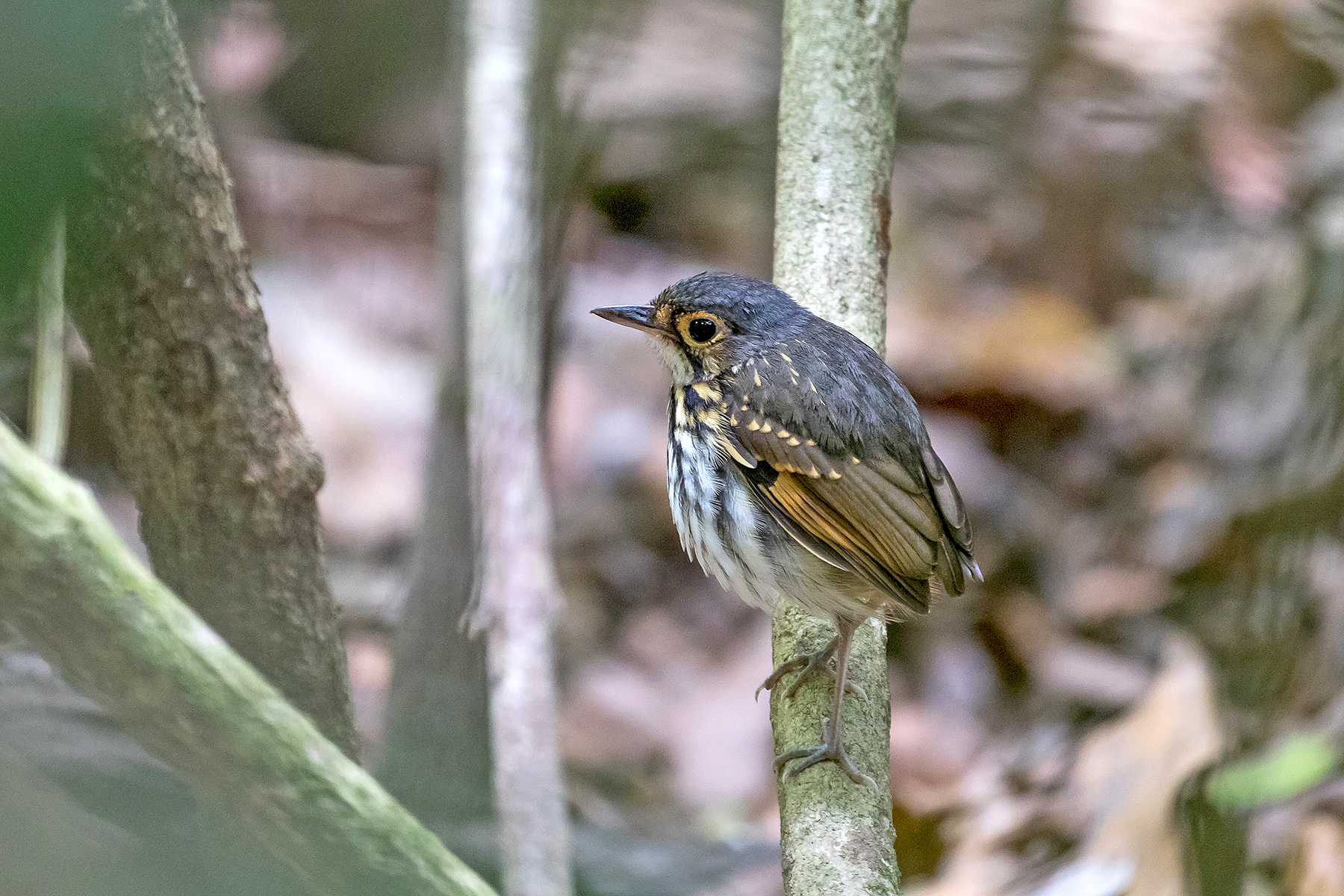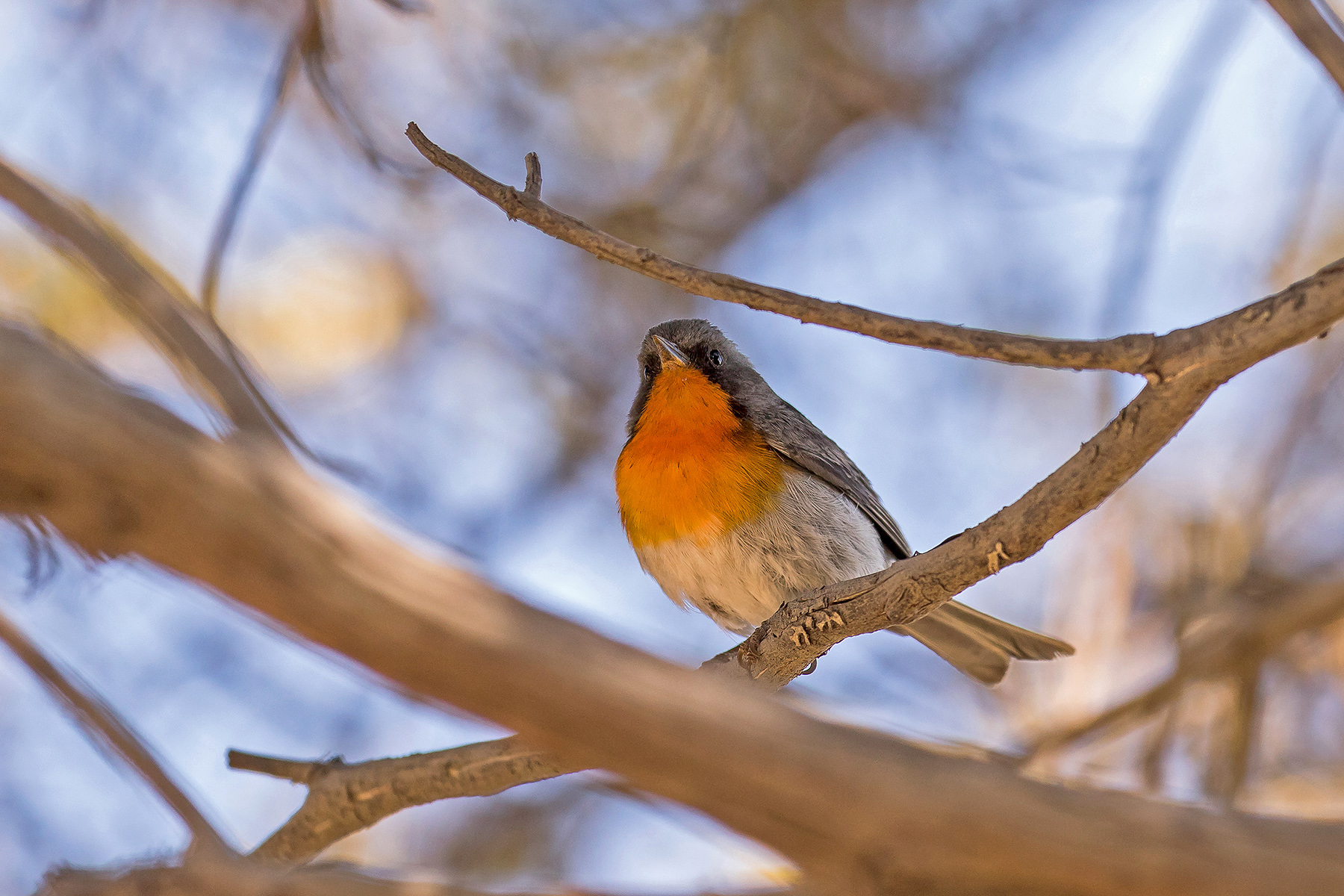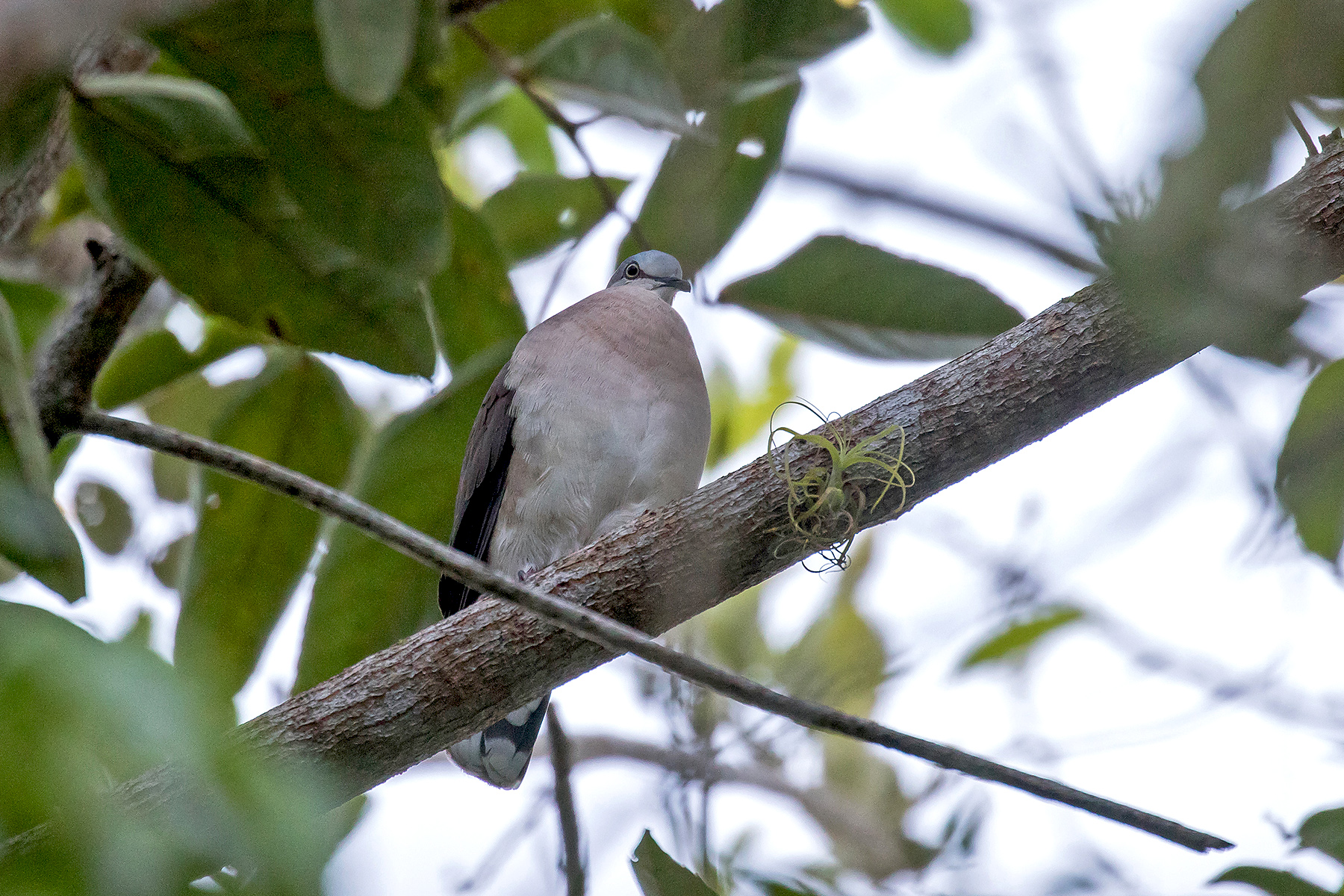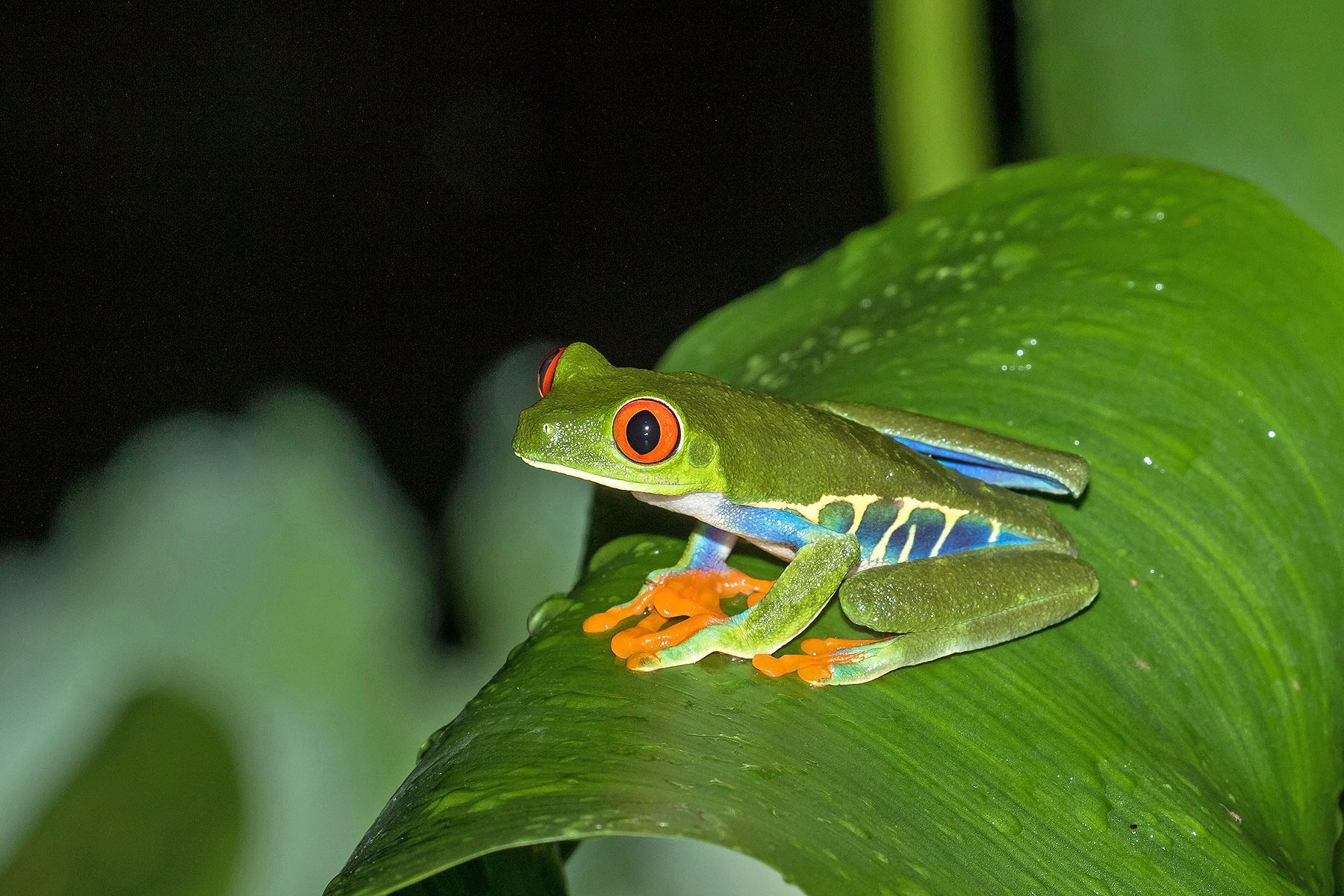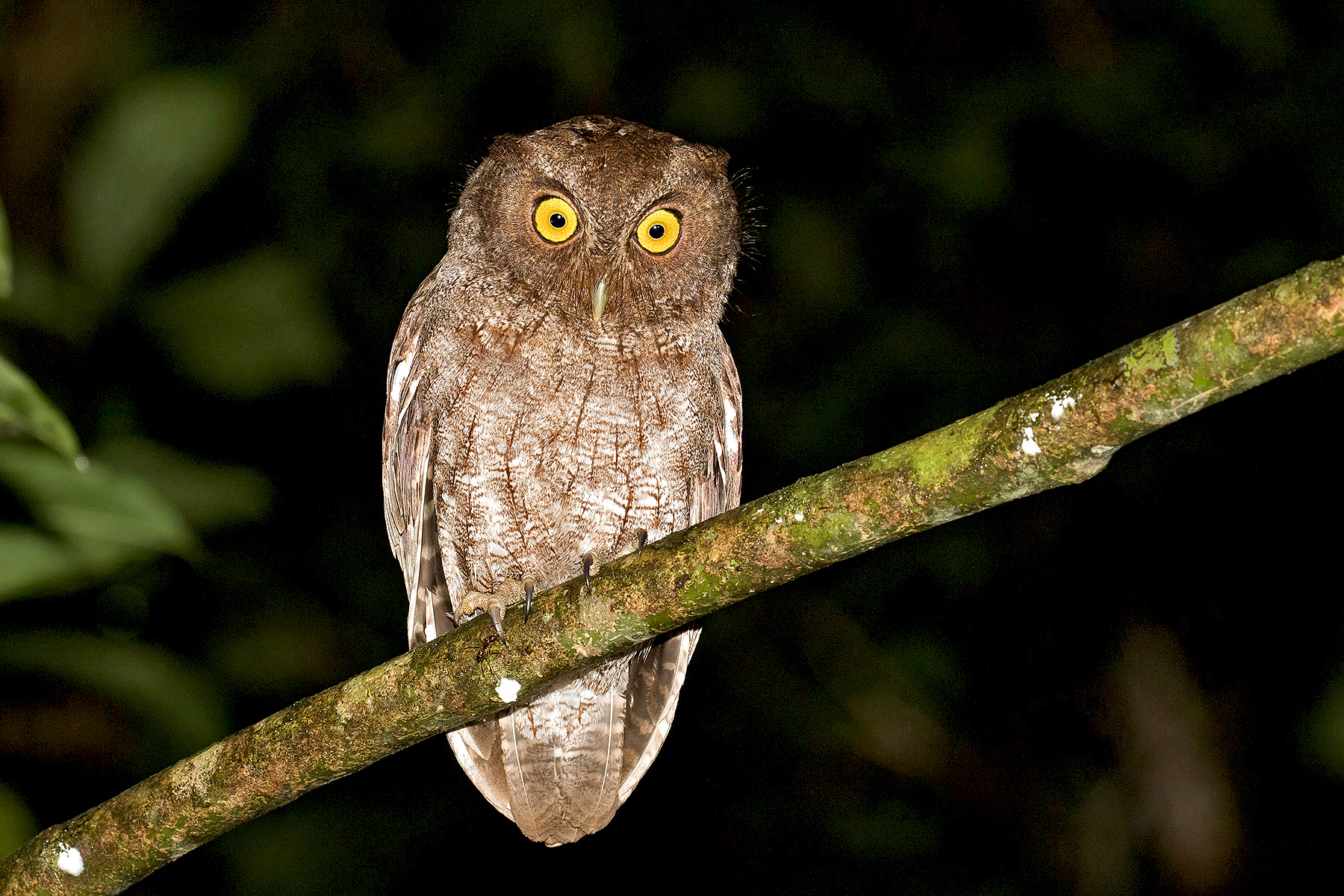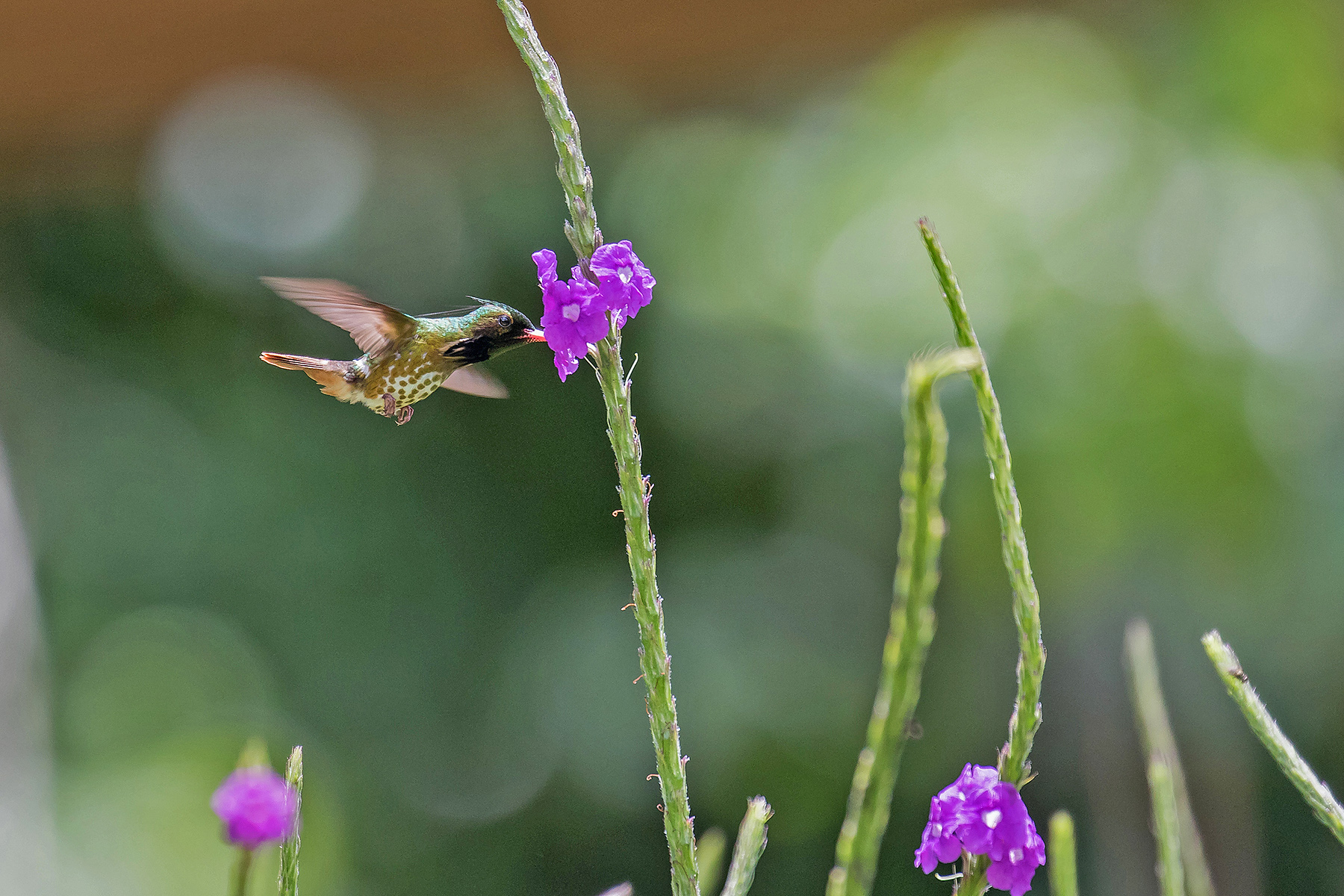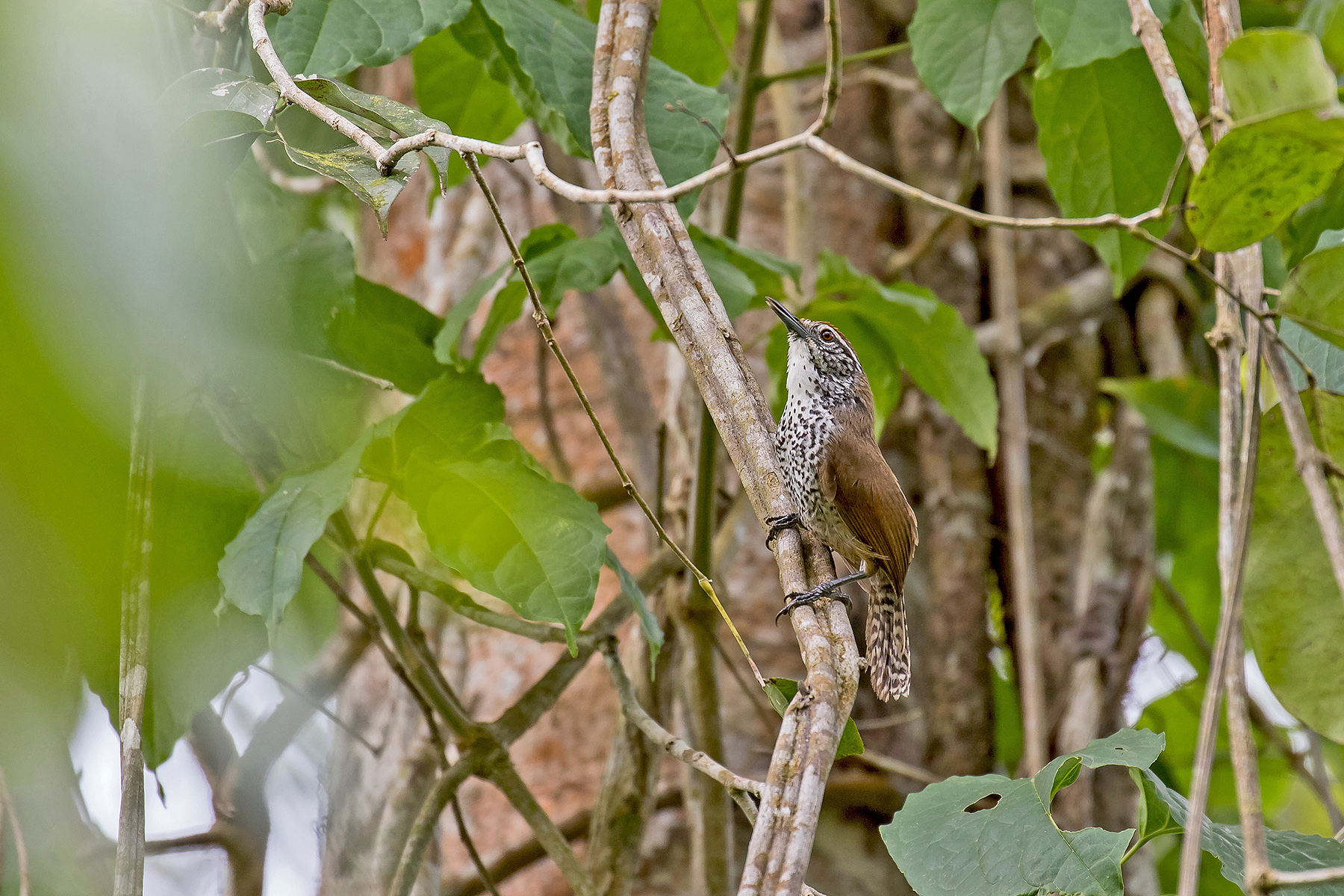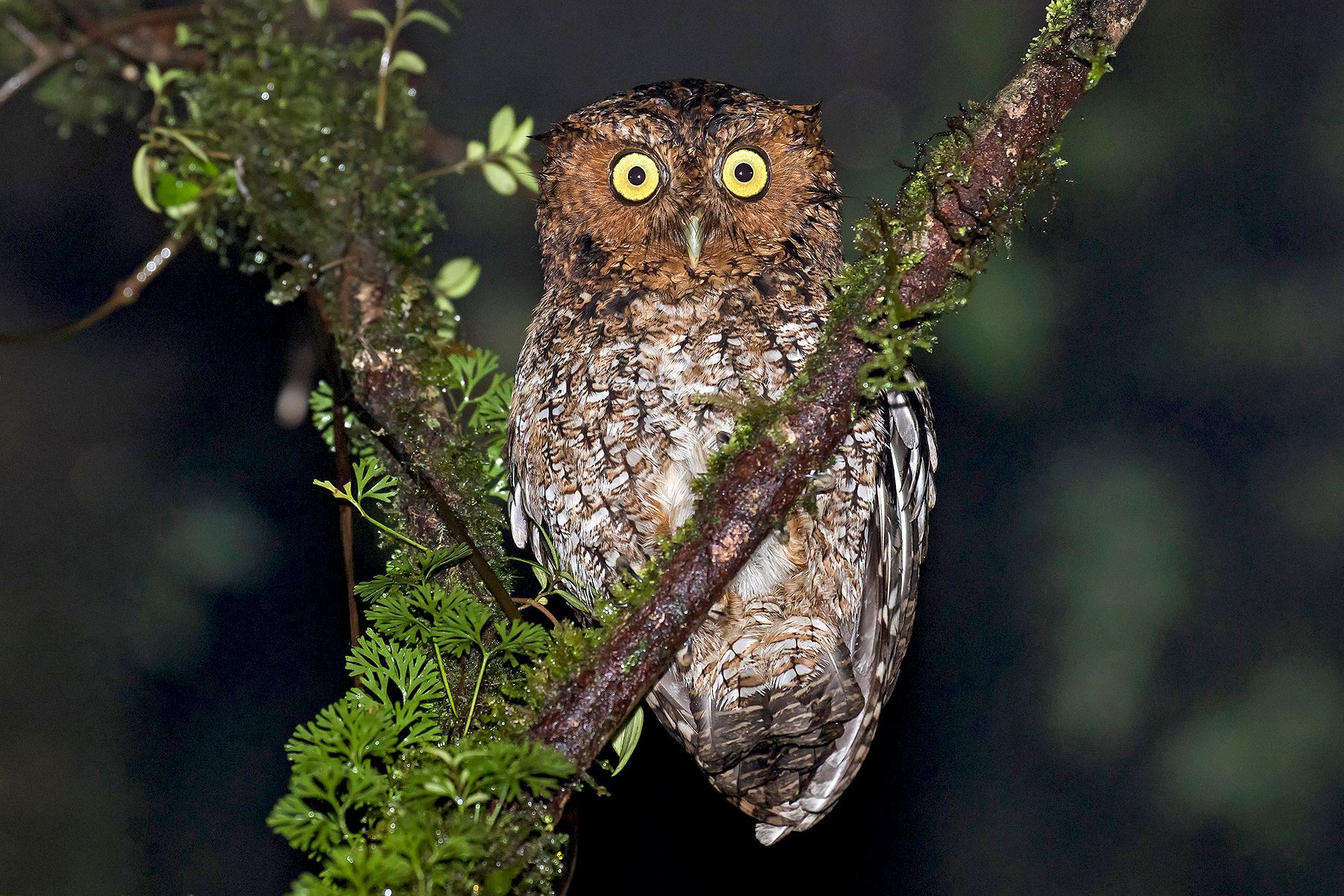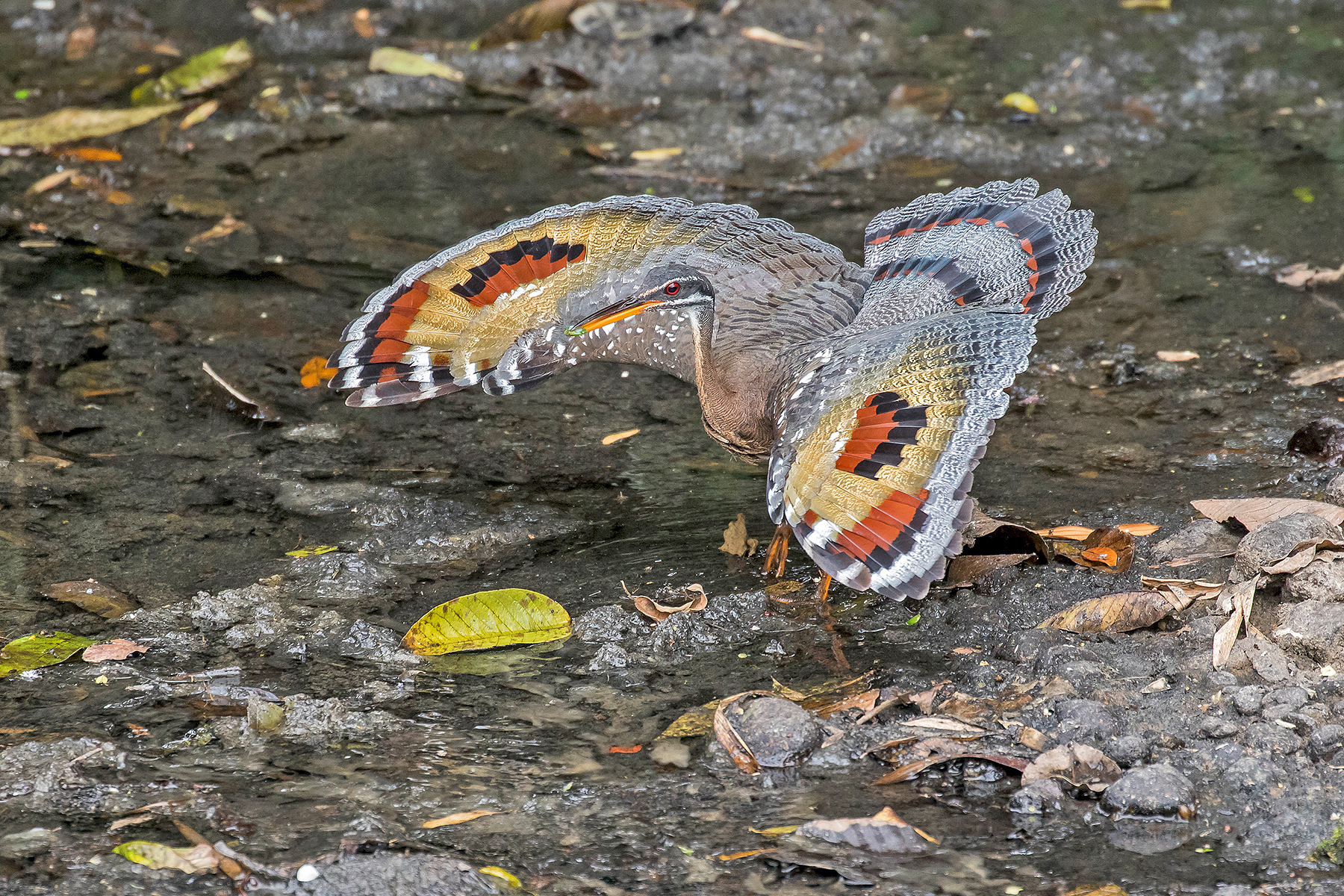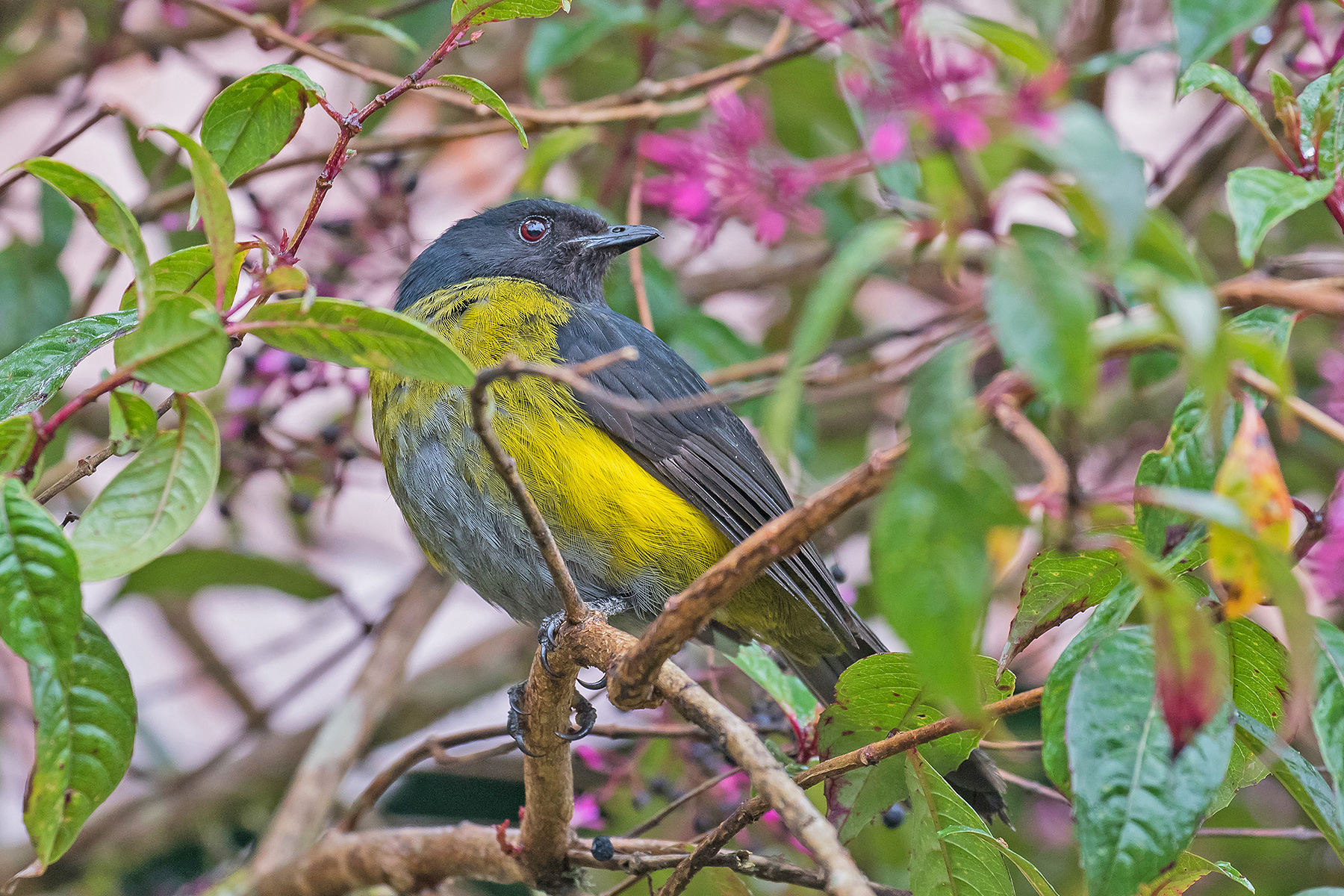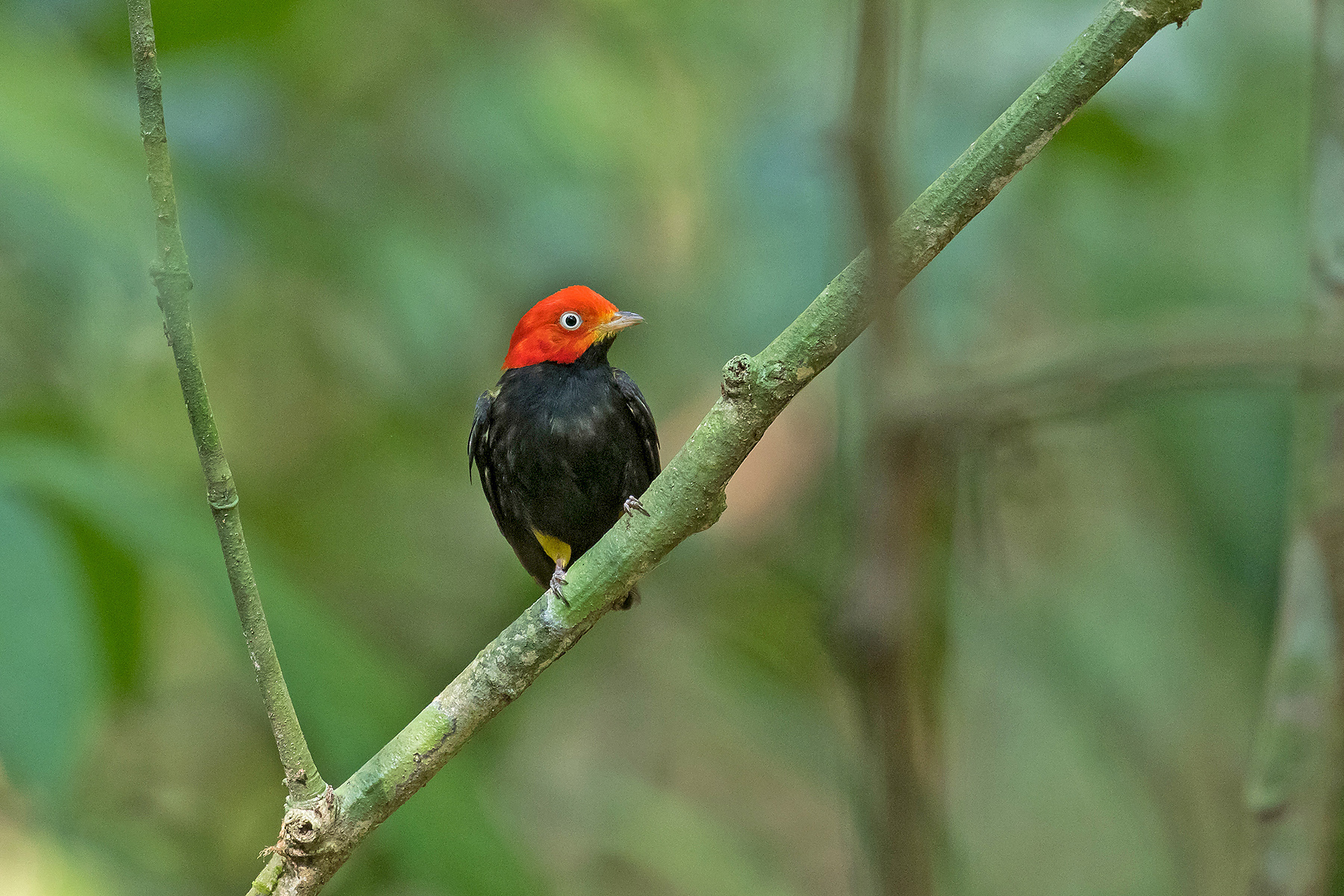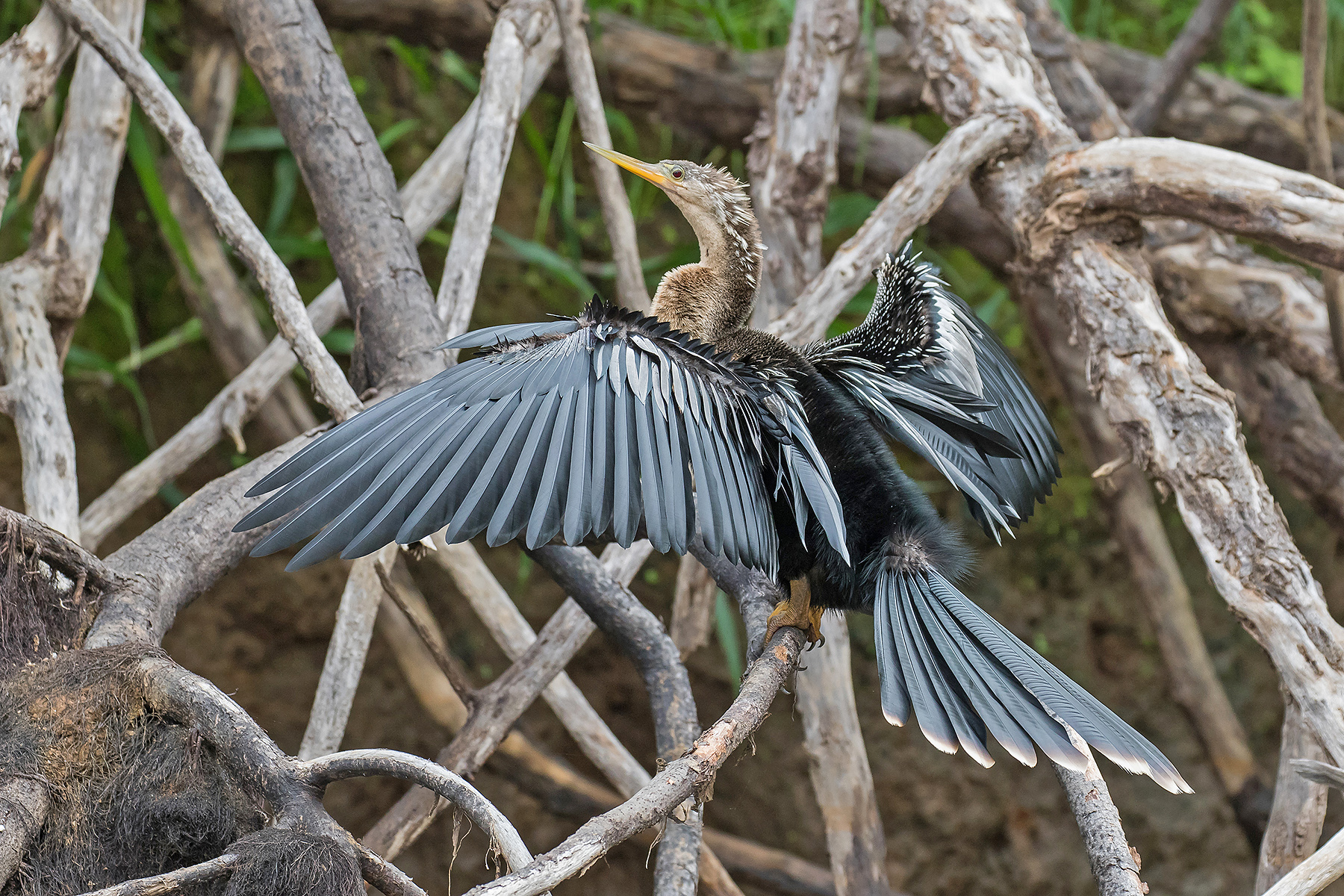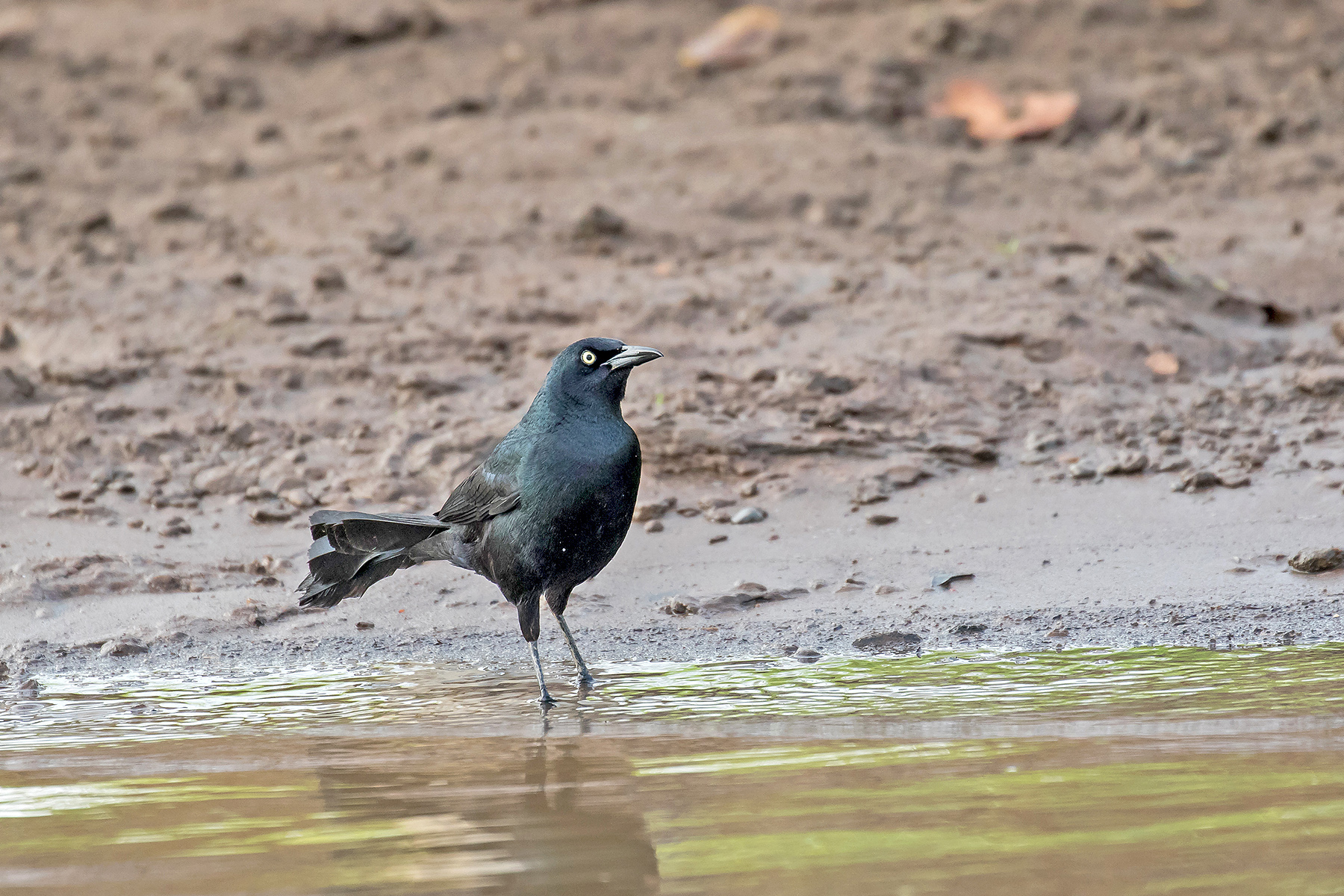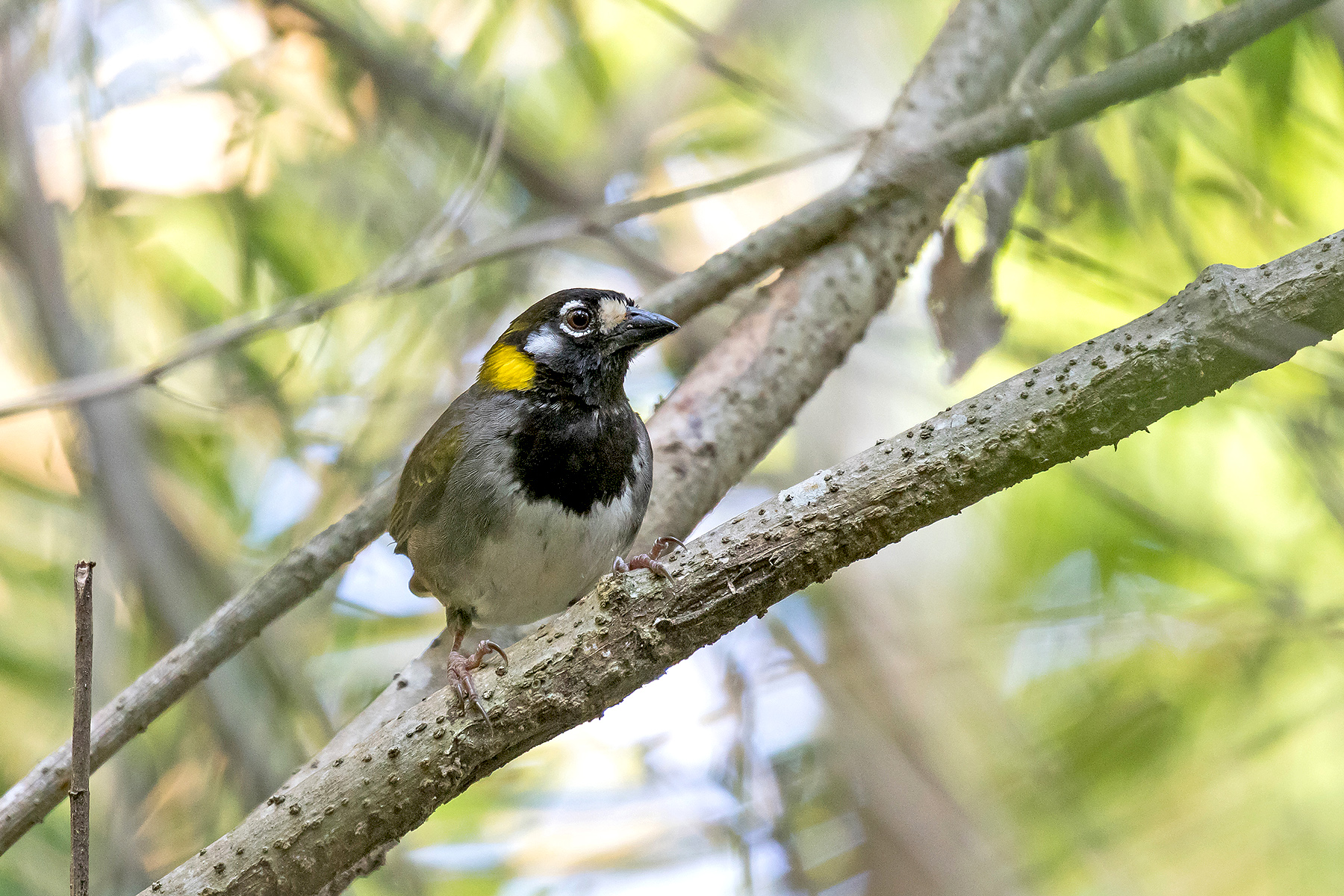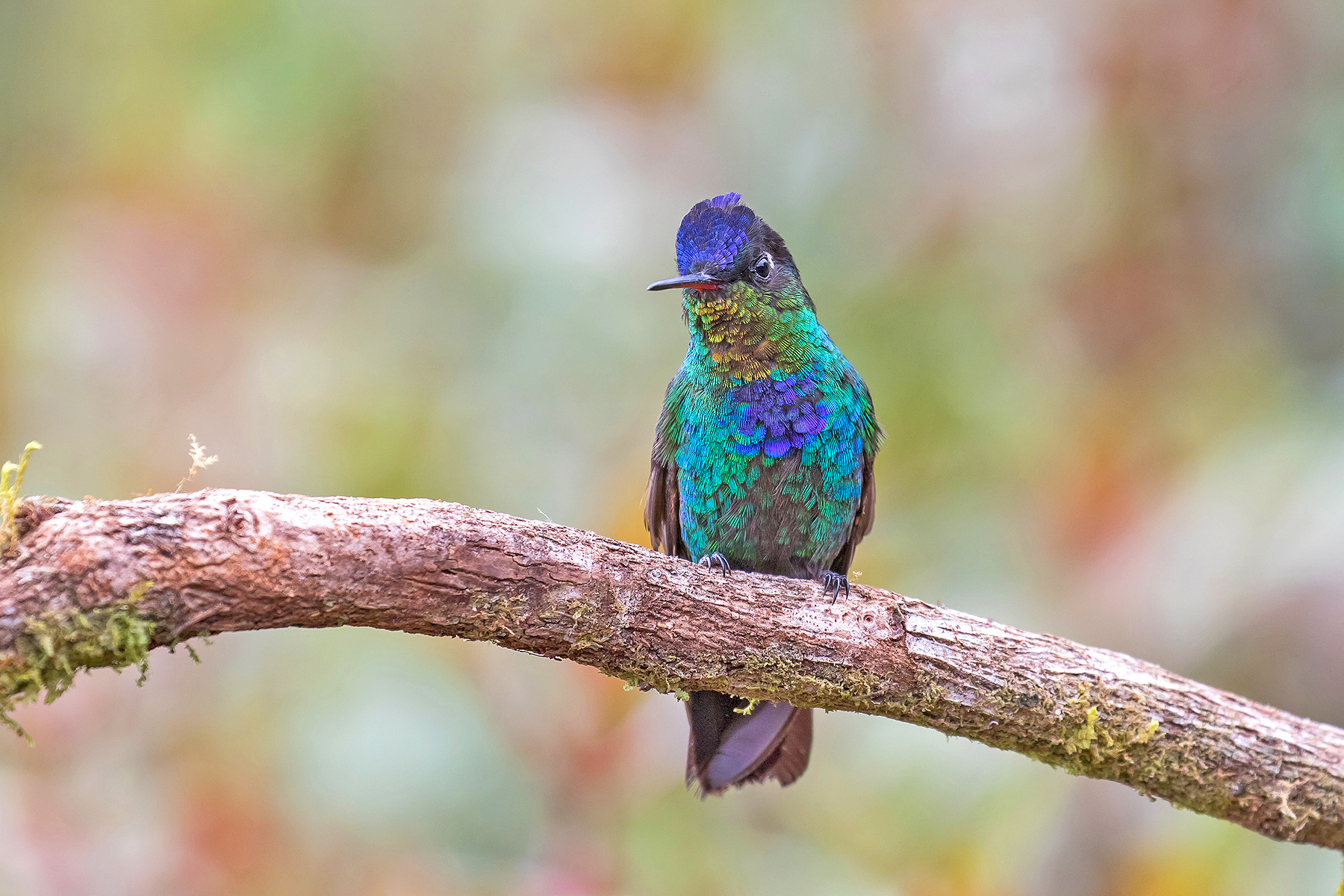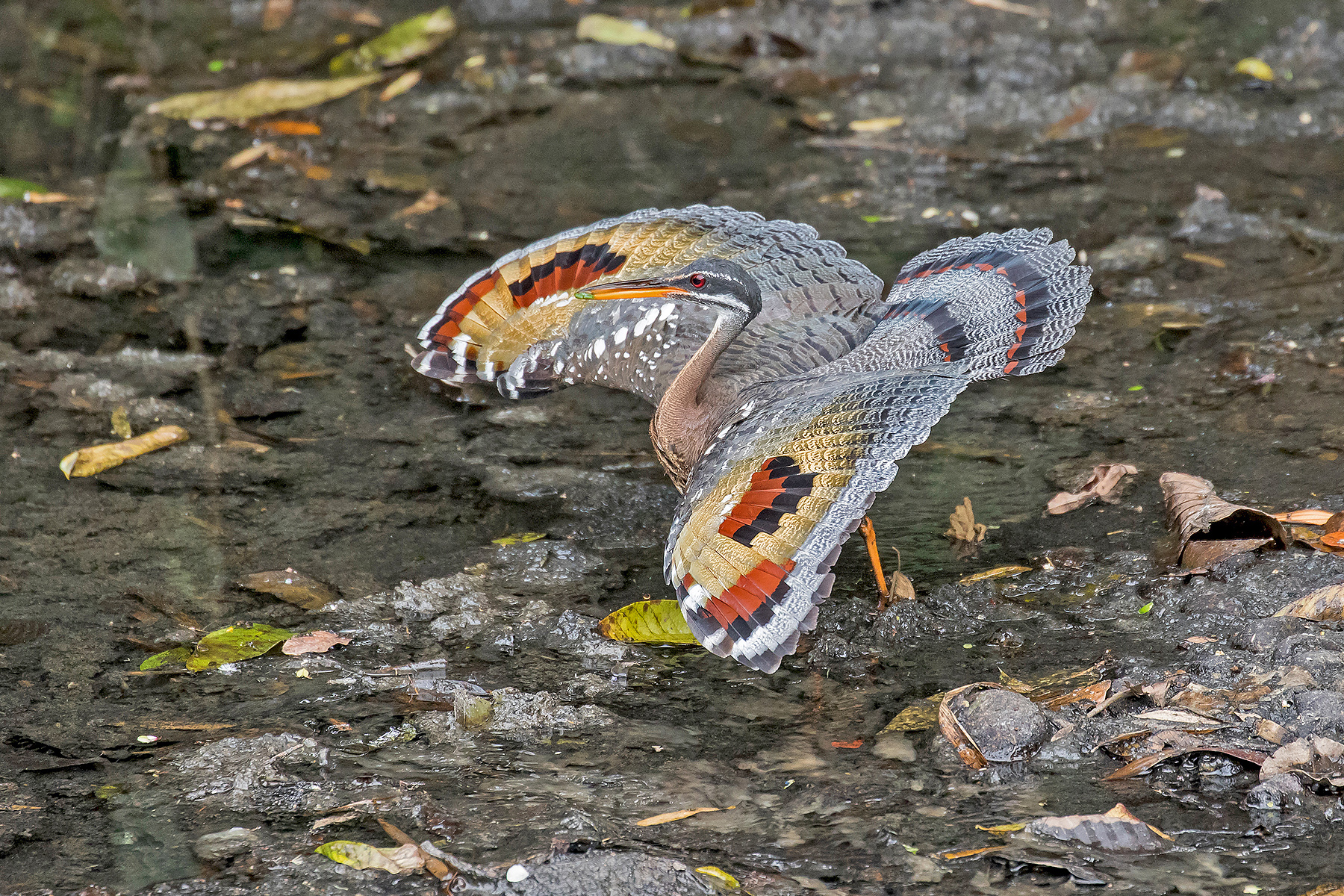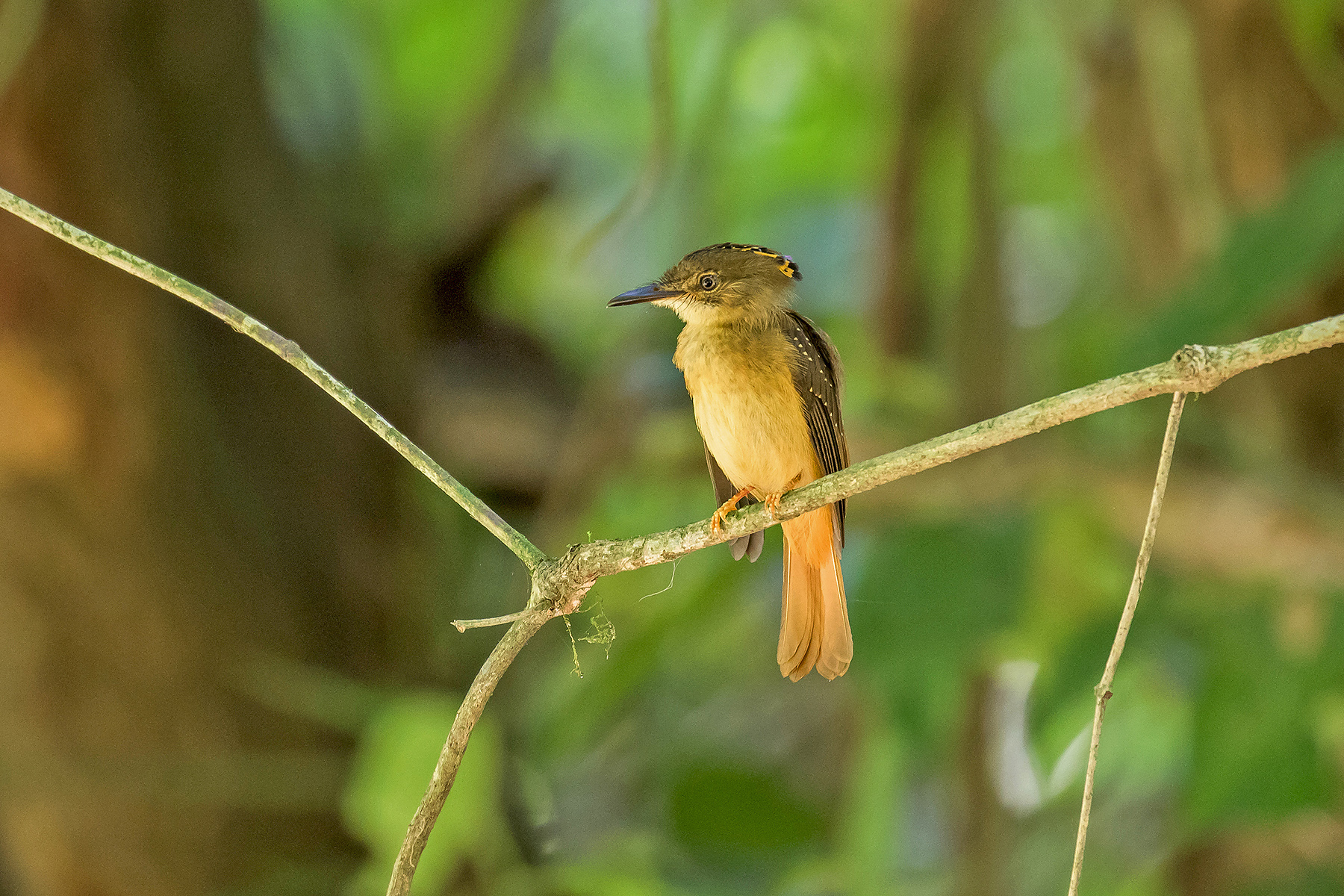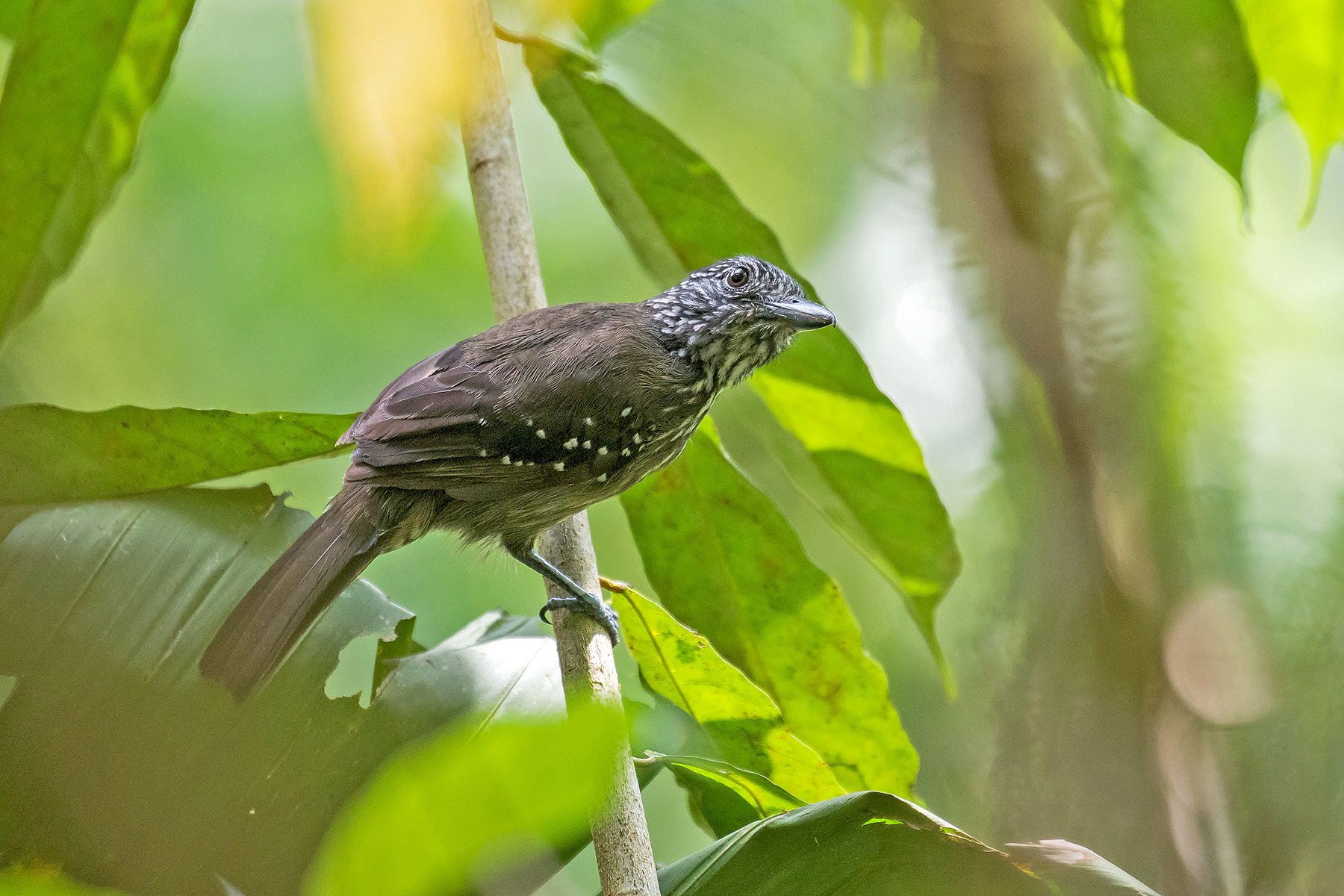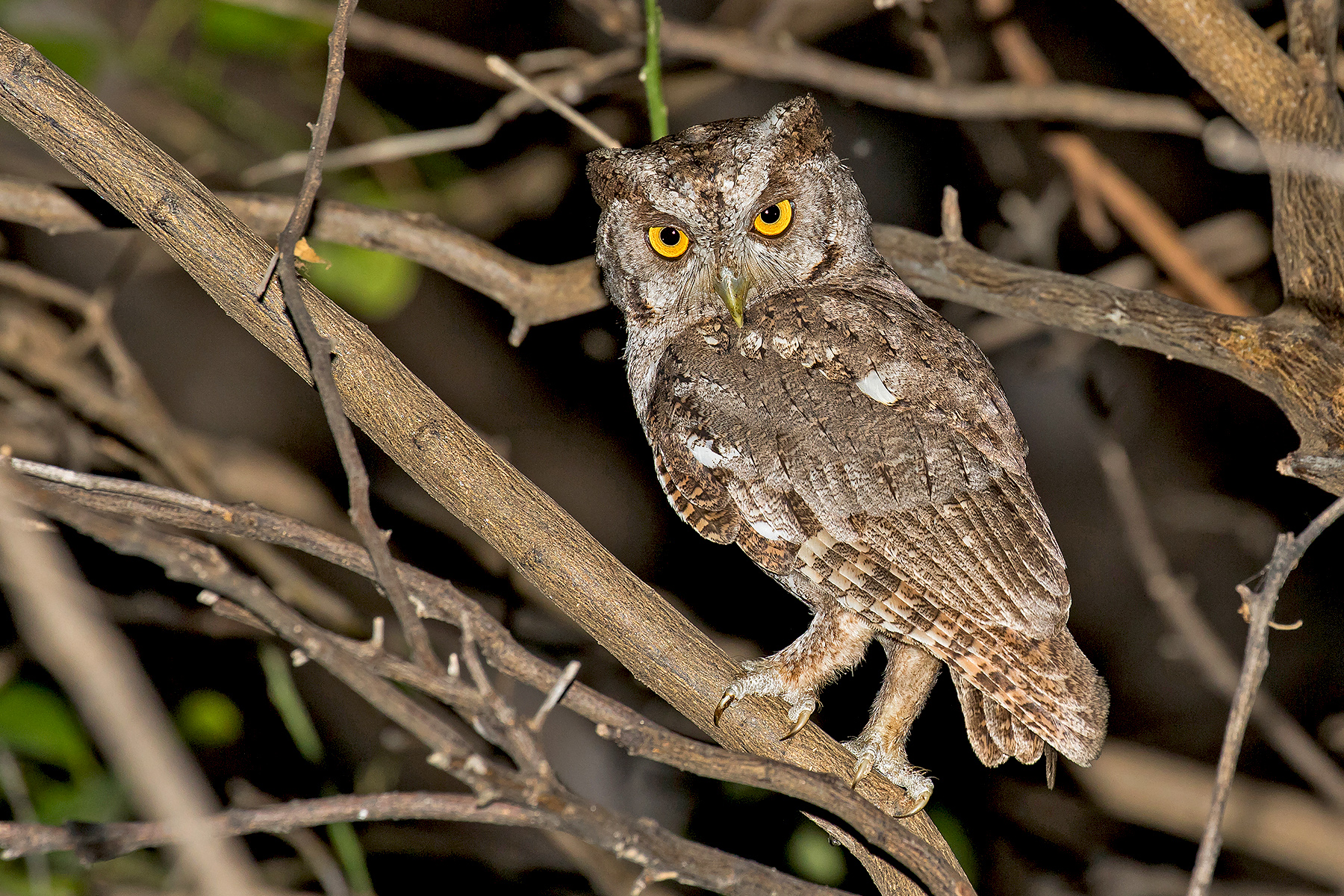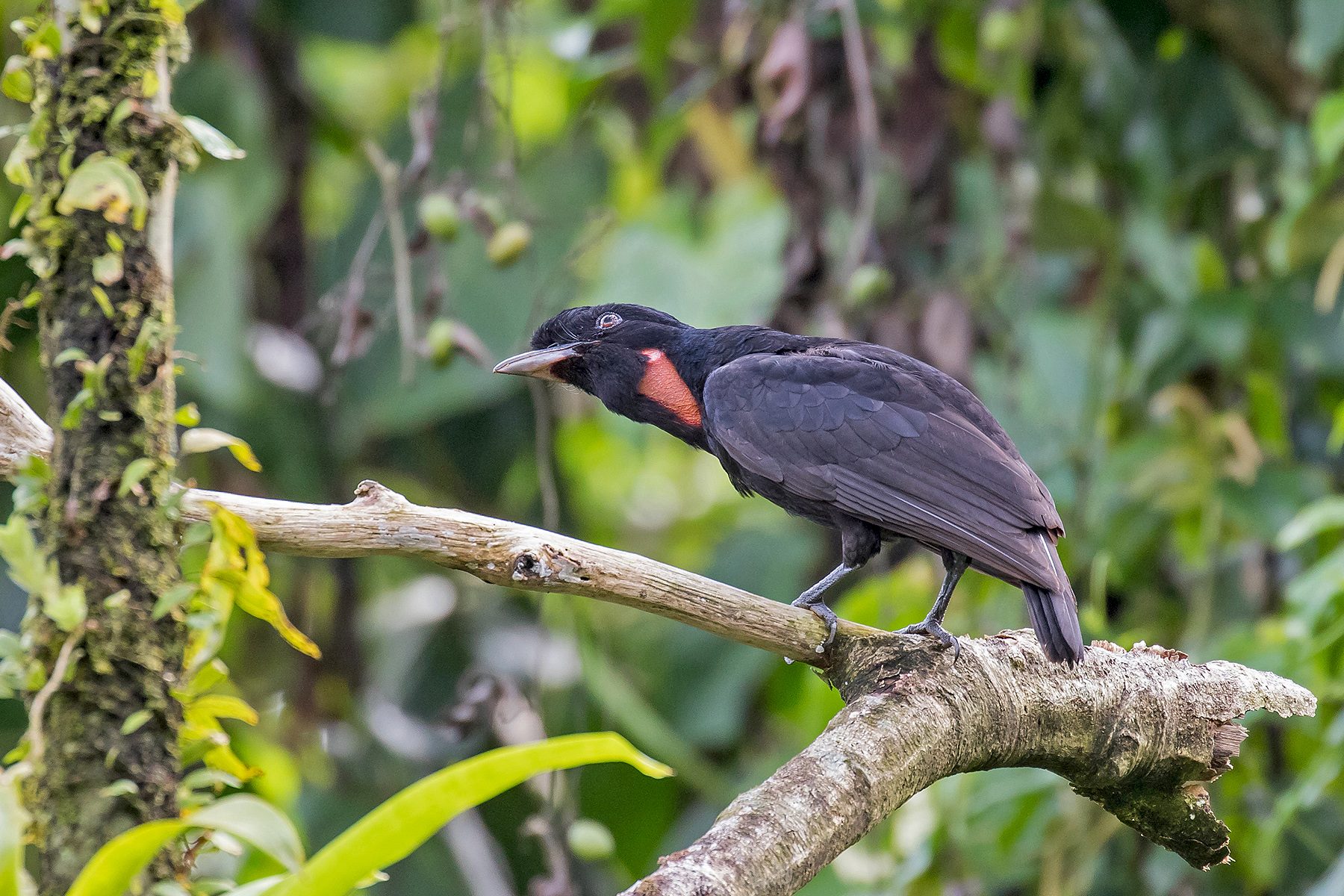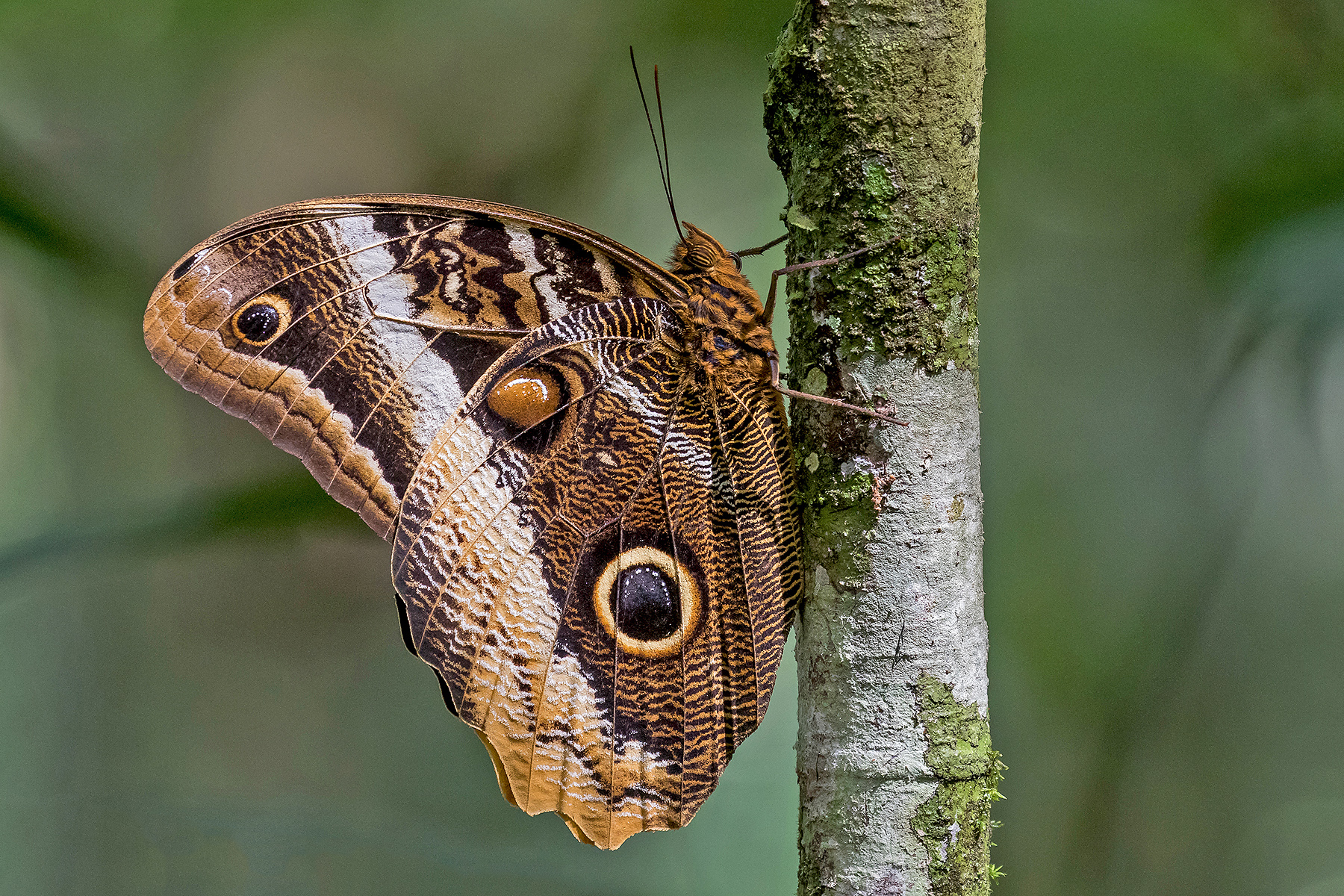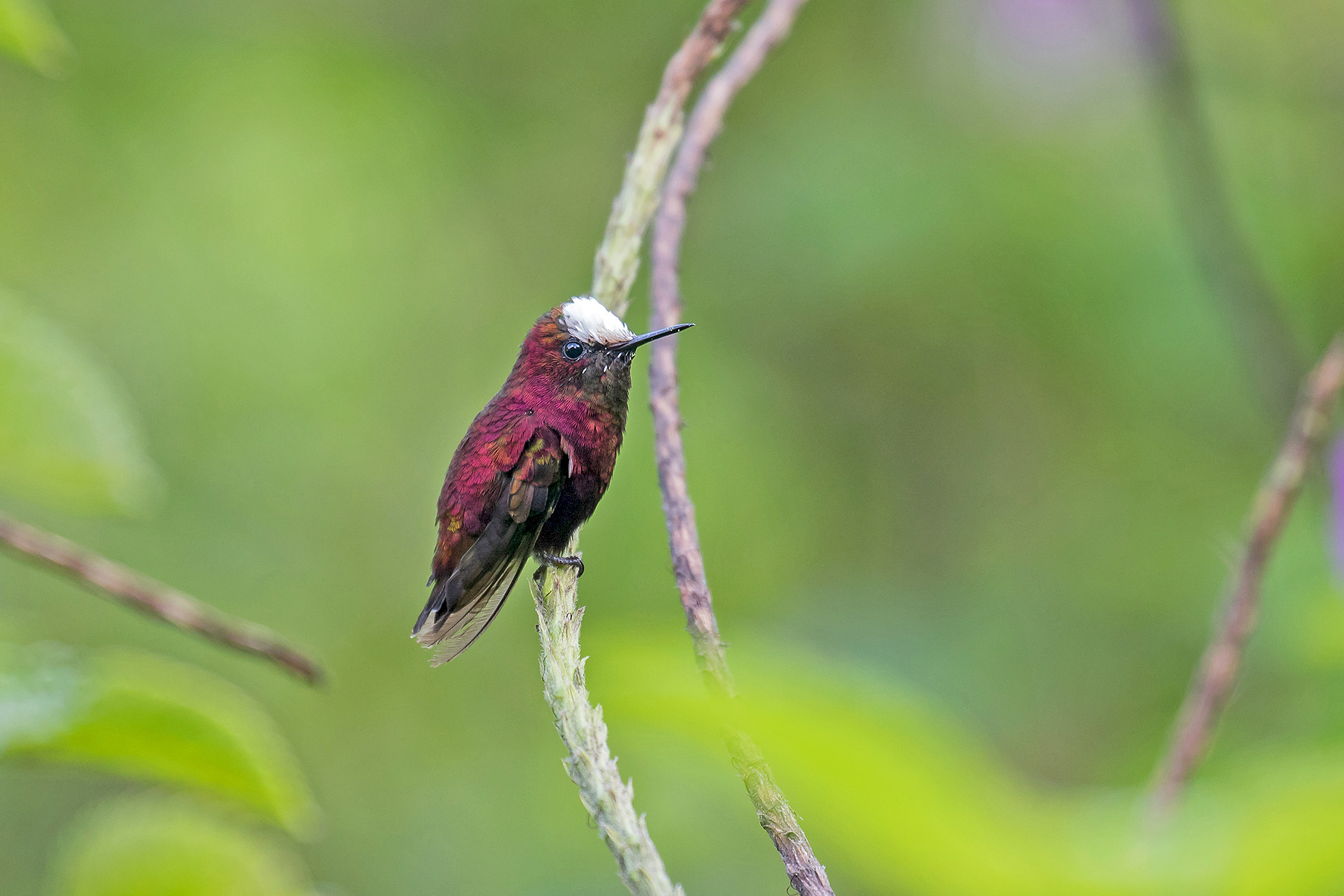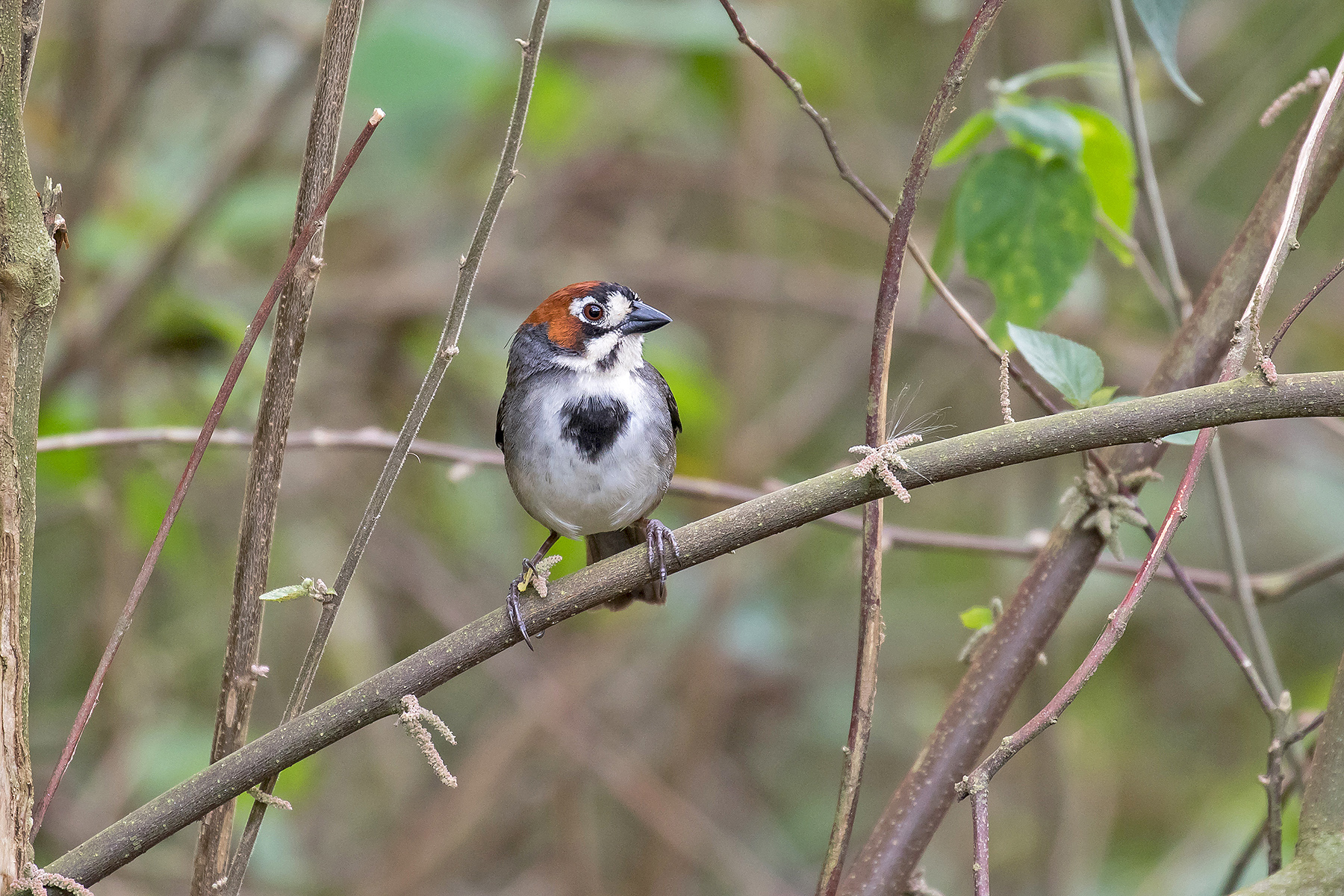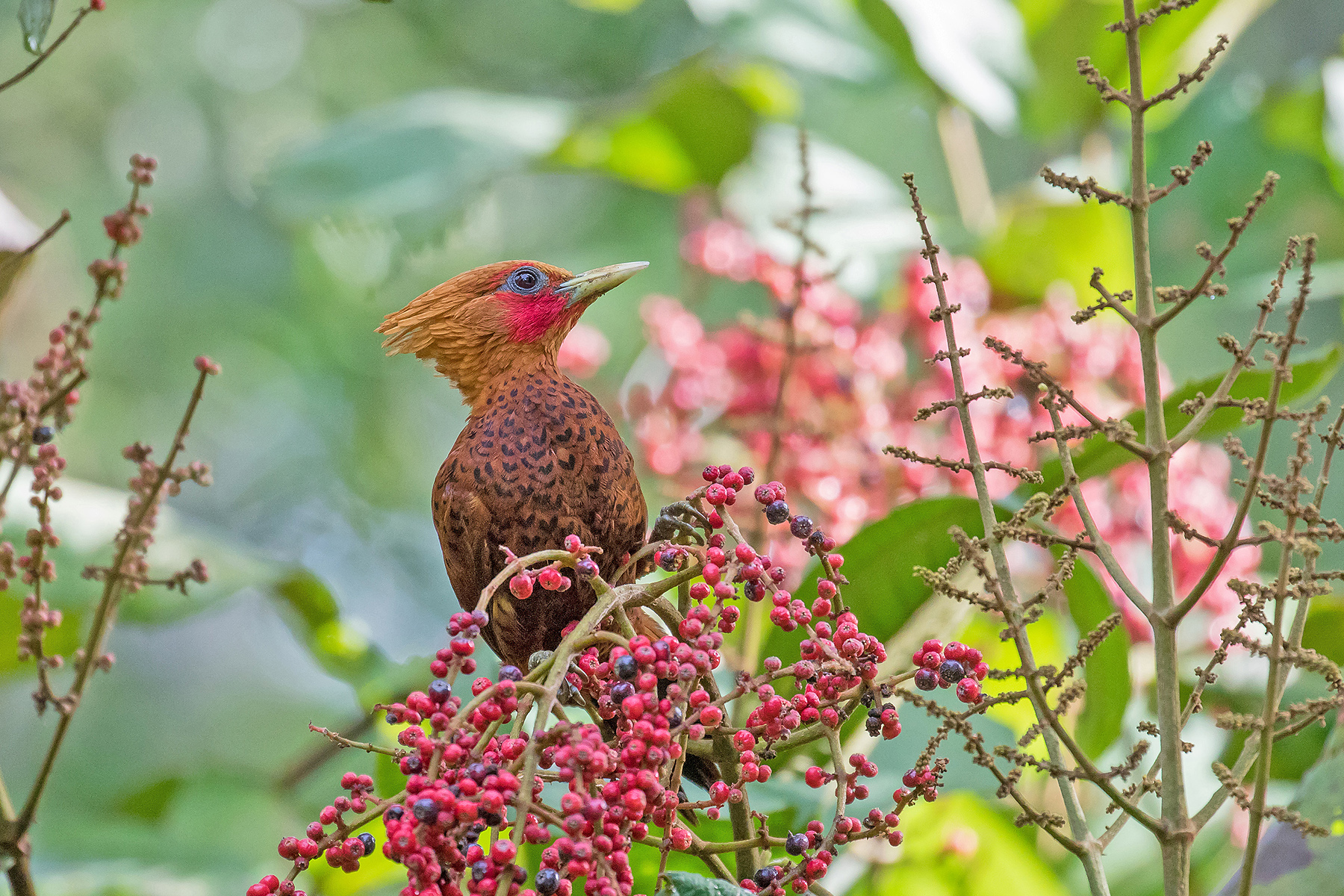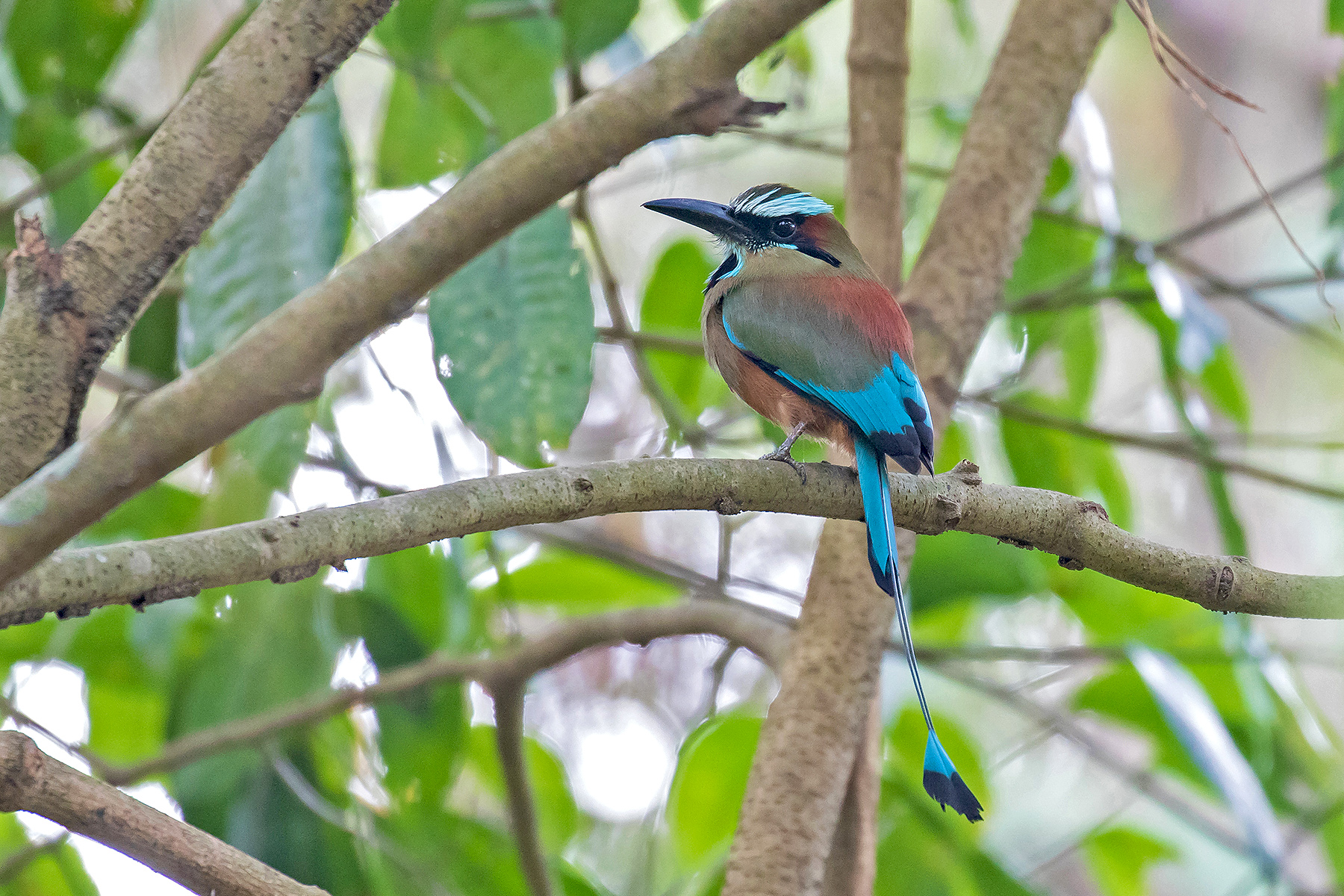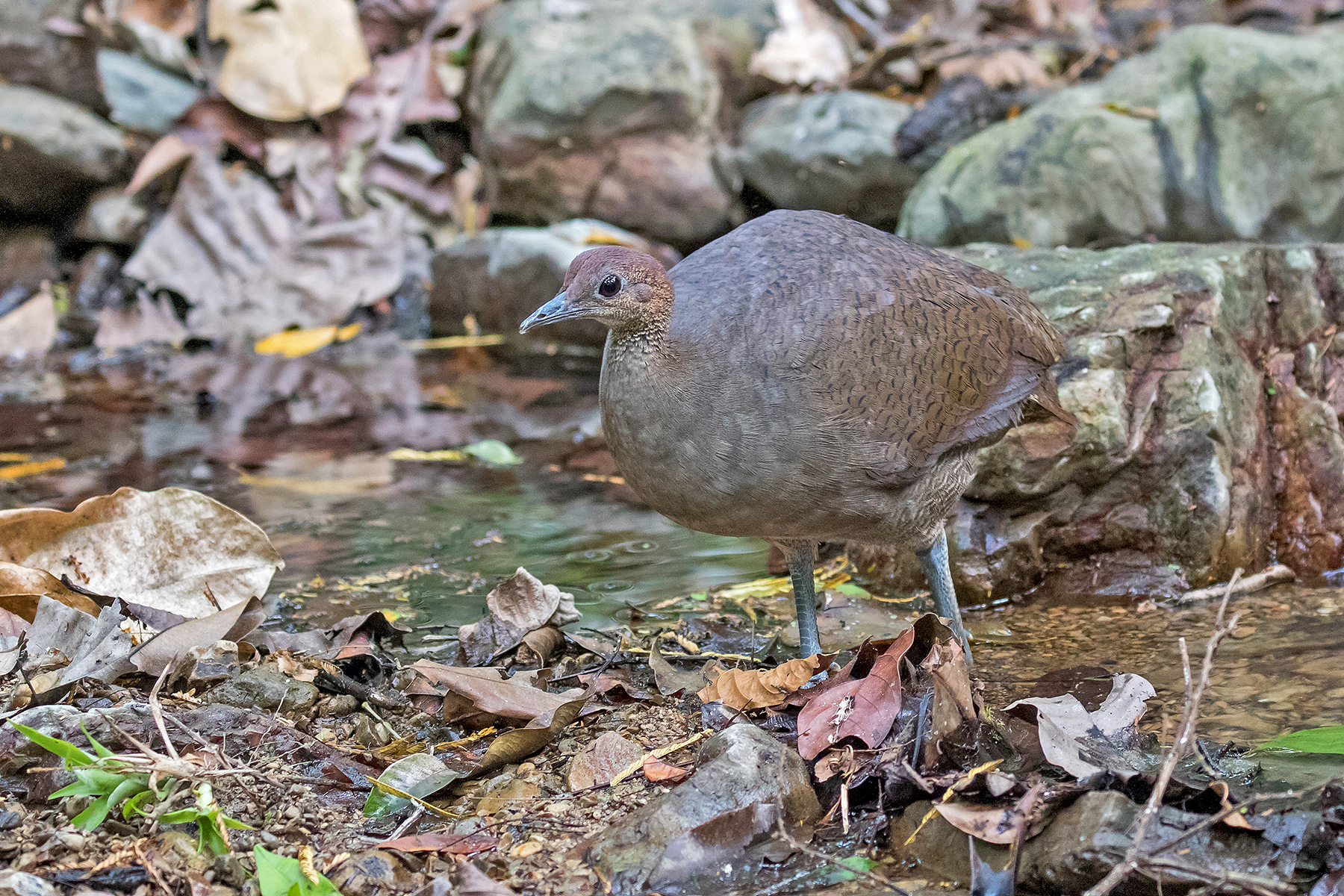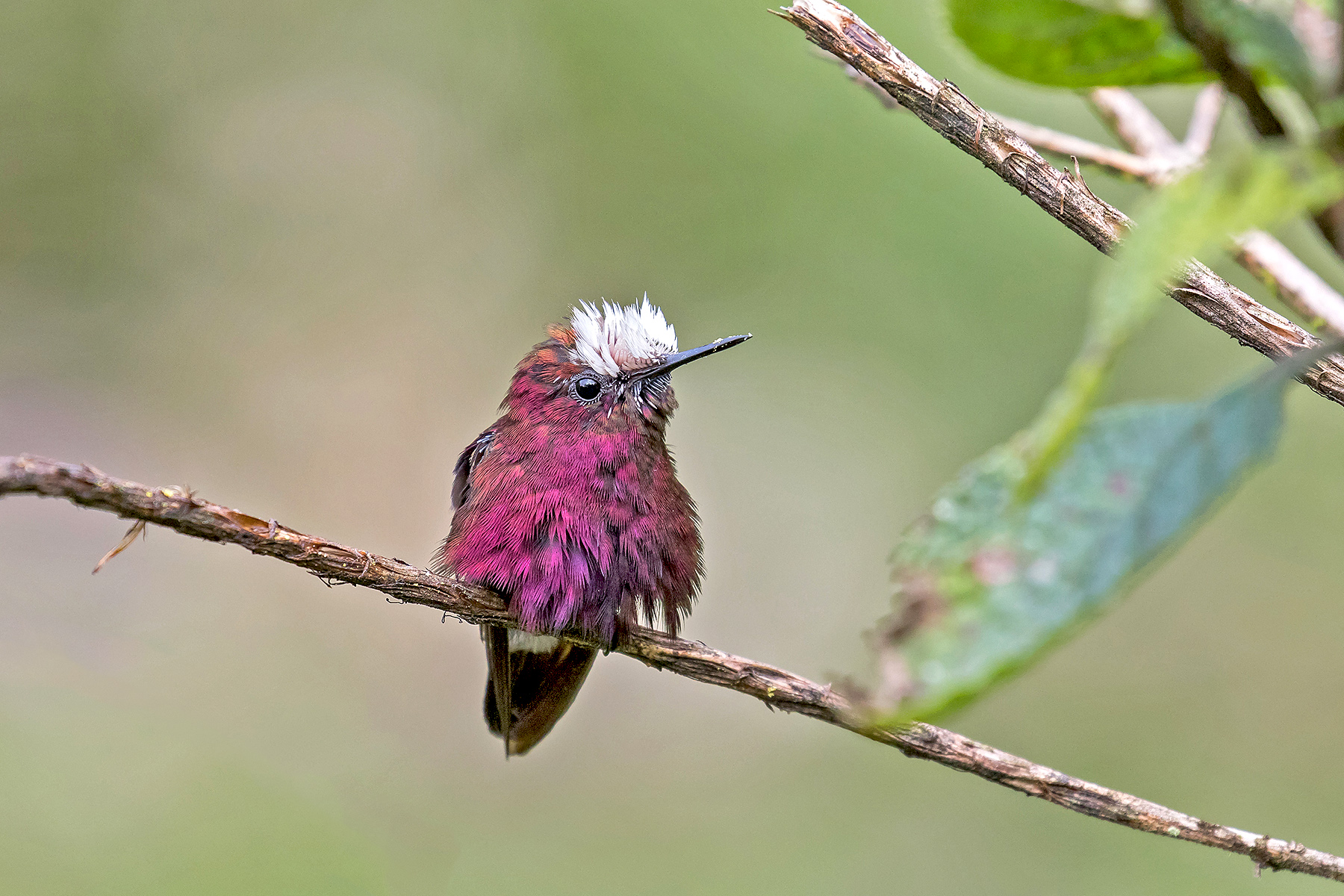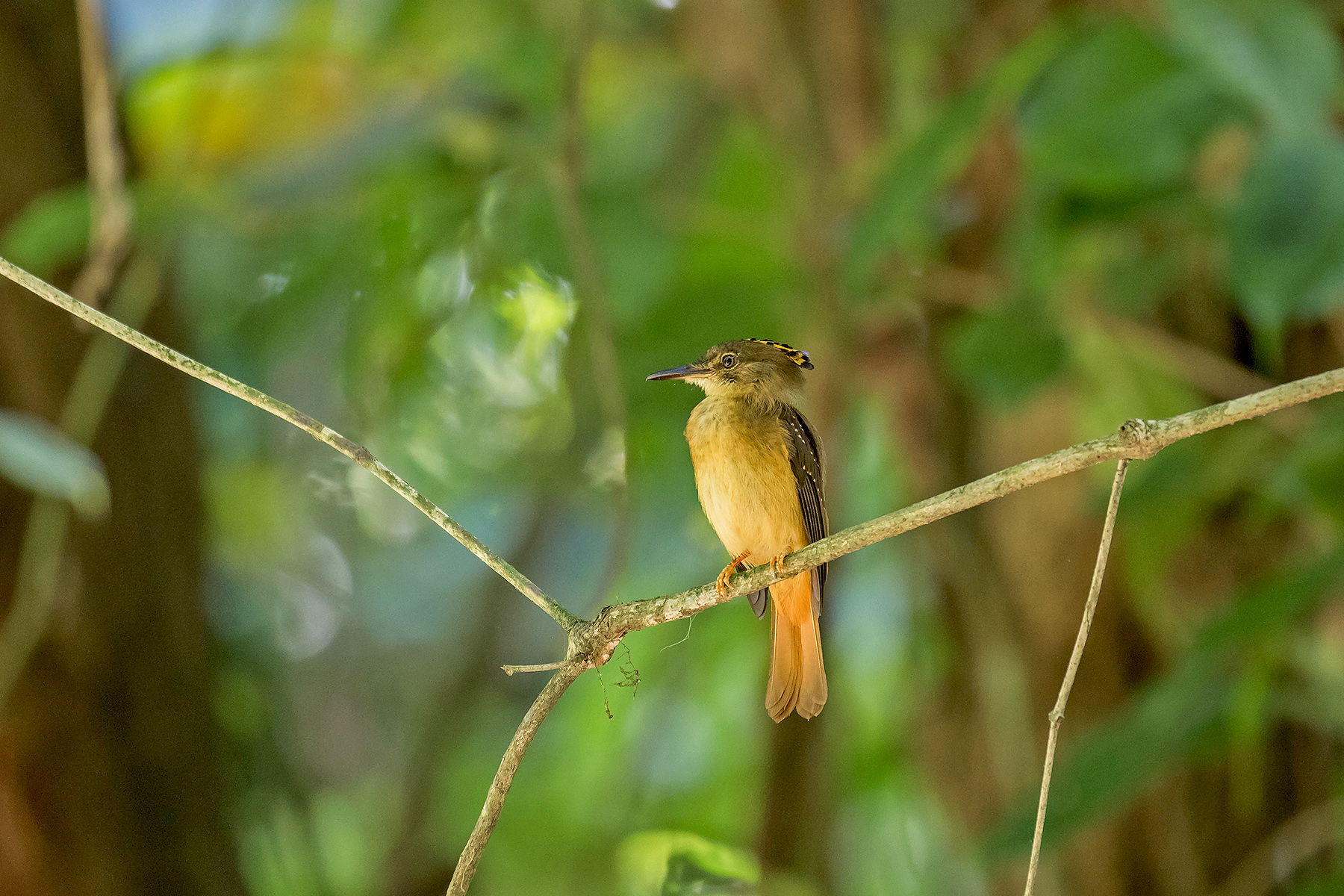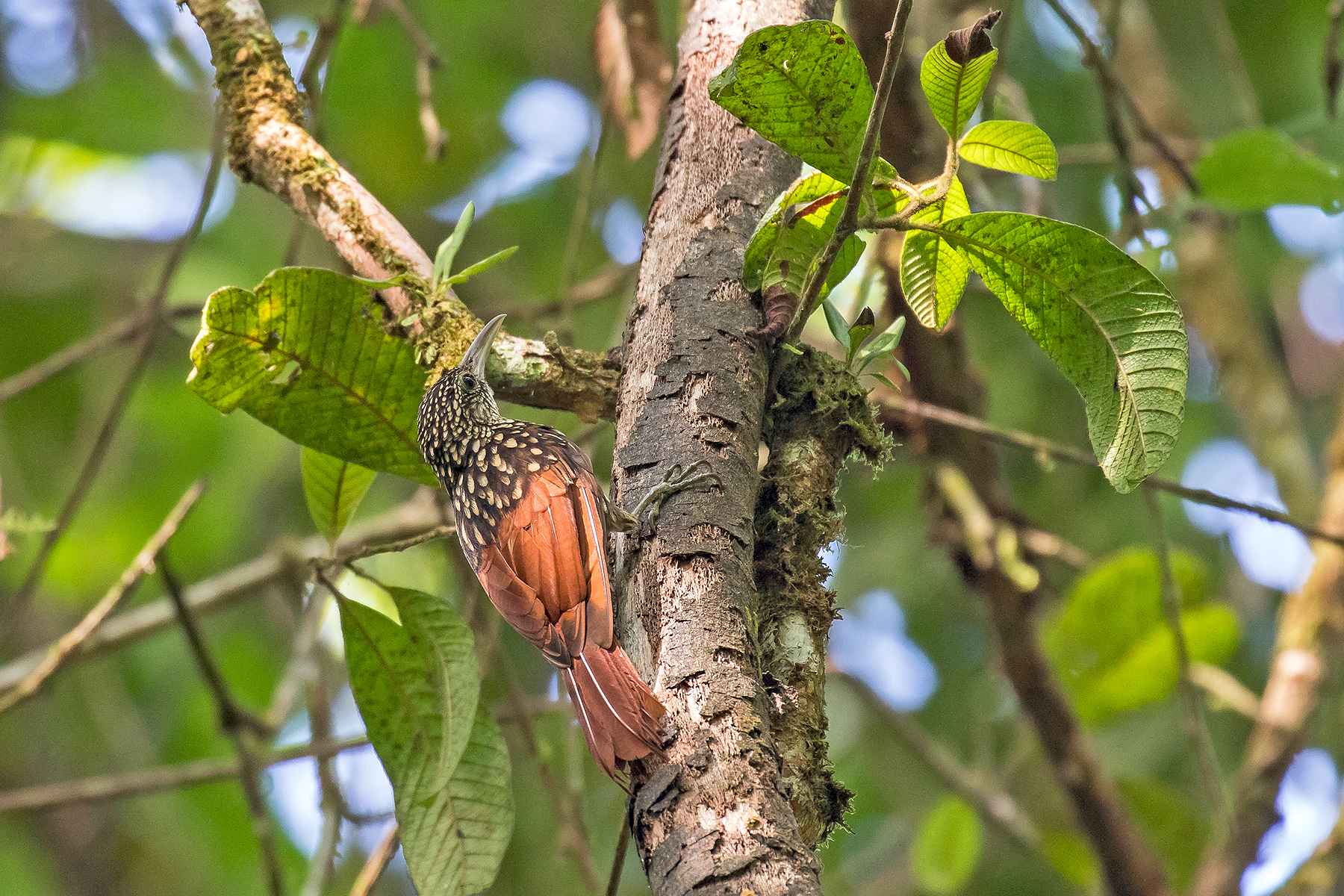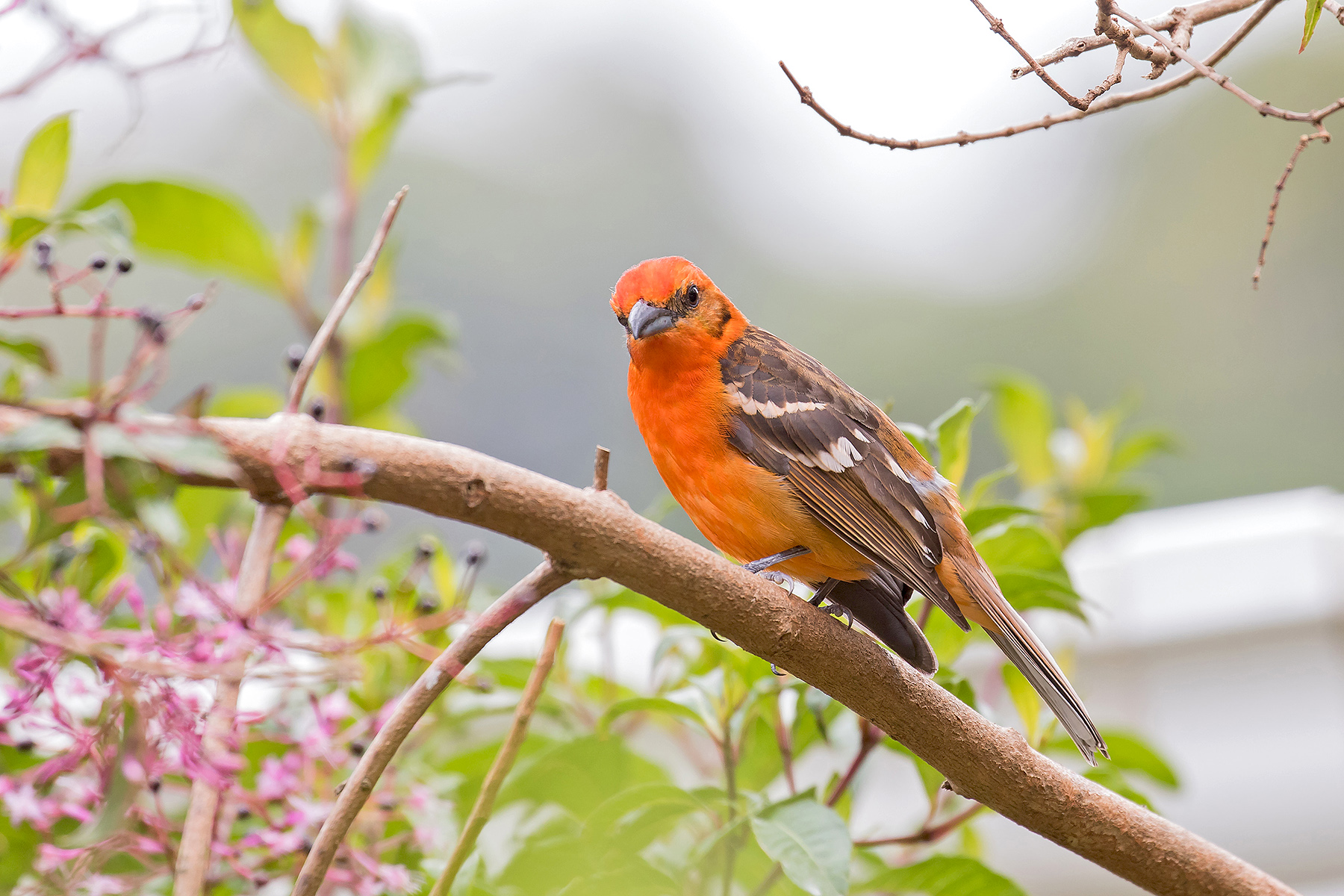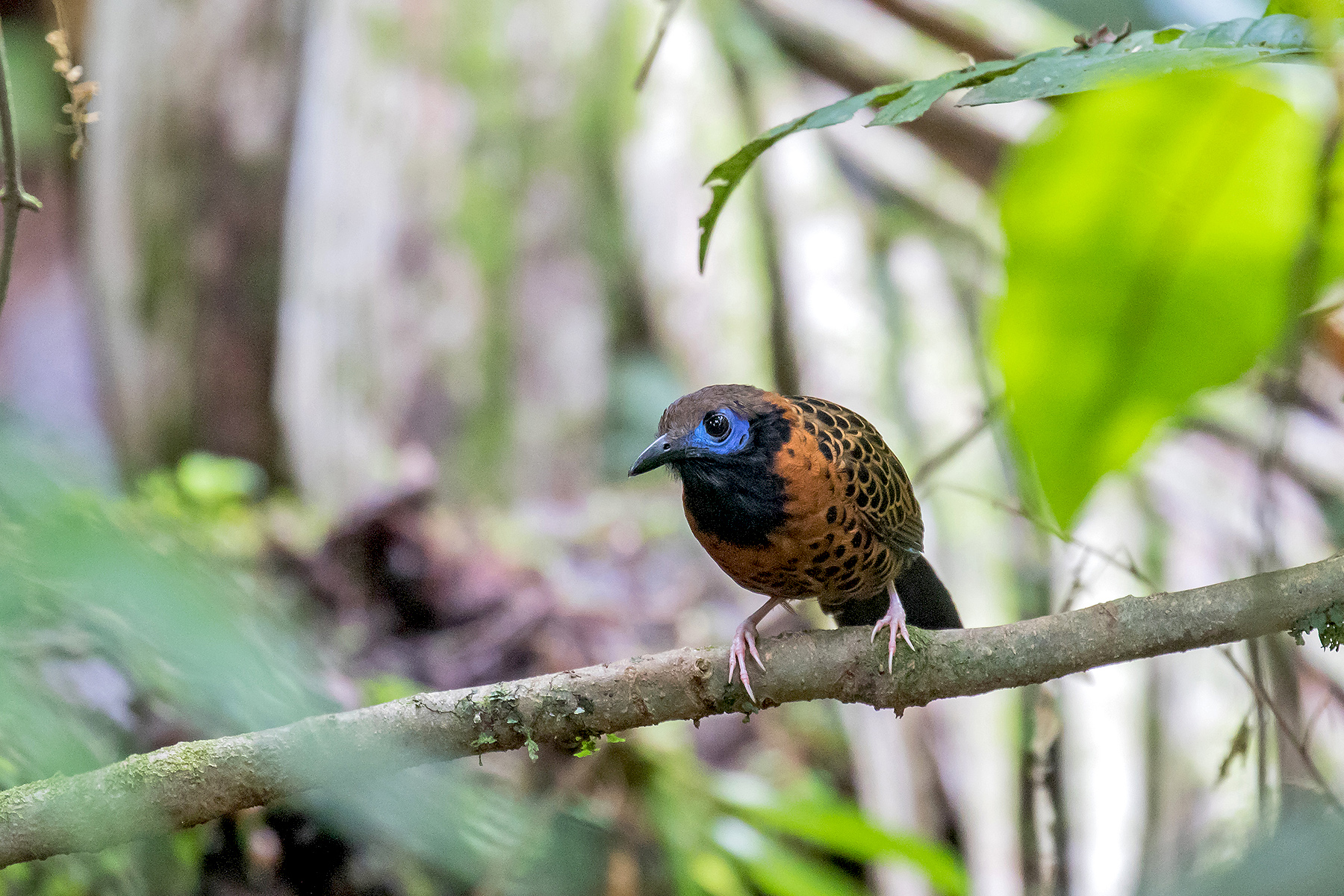CLASSIC COSTA RICA BIRDING TOUR: DETAILED ITINERARY
Costa Rica: Day 1 Our Costa Rica birding tour begins this afternoon at San José. Costa Rica’s capital city situated in the heavily populated Central Valley, but we will head for the slopes of Volcán Irazú, overlooking the valley, for an overnight stay.
Costa Rica: Day 2 This morning we will explore the slopes of the Irazú Volcano. At middle altitudes are large areas of montane forest interspersed with pastures and potato fields. At high altitudes, the chaparral-like paramo contains dense stands of montane bamboo whilst lower down at treeline the elfin woodlands are surrounded by natural savannas.
Early today, we will listen out for the noisy Buffy-crowned Wood Partridge, and with persistence, we may be fortunate enough to see this shy species. Sometimes the calls of the remarkable Resplendent Quetzal also cut through the cool morning air, and we have our first chance of finding this iconic species here.
Many of the other birds here are restricted to the mountains of Costa Rica and Panama, with this volcano offering our first chance at some of the more difficult to find of these specialities. Here we are likely to encounter Fiery-throated Hummingbird, Timberline Wren, Sooty and Mountain Thrushes, Sooty-capped Bush Tanager, Slaty Flowerpiercer, the stunning Flame-throated Warbler, Yellow-thighed and Large-footed Finches, and Volcano Junco. At this time of year, the tiny Volcano Hummingbirds can often be seen doing their amazing aerial display flights.
Should the bamboo be flowering, we could also encounter Maroon-chested Ground Dove, Barred Parakeet, Cabanis’s (or Blue) Seedeater or the rare Peg-billed Finch, although these species can be very hard to find and may not even be present in the area.
Later we shall descend to Rancho Naturalista, located on the Caribbean slope, for a two nights stay. We will stop along the way to look for the shy endemic Cabanis’s Ground Sparrow.
Either today, in the Central Valley, or in other open habitats during the tour, we will come across Lesson’s Motmot, Cabanis’s Wren, the restricted-range Hoffmann’s Woodpecker and Finsch’s Parakeet, and a number of widespread species such as Western Cattle Egret, Black and Turkey Vultures, Red-billed Pigeon, Ruddy Ground Dove, Inca and White-tipped Doves, Squirrel Cuckoo, Groove-billed Ani, Lineated Woodpecker, Tropical Kingbird, Great Kiskadee, Brown Jay, House Wren, Clay-coloured Thrush, Palm and Blue-grey Tanagers, Bananaquit, Rufous-capped Warbler (the local form is sometimes split as Chestnut-capped Warbler), Greyish Saltator, Melodious Blackbird (a recent invader from Nicaragua) and the ubiquitous Great-tailed Grackle.
On our way to Rancho Naturalista, we will make a stop at a small wetland where we may find a number of wetland species such Blue-winged Teal, Lesser Scaup, Ring-necked Duck, Least and Pied-billed Grebes, Black-crowned Night Heron, White-tailed Kite, Western Osprey, Snail Kite and Purple Gallinule, while at a nearby river we will look out for Fasciated Tiger Heron.
Costa Rica: Day 3 Today we will visit the little known but very birdy reserve called El Copal, which is home to many interesting species. Here we will make our way along various trails through the forest as well as spending time in the clearings.
In particular, we shall be looking out for the brilliant near-endemic Blue-and-gold Tanager and the rarely-seen Yellow-eared Toucanet.
Other birds that are very possible at this site include Crested Guan, both Ruddy and Short-tailed Pigeons (overlapping in altitude here), Green Hermit, the impressive Green-fronted Lancebill, Gartered and Collared Trogons, Buff-throated Foliage-gleaner, the range-restricted Tawny-throated Leaftosser, Olivaceous Woodcreeper, the spectacular Brown-billed Scythebill, Russet Antshrike, Slaty Antwren, Dull-mantled and Zeledon’s Antbirds, the elusive Ochre-breasted Antpitta, the uncommon Rufous-browed Tyrannulet, White-throated Spadebill, Rufous Mourner, the smart White-ruffed Manakin, Ruddy-tailed Flycatcher, the sneaky Northern Schiffornis, the delightful Song Wren, Black-headed Nightingale-Thrush (with its eerie song), White-vented and Tawny-capped Euphonias, the scarce Ashy-throated Bush Tanager, colourful White-winged, Carmiol’s, Emerald, Silver-throated, Speckled, Black-and-yellow, and Bay-headed Tanagers, Black-faced Grosbeak and Scarlet-thighed Dacnis.
Mainly catering to birders, hospitable Rancho Naturalista is perched on a hillside overlooking the fertile Tuis river valley.
Not far from the lodge, patches of primary foothill forest host one of Costa Rica’s most localized birds. Early in the morning, the near-endemic Tawny-chested Flycatcher advertises its presence with its characteristic song and we have an excellent chance of seeing this speciality. Even better, the exquisite Snowcap, undoubtedly one of the most spectacular ‘hummers’, is regularly seen visiting gardens in the area. We shall wait for this tiny jewel to show itself in all its splendour, and we should also see Stripe-throated Hermits, Violet-headed Hummingbird, White-necked Jacobin, Green-breasted Mango, Brown Violetear, Rufous-tailed Hummingbird, Crowned (or Violet-crowned) Woodnymph, Bronze-tailed (Red-footed) Plumeleteer and Green-crowned Brilliant.
Other birds we may well see in the open areas or along the forest trails include Double-toothed Kite, Grey-headed Chachalaca, Grey-chested Dove, White-crowned and Brown-hooded Parrots, Common Pauraque, Dusky-backed, White-collared and Chestnut-collared Swifts, Keel-billed Toucan, Collared Aracari, Golden-olive and Black-cheeked Woodpeckers, Wedge-billed, Cocoa, Spotted and Streak-headed Woodcreepers, Plain Antvireo, Mistletoe Tyrannulet, Scale-crested Pygmy Tyrant, Yellow-bellied Elaenia, Common and Black-headed Tody-Flycatchers, Tropical Pewee, Ochre-bellied, Sulphur-bellied, Piratic, Social, and Grey-capped Flycatchers, Bright-rumped Attila (the local form is sometimes split as Flammulated Attila), Masked Tityra, Cinnamon Becard, White-crowned Manakin, Blue-and-white and Northern and Southern Rough-winged Swallows, White-breasted Wood Wren, Band-backed, Stripe-breasted and Black-throated Wrens, Tropical Parula, Golden-crowned Warbler, Golden-hooded, Scarlet-rumped (the form here is sometimes split as Passerini’s) and White-lined Tanagers, Red-throated Ant Tanager, Black-headed and Buff-throated Saltators, Yellow-faced and Blue-black Grassquits, Variable Seedeater (the black form here is a potential split as Black Seedeater), Thick-billed (or Lesser) Seed-Finch, Orange-billed and Black-striped Sparrows, Chestnut-capped Brushfinch, Olive-crowned Yellowthroat, Montezuma Oropendola, Scarlet-rumped and Yellow-billed Caciques and Bronzed Cowbird.
During the northern winter period, visitors include Broad-winged Hawk, Olive-sided and Yellow-bellied Flycatchers, Tennessee, Kentucky, Chestnut-sided, Golden-winged and Blackburnian Warblers, and Baltimore Oriole.
During our visit to the area, we shall also look for Sunbittern along a nearby river and visit a good area for the localized White-throated Flycatcher.
Costa Rica: Day 4 After some final birding at Rancho Naturalista, we will drive up into the Cordillera de Talamanca for a two nights stay at Cerro de la Muerte. In the late afternoon, we will have time for some initial exploration of the splendid mountain habitat.
Costa Rica: Day 5 Cerro de la Muerte or the ‘Mountain of Death’ was so named because of the many people who died of cold whilst crossing it en route between the Central Valley and Valle del General to the south. Nowadays the Pan American Highway crosses the mountain at over 3300m and a comfortable lodge ensures that it no longer holds such fears.
Here we will be birding the temperate oak forests with their thick bamboo understorey. At these altitudes many of the birds seem remarkably tame, and whilst the number of species is not great, most are confined to the high mountains of Costa Rica and adjacent Panama. Here lives one of the world’s most spectacular birds, the Resplendent Quetzal. This is one of the few places where these wonderful birds can be seen without difficulty and we will be able to watch in fascination as they fly from tree to tree with their incredibly elongated uppertail coverts dancing along behind them.
We shall also concentrate our efforts on finding such birds as Costa Rican Pygmy Owl, Sulphur-winged Parakeet, Ruddy Treerunner, Buffy Tuftedcheek, the secretive Silvery-fronted Tapaculo, the rare Ochraceous Pewee, Black-capped and Golden-bellied Flycatcher, Black-faced Solitaire, Black-billed Nightingale-Thrush, Long-tailed Silky-flycatcher, Black-and-yellow Phainoptila, Yellow-winged Vireo, Collared Whitestart, Black-cheeked Warbler, the curious Wrenthrush (or Zeledonia), which was formerly often placed in a family of its own, Grey-breasted Wood Wren, Spangle-cheeked Tanager, Black-thighed Grosbeak, the smart Sooty-faced Finch and Golden-browed Chlorophonia. With patience, we should also see the scarce Silvery-throated Jay and a covey of spectacular Spotted Wood Quail.
The hummingbird feeders at our hotel provide excellent opportunities for studying Lesser Violetear, Admirable, Scintillant and Volcano Hummingbirds, and Grey-tailed Mountaingem. We shall also keep a lookout for Dark Pewee in the nearby treetops.
Some of the more widespread species we should encounter here include Band-tailed Pigeon, Swallow-tailed Kite, Acorn and Hairy Woodpeckers, Spot-crowned Woodcreeper, Torrent Tyrannulet, Mountain Elaenia, Northern Tufted and Yellowish Flycatchers, Black Phoebe, Brown-capped Vireo, Ochraceous Wren, Ruddy-capped Nightingale-Thrush, Slate-throated Whitestart, Flame-coloured Tanager and Rufous-collared Sparrow. During the northern winter period, Black-throated Green and Wilson’s Warblers are present.
Night-time excursions will give us the opportunity to find Bare-shanked Screech Owl, Dusky Nightjar and, with persistence and luck, even the rare and shy Unspotted Saw-whet Owl.
Costa Rica: Day 6 After spending much of the day at Cerro de la Muerte we shall descend to the San Isidro area for an overnight stay, stopping en route to look for the near-endemic Snowy-bellied Hummingbird.
Costa Rica: Day 7 While at San Isidro we will be looking in particular for the stunning but threatened Turquoise Cotinga.
Before leaving the San Isidro area, we will make a visit to the famous private reserve of Dr Alexander Skutch, who was one of the world’s leading authorities on neotropical birds. A wide variety of birds can be seen in his ‘garden’ and in the forest along the entrance road. Some of the species we expect to find here are Orange-chinned Parakeet, Charming (or Beryl-crowned) Hummingbird, near-endemic Garden Emerald, Purple-crowned Fairy, Baird’s Trogon, the near-endemic Fiery-billed Aracari, Olivaceous Piculet, Golden-naped Woodpecker, Tawny-winged Woodcreeper, Plain Xenops, Yellow Tyrannulet, Northern Bentbill, Golden-crowned Spadebill, Slate-headed Tody-Flycatcher, the scarce Yellow-bellied Tyrannulet, Yellow-olive Flatbill, Dusky-capped and Boat-billed Flycatcher, White-winged Becard, the near-endemic Orange-collared Manakin, Rufous Piha, Tawny-crowned and Lesser Greenlets, Rufous-breasted Wren, Orange-billed Nightingale-Thrush, White-shouldered and Gray-headed Tanagers, Green, Shining and Red-legged Honeycreepers, Blue Dacnis and Buff-rumped Warbler. If the Vochysia trees are flowering, our concerted effort to find the elusive, near-endemic White-crested Coquette should result in good views.
Afterwards, we shall continue southwards to the Wilson Botanical Gardens near Las Cruces for an overnight stay.
In more open country with scrub and fields we should find such species as Pearl Kite, Roadside Hawk, Laughing Falcon, Yellow-headed Caracara, Scaled Pigeon, Smooth-billed Ani, Striped Cuckoo, Red-crowned Woodpecker, Bran-coloured and Fork-tailed Flycatchers, Lesser Elaenia, Isthmian Wren, Yellow-throated Brushfinch, Scarlet-rumped Tanager (the local form is sometimes split off as Cherrie’s Tanager) and Streaked Saltator.
A major target today will be the lovely but shy Rosy Thrush-Tanager, a monotypic bird family.
Costa Rica: Day 8 The pleasant Wilson garden is a very birdy spot, with a host of flycatchers, warblers and tanagers, including many North American migrants, but we will be concentrating on the near-endemic White-tailed Emerald. Some of the additional species we might find here are Marbled Wood Quail, Choco Screech-Owl (only recently discovered to occur here), Ruddy Foliage-gleaner and Elegant Euphonia.
Two of the major specialities of the area are the near-endemic Chiriqui Yellowthroat, which can regularly be found around some nearby marshy ponds, and Costa Rican Brushfinch, a localized denizen of the forest edge.
Later we will head for the Golfito region for a two nights stay, stopping along the way to look for some interesting birds.
Recent deforestation has created a corridor of open country that has allowed a variety of colonizing species to invade the area as well as some other more widespread species. Of these, much the most notable are the near-endemic Veraguas Mango and the restricted-range Sapphire-throated Hummingbird. Other new birds may well include Wattled Jacana, Southern Lapwing, Pale-vented Pigeon, Brown-throated Parakeet, Red-rumped Woodpecker, Pale-breasted Spinetail, Yellow-crowned Tyrannulet, Rusty-margined Flycatcher, Red-breasted Blackbird, Crested Oropendola and Giant Cowbird.
Costa Rica: Day 9 The wilderness area of Corcovado National Park and the adjoining Piedras Blancas National Park provides some of the last remaining habitat for many of the southern Pacific slope endemics. The star bird of the area and the great prize of this morning will be the very localized Black-cheeked Ant-Tanager, one of just a handful of species entirely endemic to Costa Rica (most of the regional endemics are shared with Panama). Two fairly common near-endemic specialities of the area are Black-hooded Antshrike and Spot-crowned Euphonia. We will also be on the lookout for the elusive Uniform Crake and the uncommon Bronzy Hermit.
Other birds we could well find in the area include King Vulture, Grey-cowled Wood Rail, Blue Ground Dove, Blue-headed Parrot, Costa Rican Swift, Band-tailed Barbthroat, Long-billed Hermit, Chestnut-mandibled Toucan, Black-striped and Tawny-winged Woodcreepers, Chiriqui Foliage-gleaner, Western Woodhaunter, Bicoloured Antbird, Black-crowned Tityra, Blue-crowned Manakin, Riverside and Black-bellied Wrens, Yellow-crowned Euphonia and Blue-black Grosbeak. At night we will look for Striped and Spectacled Owls, and Tropical Screech Owl.
Costa Rica: Day 10 This morning we will make a special trip to a reliable site for the threatened endemic Mangrove Hummingbird and the stunning Yellow-billed Cotinga. After some final birding in the southern lowlands, we will drive northwards to Carara Reserve for a two nights stay. We should arrive in time for some initial exploration.
Costa Rica: Day 11 Before Carara Reserve was opened up to visitors, ornithologists were compelled to organise full-scale expeditions in order to reach Pacific-coast lowland rainforest. Now it is possible to walk into this endangered Central American habitat from a paved road!
Many of the region’s special birds can be found here including the magnificent Scarlet Macaw. These raucous, gaudy, long-tailed parrots are the park’s star attraction as they fly effortlessly amongst the large fruiting trees or flap slowly across to the nearby mangroves where they roost.
By slowly walking along the excellent trail system we may well find birds such as Great Tinamou, Northern Mealy Amazon, Slaty-tailed and Black-headed Trogons, White-whiskered Puffbird, Pale-billed Woodpecker, Northern Barred and Long-tailed Woodcreepers, Dot-winged Antwren, Chestnut-backed Antbird, Black-faced Antthrush, the lovely Streak-chested Antpitta (often confiding here), the smart Red-capped Manakin, Greenish Elaenia, Stub-tailed Spadebill (we will need some luck to see this tricky species), Ruddy-tailed and Streaked Flycatchers, Northern Royal Flycatcher, Rufous Mourner, Rose-throated Becard, Rufous-baked and Rufous-and-white Wrens, and Trilling Gnatwren. If we are very lucky we will come across Scaly-throated Leaftosser.
Mammals are not conspicuous, but we should encounter Mantled Howler and White-nosed Coati.
Along the forest edge, or in nearby open country, we will expect to encounter Grey and Short-tailed Hawks, Crested Caracara, Red-lored and Yellow-naped Amazons, Ferruginous Pygmy Owl, Lesser Nighthawk, Turquoise-browed Motmot, White-necked Puffbird, Barred Antshrike, Brown-crested Flycatcher, Grey-breasted Martin, White-throated Magpie-Jay, Tropical Gnatcatcher, Scrub Greenlet, Grey-crowned Yellowthroat, Scrub Euphonia, Variable Seedeater (the pied form here is a potential split as Black-breasted Seedeater), Blue Grosbeak and Stripe-headed Sparrow.
Dry country areas in the Carara region hold Double-striped Thick-knee, Common Ground Dove, Orange-fronted Parakeet, White-fronted Amazon, Cinnamon Hummingbird, Northern Beardless Tyrannulet, Scissor-tailed Flycatcher, Banded Wren, White-lored Gnatcatcher, Yellow-green Vireo and Olive Sparrow. With patience, we should see the shy Lesser Ground Cuckoo, and if we are in luck we will also come across Spot-bellied Bobwhite.
At lagoons and mangroves in the region we should find Brown Pelican, Neotropic Cormorant, Anhinga, Magnificent Frigatebird, Great and Snowy Egrets, Great Blue, Little Blue, Tricoloured and Green Herons, Yellow-crowned Night Heron, Bare-throated Tiger Heron, Wood Stork, American White Ibis, Roseate Spoonbill, Black-bellied Whistling Duck, Plumbeous Kite, Common Black Hawk, Northern Jacana, Black-necked Stilt, Semipalmated, Wilson’s and Collared Plovers, Lesser Yellowlegs, Willet, Spotted and Western Sandpipers, Laughing Gull, Royal Tern, Ringed, Amazon and Green Kingfishers, Mangrove Swallow, Panamanian (or Panama) Flycatcher, Northern Scrub Flycatcher, Mangrove Vireo and Mangrove Warbler. During the winter period, migrants from North America include American Yellow Warbler, Northern Waterthrush and American Redstart.
Costa Rica: Day 12 After some final birding in the Carara region, we will drive through the Pacific lowlands before climbing into the northwestern highlands of Costa Rica, to Monteverde for a two nights stay.
Costa Rica: Days 13 During the 1950s a group of Quakers, disillusioned with some aspects of life in the United States, came to Costa Rica. They settled at Monteverde, initiating the dairy farming which is a prominent feature of the area today. Realizing the importance of a stable watershed for the local economy, they ensured that the forests on the surrounding hills remained intact. We owe these far-sighted pioneers a great debt of gratitude, for today this magnificent area is protected by two major reserves, the world-renowned Monteverde Cloud Forest Preserve and the Santa Elena Reserve.
A large and varied bird community inhabits the epiphyte-laden cloudforests in these protected areas, which straddle the continental divide. Lower down on the Pacific slope there is a more pronounced dry season and here the cloudforest is replaced by semi-humid evergreen forest, home to a different set of birds. Sometimes the mornings at Monteverde are gloriously clear and one can see the forested ridges extending away into the distance. Three-wattled Bellbirds utter their deafening calls from exposed perches in the canopy, Lineated Foliage-gleaners and Streak-breasted Treehunters search the moss and bromeliad-encrusted branches, whilst at some strategically positioned feeders, we will have wonderful opportunities for prolonged views of a multitude of iridescent hummingbirds including Violet Sabrewing, Coppery-headed Emerald (endemic to Costa Rica), Purple-throated Mountaingem, Magenta-throated Woodstar, and Stripe-tailed and Blue-vented Hummingbirds.
Monteverde offers cloud forest birding at its best, although we shall doubtless have to work hard to find some of the more retiring inhabitants of the area, and the local Resplendent Quetzals are no longer as easy to see as they once were.
By quietly walking along the maze of trails we may find Black Guan, Black-breasted Wood Quail, Buff-fronted Quail-Dove, ‘Orange-bellied Trogon’ (nowadays regarded as a colour morph of Collared), Prong-billed Barbet, Blue-throated Toucanet, Smoky-brown Woodpecker, the secretive Grey-throated Leaftosser, Red-faced Spinetail, Spotted Barbtail, Slaty Antwren, Eye-ringed Flatbill, the tricky Azure-hooded Jay, Slaty-backed Nightingale-Thrush, Black-eared Warbler, Common Bush Tanager and Yellow-throated Euphonia. In the lower areas at Monteverde, we will look for Chiriqui Quail-Dove, Salvin’s Emerald, Ruddy Woodcreeper, the superb Long-tailed Manakin and the smart White-eared Ground Sparrow.
Costa Rica: Day 14 After some final birding at Monteverde we will continue our exploration of Guanacaste province with an overnight stay at La Ensenada. En route, we will visit some mangroves where, with a bit of luck, we will see the shy Rufous-necked Wood Rail.
The large cattle ranch at La Ensenada also serves as an effective reserve for a wide variety of wildlife.
Here we can see such species as Harris’s and Crane Hawks, Snail Kite, Peregrine Falcon, Black-bellied and Fulvous Whistling Ducks, Limpkin, Glossy Ibis, Plain-breasted Ground Dove, Plain-capped Starthroat, Red-winged Blackbird and Morelet’s Seedeater (formerly known as White-collared).
The dry forest landscape of rolling hills highlighted by the brilliant colours of flowering trees will provide a marked contrast from our rainforest birding. The park-like landscape around the guesthouse holds Laughing Falcon, Mangrove Cuckoo, Yellow-naped Amazon, White-throated Magpie-Jay, and Streak-backed and Spot-breasted Orioles. With luck, we will even see a Thicket Tinamou and Collared Forest Falcon. We may find Pacific Screech Owl and Spectacled Owl at their day roosts, but if not we can look for them after dark.
Costa Rica: Day 15 After some final birding at La Ensenada, a relatively short drive takes us a short distance beyond the continental divide in the Cordillera de Guanacaste. Here we will stay for two nights on the Caribbean slope of the dormant Volcán Tenorio amidst the humid forests of the beautiful Rio Celeste.
We will arrive in time for some initial exploration, mostly looking for the rare Lovely Cotinga at what was one of its most reliable site in the country, although they have been tricky in recent years.
Costa Rica: Day 16 The foothill forest of the Volcán Tenorio National Park is home to an exciting array of species including Purplish-backed Quail-Dove, Tody Motmot, Western Woodhaunter, Checker-throated Antwren, Tawny-faced Gnatwren, White-throated Shrike-Tanager and Black-faced Grosbeak. During our birding, we will be keenly observant for the growls of Spotted, Bicoloured and Ocellated Antbirds attending a swarm of raiding army ants. With a huge amount of luck, we will come across the king of the aforementioned spectacle, the rarely seen Rufous-vented Ground Cuckoo, also be following the swarm, though we would be very fortunate to observe this reclusive forest floor dweller. We can always dream! We will also be hoping for the rarely seen Slaty-backed Forest Falcon, while an evening excursion could yield both Mottled Owl and the spectacular Crested Owl.
From Volcán Tenorio, we will be heading into ornithologically little known territory not far from the border with Nicaragua. Our destination is a remote but comfortable lodge at Caño Negro, where we shall overnight.
Late this afternoon we will take a very enjoyable boat trip into a large marsh. Highlights here are likely to include the cryptic Pinnated Bittern. The rare Yellow-breasted Crake is regularly present here and we will make a special effort to try and see one. If we are fortunate this tiny bird will come close to us.
This evening we will likely see Great Potoo and there is a slim chance of Common Potoo.
Costa Rica: Day 17 This morning we will travel by boat along the Río Frío and into the marshy expanses of Lago Caño Negro. Our prime target will be the Nicaraguan Grackle, which inhabits the reedy vegetation and is only found in southern Nicaragua and northernmost Costa Rica.
More spectacular, however, will be the sheer variety of kingfishers and the large numbers of Spectacled Caimans. No fewer than five species of kingfisher occur here, and we have a good chance of seeing all of them, including Belted, Ringed, Amazon, Green-and-rufous and American Pygmy! This is also a great trip for seeing the strange Sungrebe, either resting on a sloping riverside branch or swimming stealthily along the river margins. Another of the main attractions is the strange Boat-billed Heron, whose huge eyes and massive, ridged bill create a strange, almost prehistoric appearance.
Back on land, we will be looking in particular for the restricted-range Nicaraguan Seed Finch, while other new birds may well include Lesser Yellow-headed Vulture, Grey-headed Dove and Spot-breasted and Canebrake Wrens.
Afterwards, we will transfer to Volcán Arenal for an overnight stay. On the way, we will make a stop at a place where both Uniform and White-throated Crakes are pretty reliable and often show well.
Costa Rica: Day 18 Costa Rica’s most active volcano has a perfect conical shape and depending on the weather usually allows breathtaking views. In certain years, ash columns and underground rumbling occur with nightly spectacles of glowing rocks tumbling down the slope from the volcano’s explosive eruptions.
The protected forests surrounding Volcán Arenal are widely known for their abundant birdlife and other wildlife. Our lodge here offers the most stunning views of the volcano and its birdy gardens and forest trails hold an enticing collection of specialities.
Flowering hedges around the lodge attract a variety of hummers including the amazing Black-crested Coquette and Green Thorntail whilst fruit feeders are visited by an assortment of woodpeckers, oropendolas, saltators, and such attractive tanagers as Tooth-billed, Emerald and Crimson-collared.
From the forest trails of our lodge and at the nearby ‘hanging bridges’ private reserve we should find such species as the awe-inspiring Great Curassow, White-fronted Nunbird, the restricted-range Keel-billed Motmot, Streak-crowned Antvireo, Carmiol’s, Tawny-crested, Rufous-winged and Black-and-yellow Tanagers and Olive-backed Euphonia. With some patience and luck, we should also see the shy and aptly named Thicket Antpitta.
We may also encounter White Hawk, Semipliumbeous Hawk (uncommon), Broad-billed Motmot, Bare-crowned Antbird, Bay Wren and Black-cowled Oriole.
Later we will transfer to the Braulio Carillo area for a two nights stay.
Costa Rica: Day 19 Since the disappearance of the regular Bare-necked Umbrellabird lek at San Gerardo, this iconic species has become extremely difficult to see. One site where it seems to pop up more often than others is the area adjacent to Braulio Carillo National Park, so we will give it our best shot here but will still need luck to be on our side! Another good bird we will be hoping for in this area is the brilliant, near-endemic Blue-and-gold Tanager.
Whilst searching the trails, we should encounter a number of other scarce or interesting species such as Barred Hawk, Purplish-backed and Ruddy Quail-Doves (it is always good to have more chances of quail-doves!), the uncommon near-endemic Lattice-tailed Trogon, the smart Rufous-winged Woodpecker, the sneaky Northern Nightingale-Wren, Black-headed Antthrush, Thicket Antpitta (in case we missed it before), the unique Sharpbill and the scarce Pale-vented Thrush. It is also another place where we can hope to experience an antswarm where all of the obligate antbirds could be in attendance, perhaps including that elusive ground-cuckoo!
We could also encounter include Geoffroy’s (or Central American) Spider Monkey and Mantled Howler Monkey.
During our stay in the area, we will also make an excursion inside Braulio Carrillo National Park to look for the rare Black-crowned Antpitta. Now understood to be a giant gnateater rather than a true antpitta, this species has become very hard to find in recent years.
Costa Rica: Day 20 After a final morning in the Braulio Carillo area, we will head to La Selva for a three nights stay. We will arrive in time for some initial exploration of this excellent area.
Costa Rica: Days 21-22 La Selva is the most accessible tract of humid lowland rainforest on the Caribbean slope of Costa Rica. Most of this superb reserve is primary forest; whilst other parts consist of secondary growth, swamp forest, river margins, former plantations and abandoned pasture. The area is now maintained as a natural laboratory by the Organization for Tropical Studies and an excellent network of trails allows access to every habitat. Nowadays, the accommodation at the biological station is quite comfortable and staying at this thriving research facility allows us to be right in the middle of prime habitat at all times of day and night, in contrast to the restricted access hours allowed to those who stay outside the reserve. One feels privileged to have unrestricted access to this unique place, something that comparatively few visitors experience.
Over 400 species have been recorded from the area and a great many of the birds we will encounter will not have been seen earlier in our travels. Rainforest birding is always extremely rewarding, but one must cultivate patience and keep a vigilant watch from ground level to the canopy high above our heads. The easiest birding is to be had around the clearing where the research station is situated. Here the flowering and fruiting trees act as a magnet for many different species of hummingbird and tanagers. As we walk the trails we will hear the plaintive whistles of ground-dwelling tinamous, whilst after a quiet period, we may suddenly be surrounded by strange calls and have to play hide and seek with an antbird flock amongst the tangled vegetation. Overhead in the canopy gaudy tanagers, honeycreepers and cotingas are attracted to flowering and fruiting trees.
Amongst the superb selection of birds we expect to find here is the awesome but endangered Great Green Macaw as well as Little and Slaty-breasted Tinamous (both hard to see as opposed to hear), Olive-backed Quail-Dove, Olive-throated Parakeet, Vermiculated Screech Owl, Short-tailed Nighthawk, Grey-rumped Swift, Blue-chested Hummingbird, Rufous Motmot, Pied Puffbird, Chestnut-coloured and Cinnamon Woodpeckers, Great, Fasciated and Black-crowned Antshrikes, the handsome Snowy Cotinga, Black-capped Pygmy-Tyrant, Long-tailed Tyrant, White-ringed Flycatcher, Yellow-margined Flatbill, White-collared Manakin, Chestnut-headed Oropendola and Plain-coloured and Dusky-faced Tanagers. Uncommon possibilities include the shy Agami Heron, Grey-headed Kite, the scarce Spot-fronted Swift and Purple-throated Fruitcrow.
Mammals are elusive, but we will see Collared Peccary and Central American Agouti and may be lucky enough to see a sloth or a noisy troupe of Geoffroy’s Spider Monkeys, whilst caimans sometimes bask on the riverbanks.
Costa Rica: Day 23 Today we will make our way to the Cachi area for an overnight stay. We will be making a number of stops along the way in the hope of finding a few final additions, including the exquisite Black-bellied Hummingbird.
Costa Rica: Day 24 This morning we will look in particular for the scarce White-bellied Mountaingem. After a chance to wash and change, we will head for San José, where our Costa Rica birding tour ends in the afternoon at the international airport.


